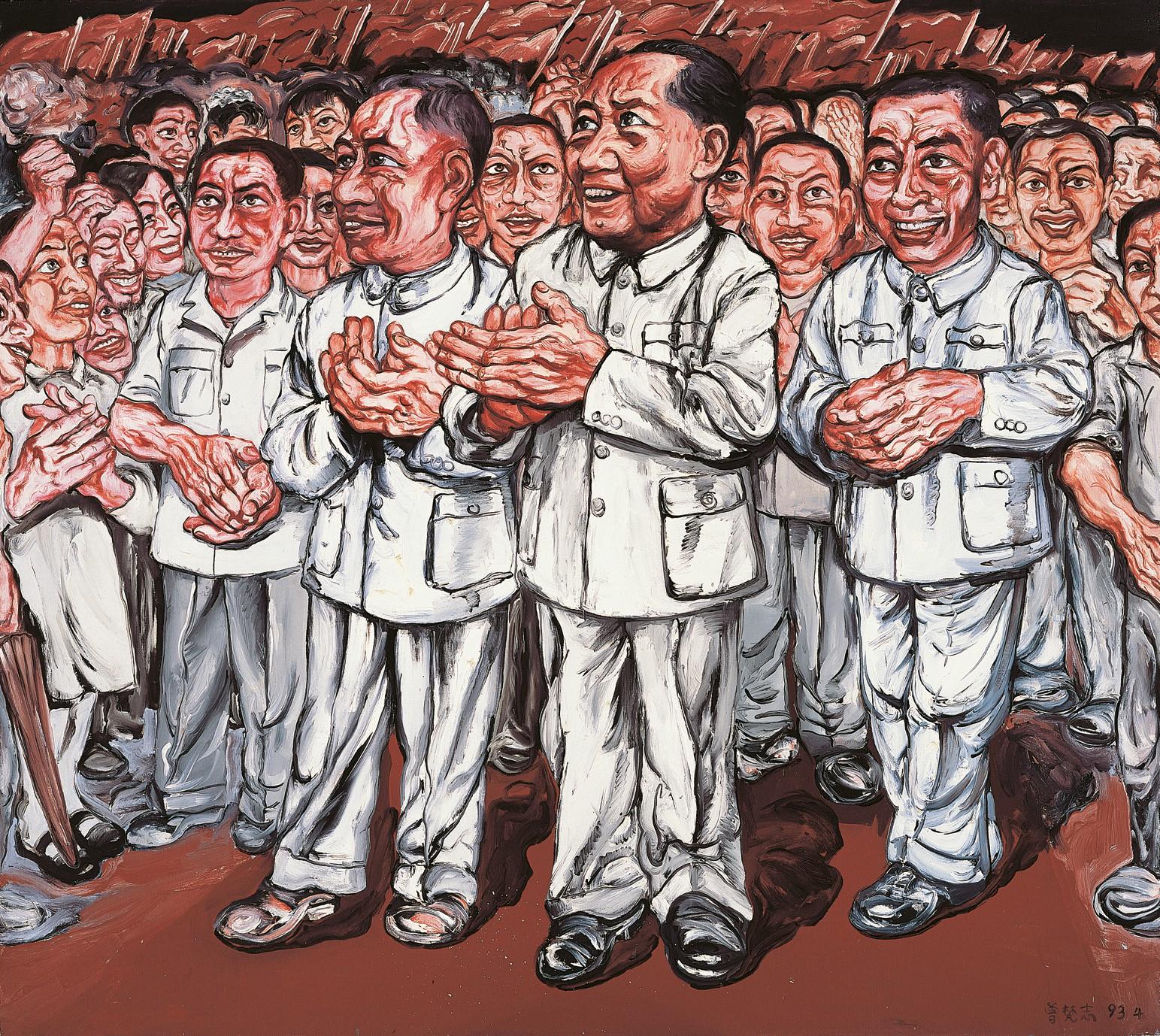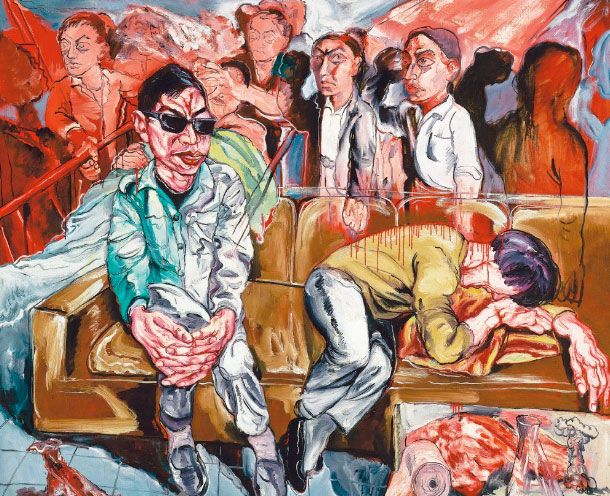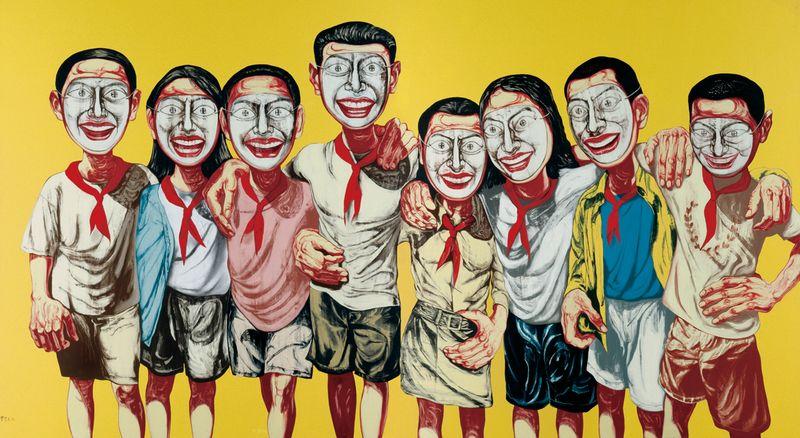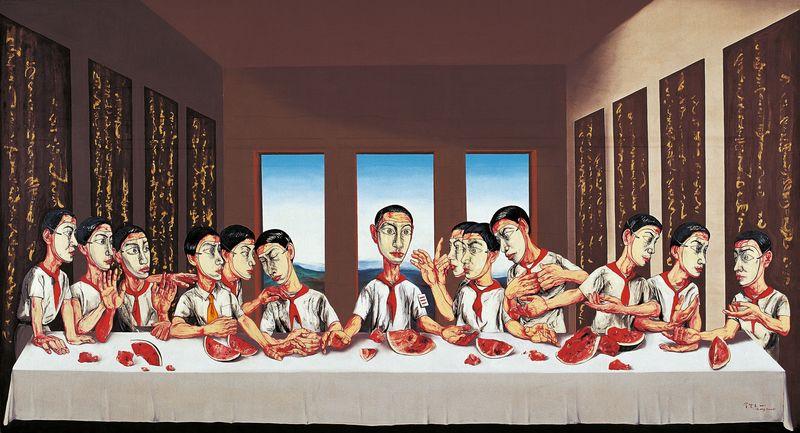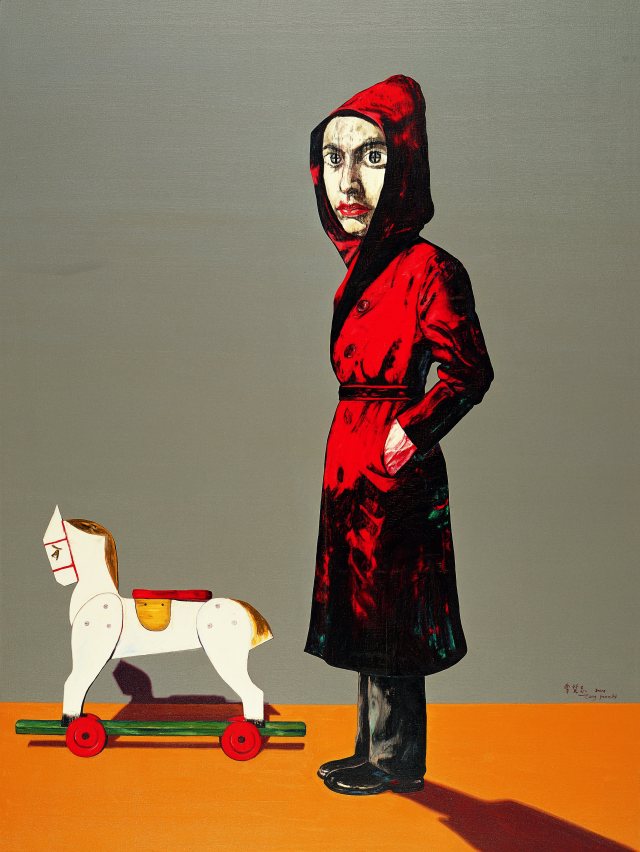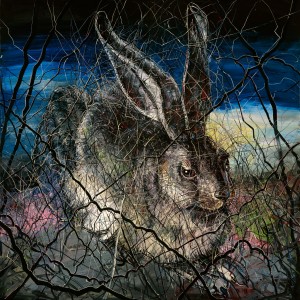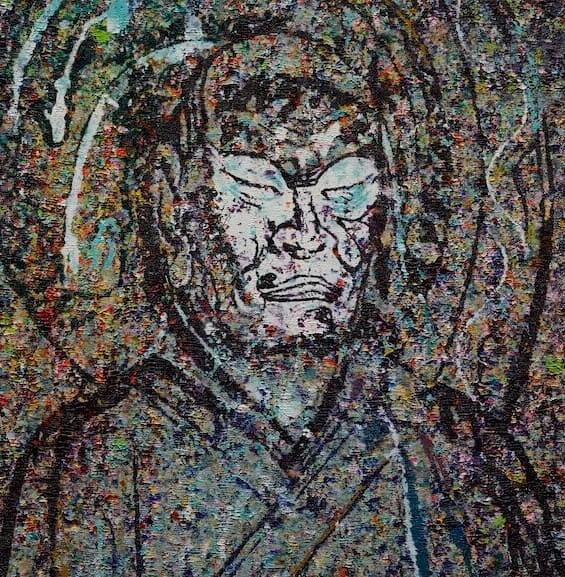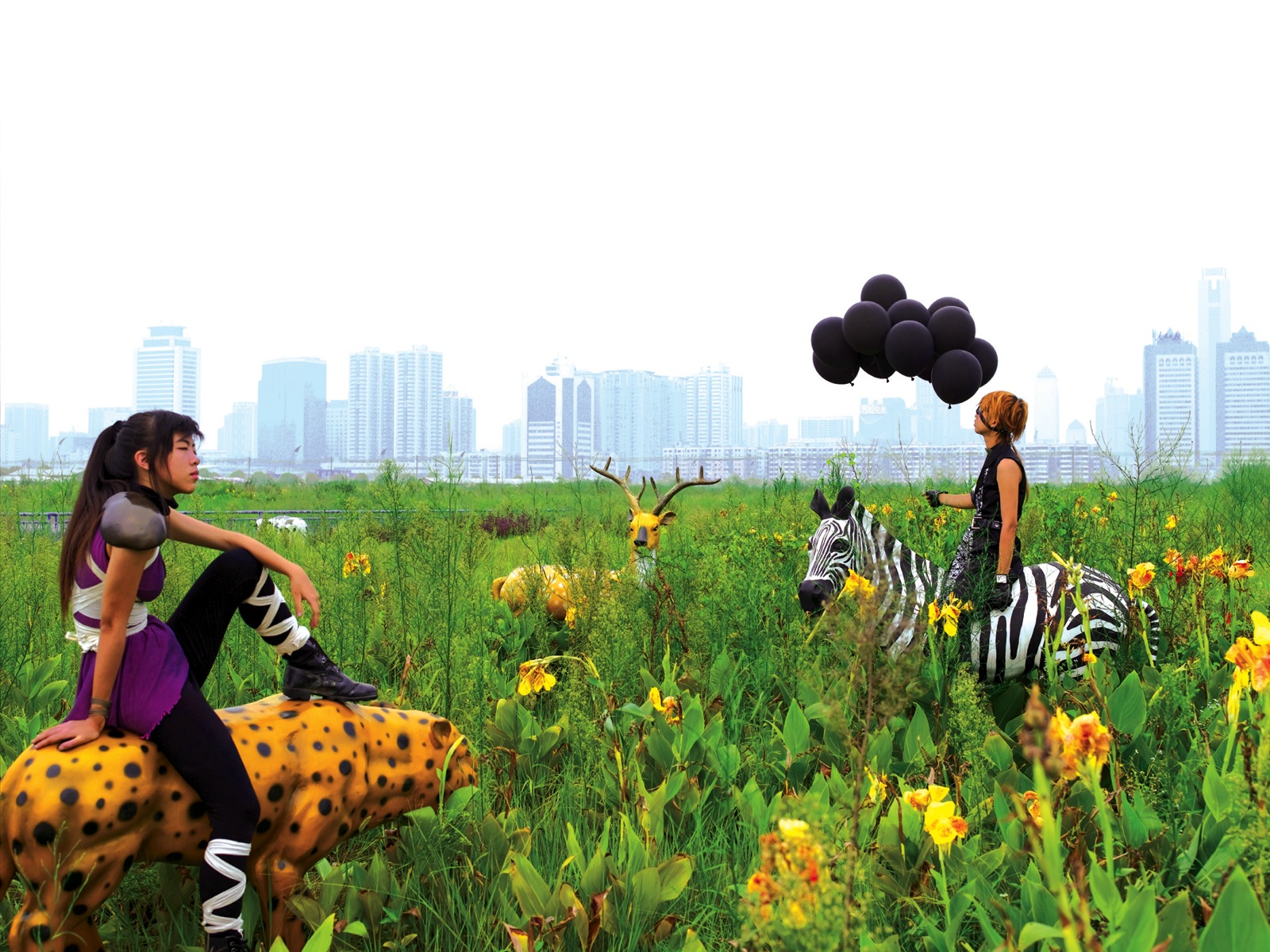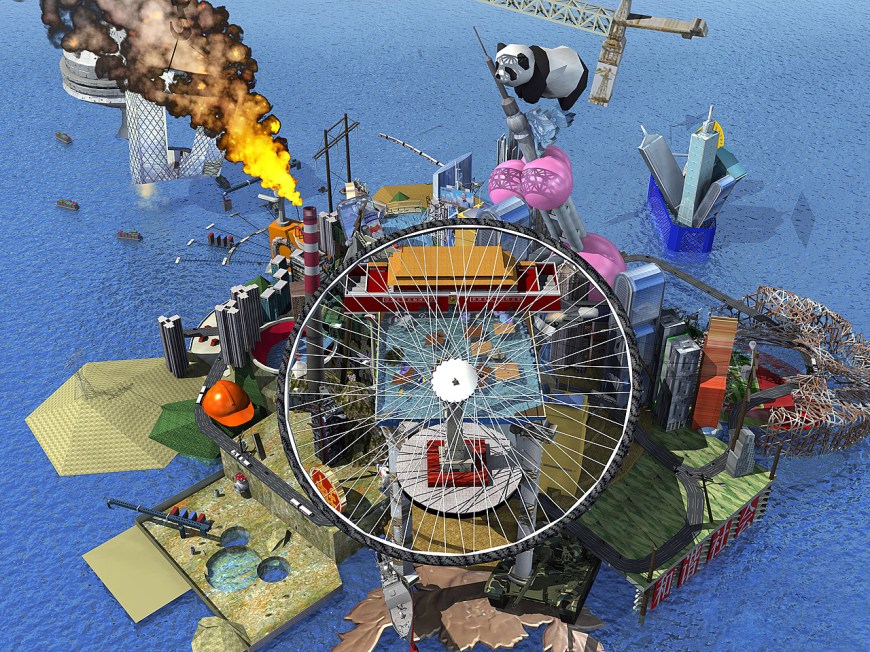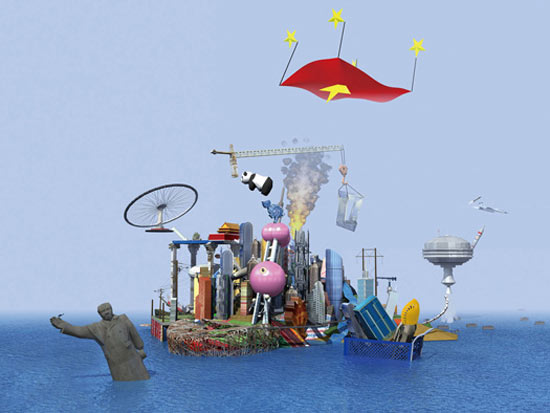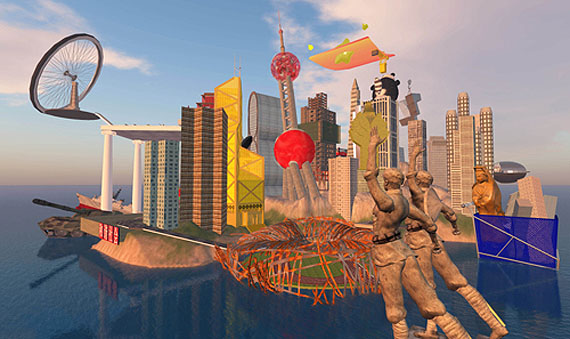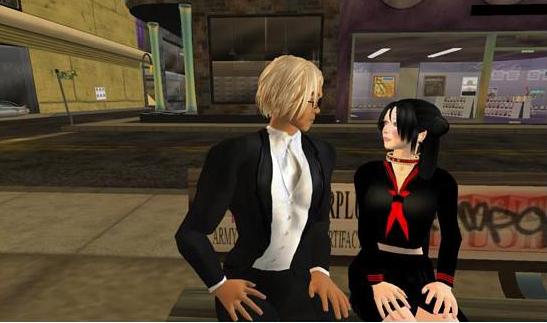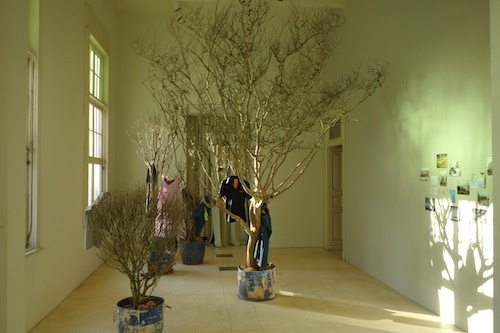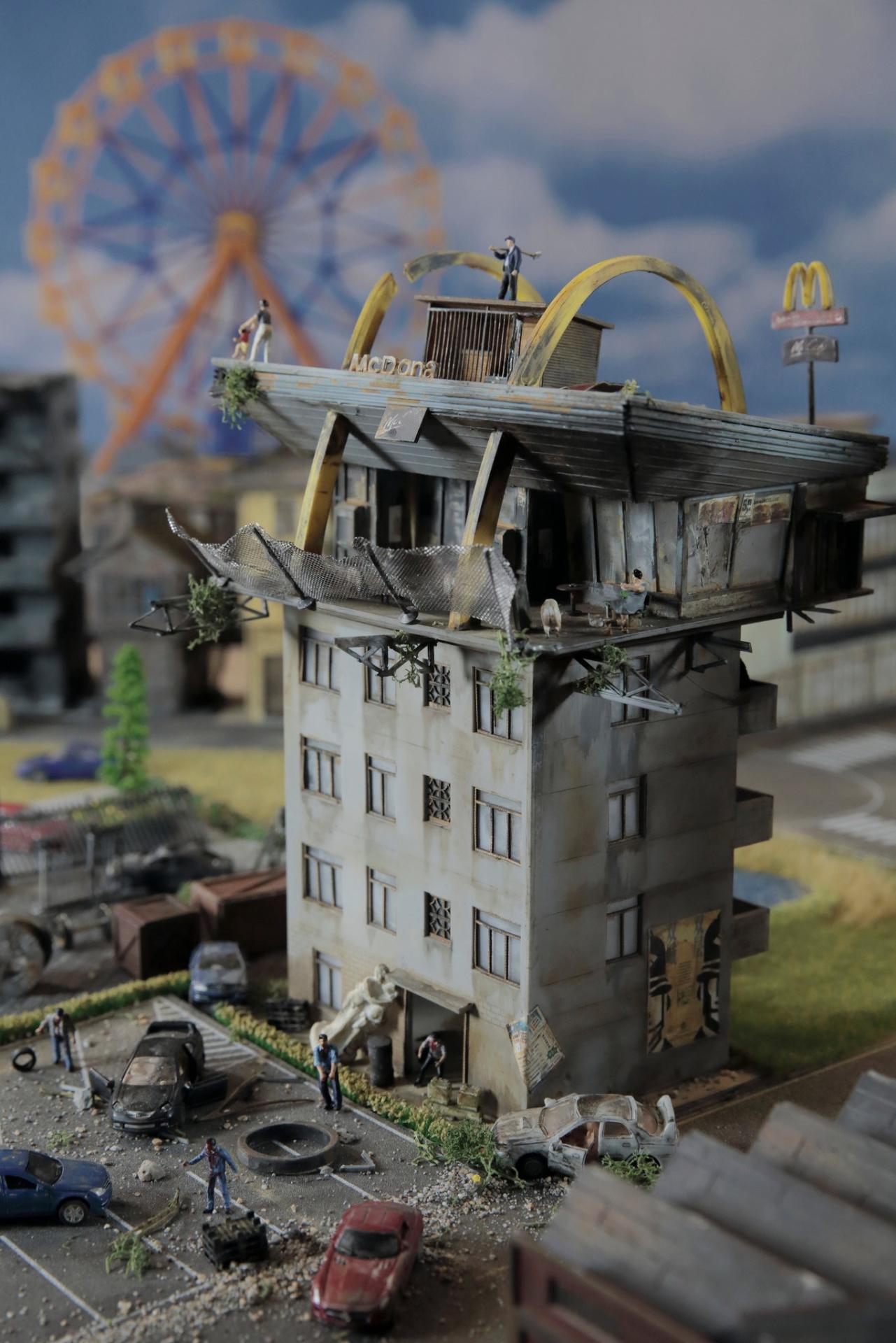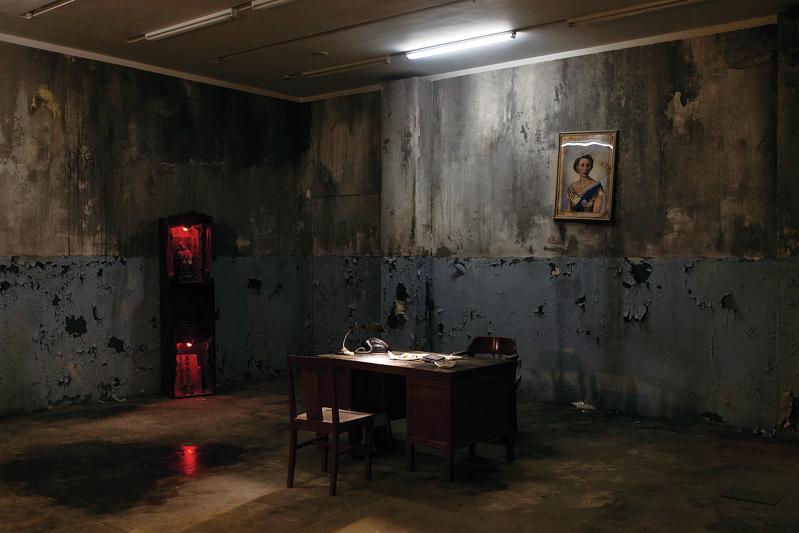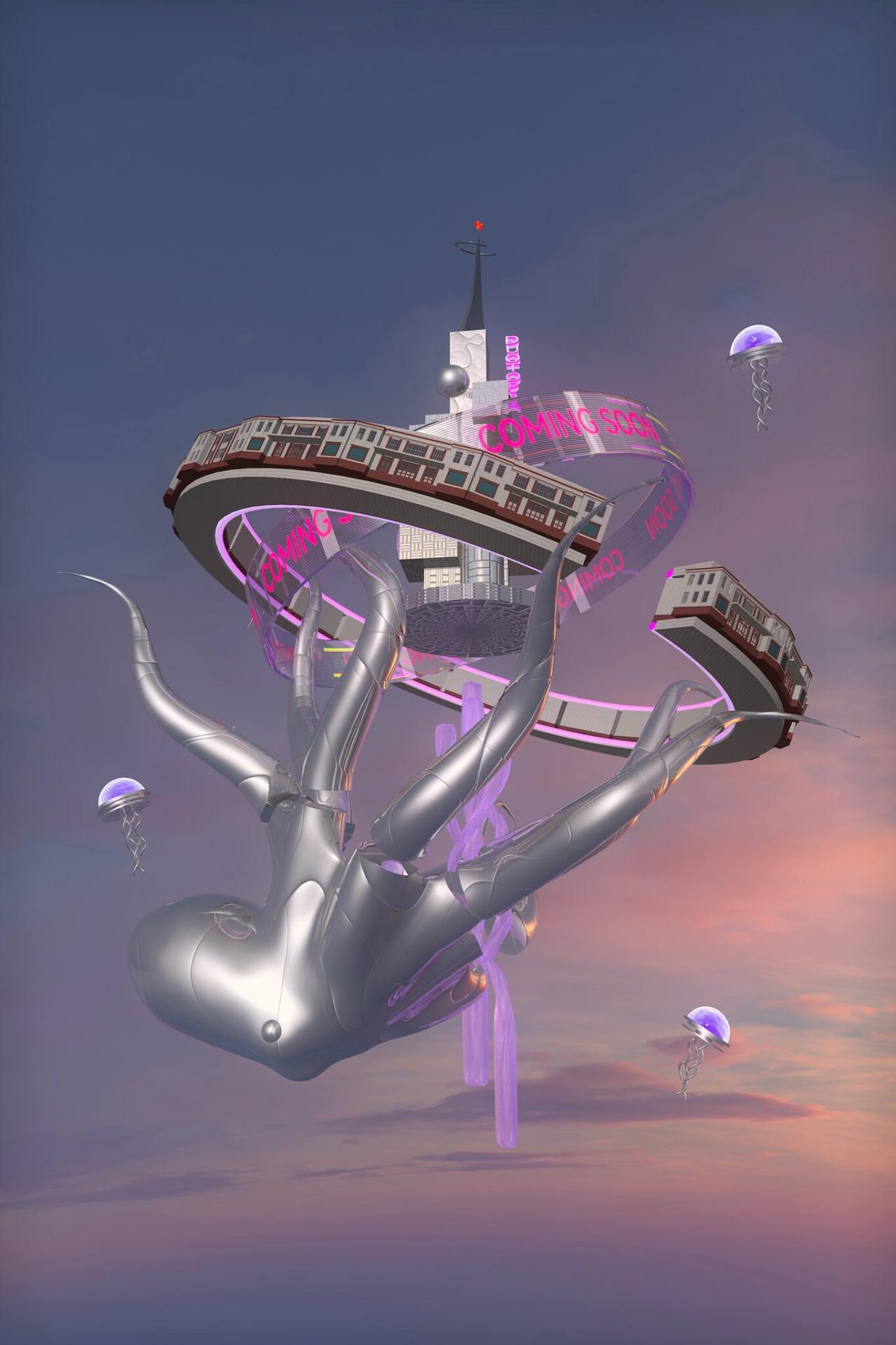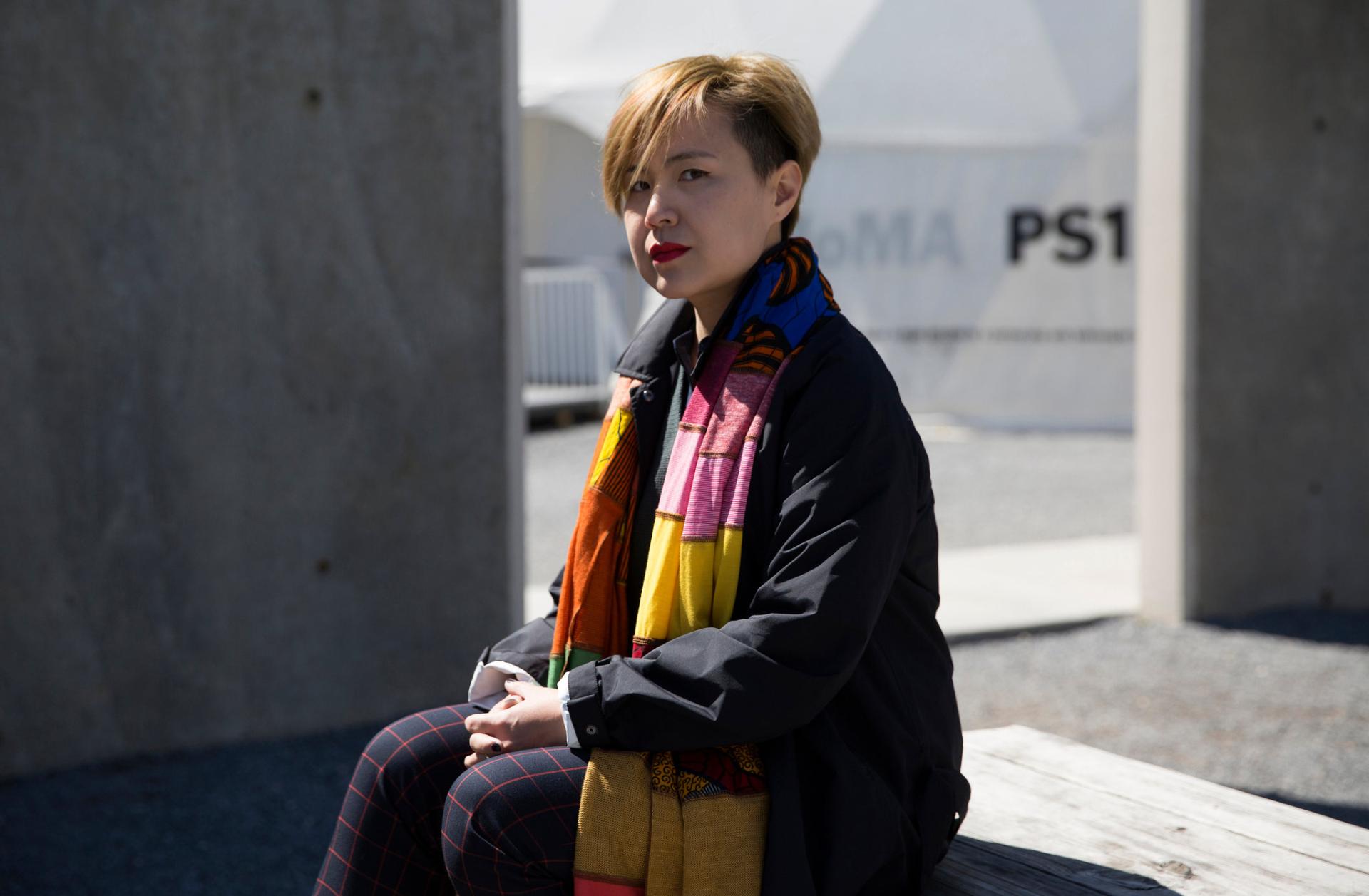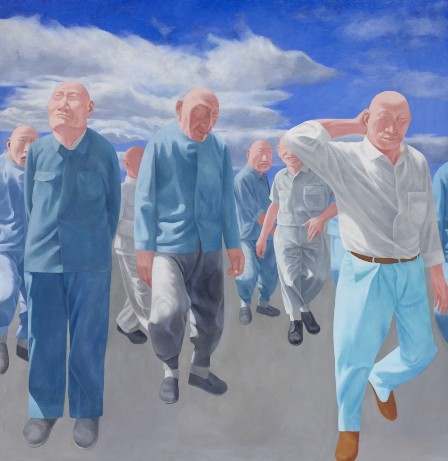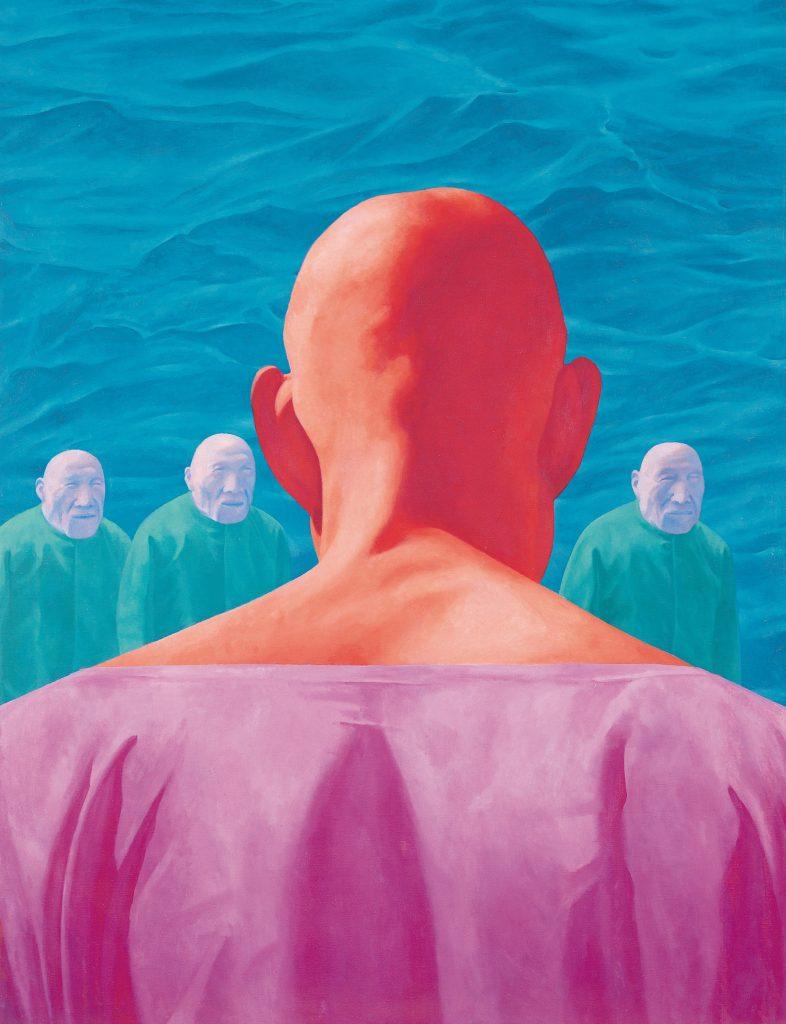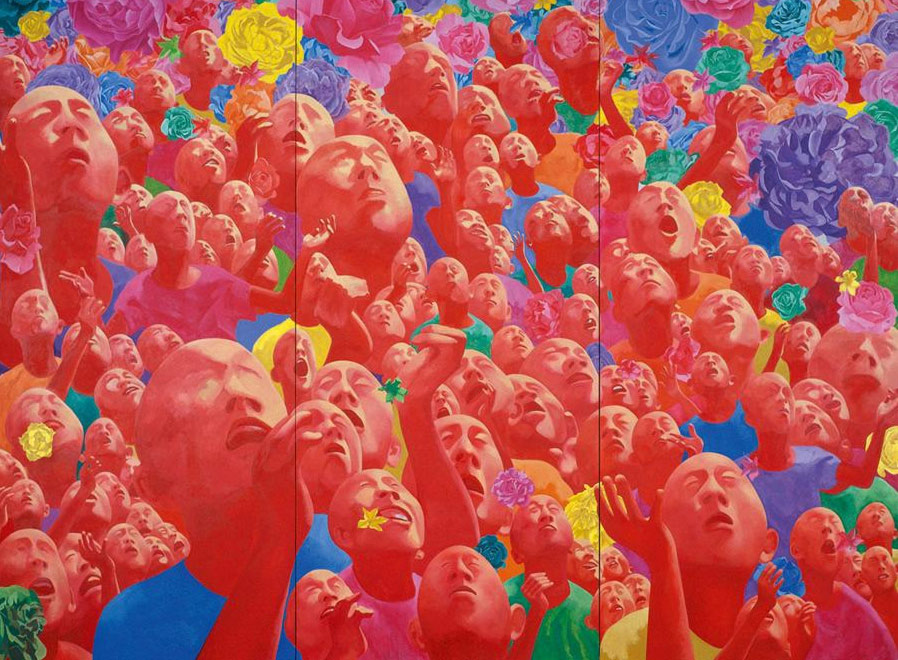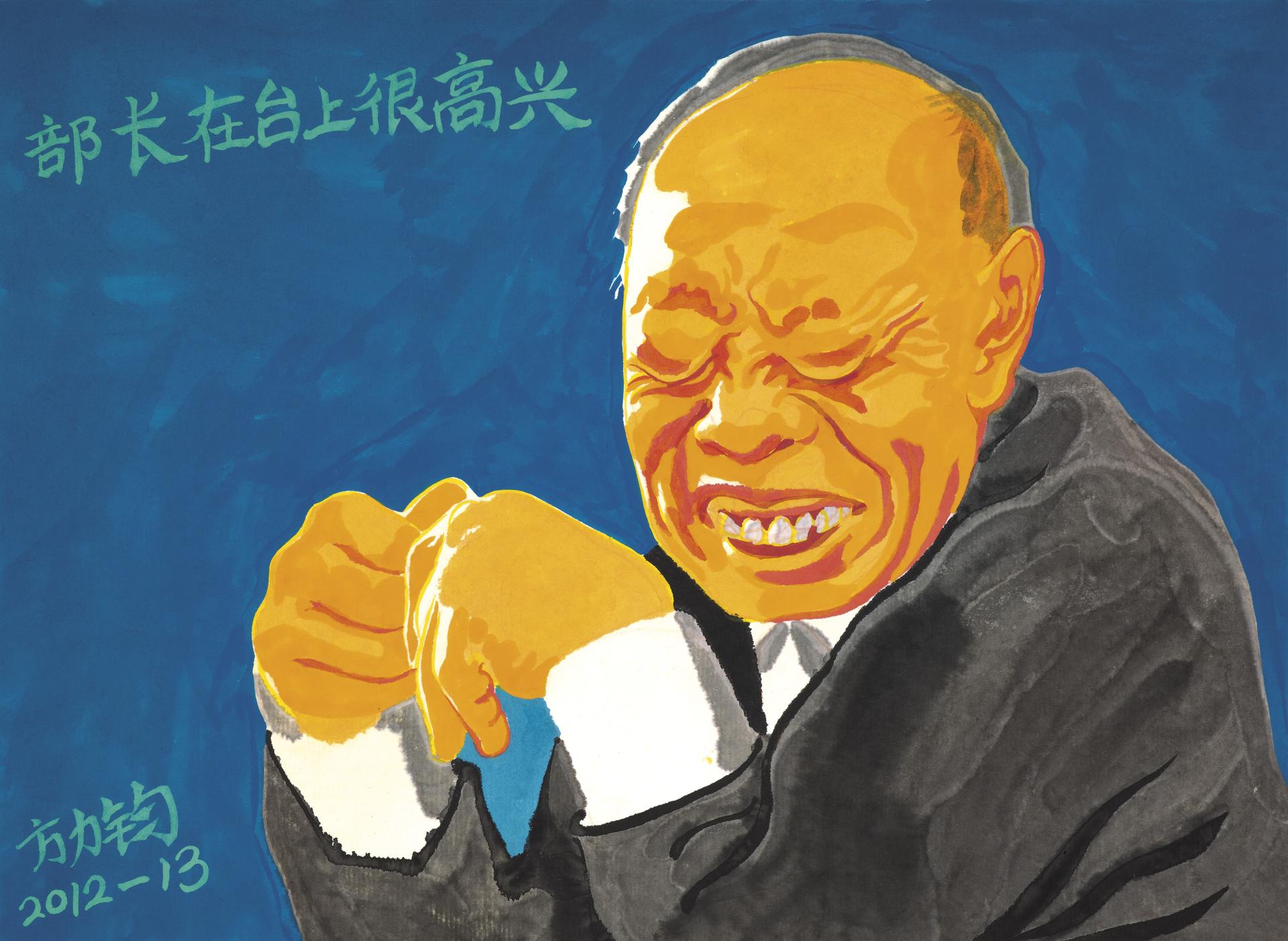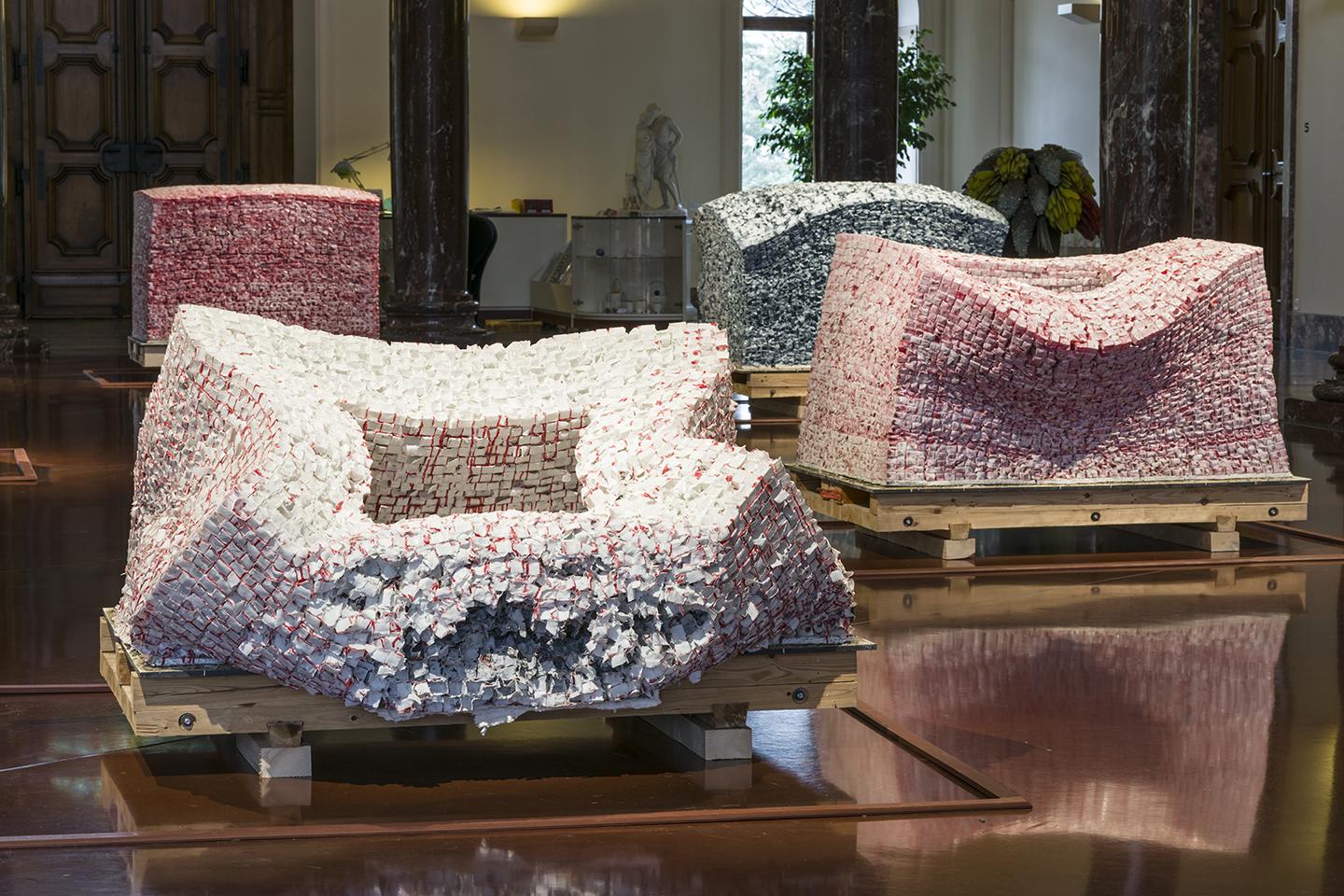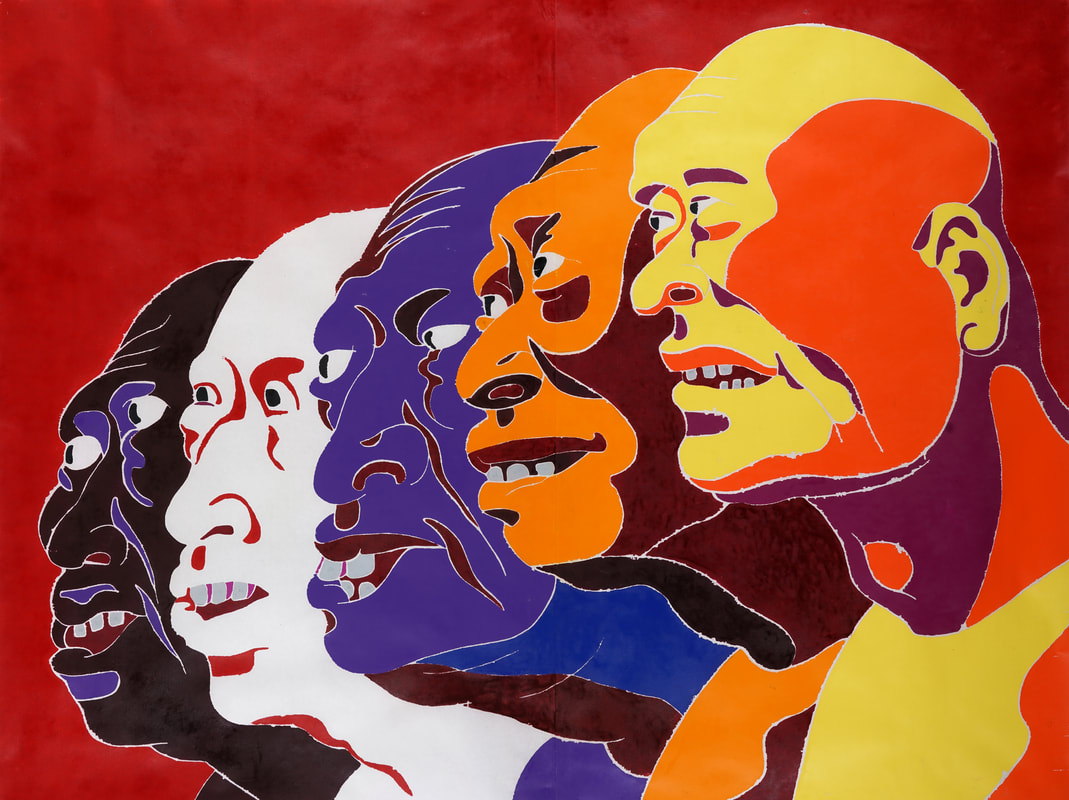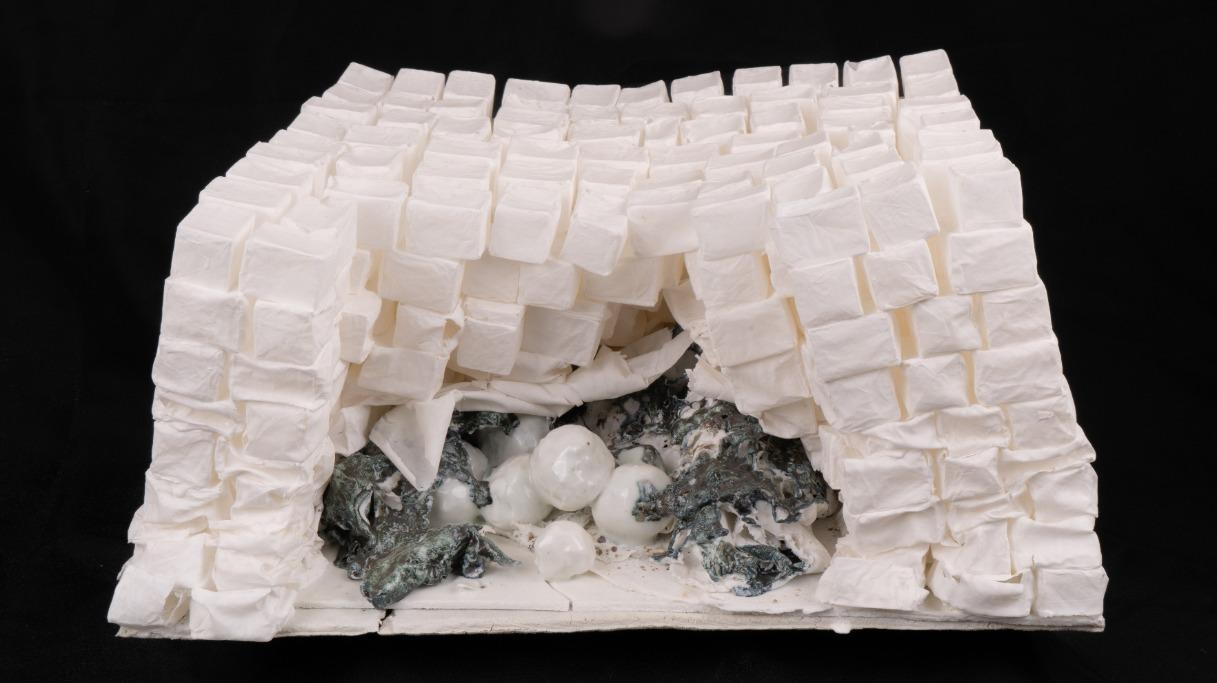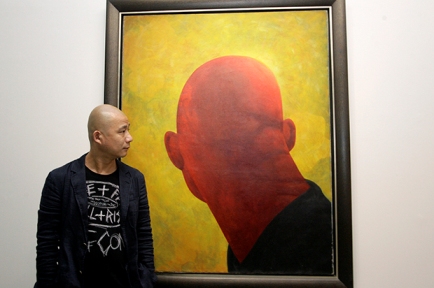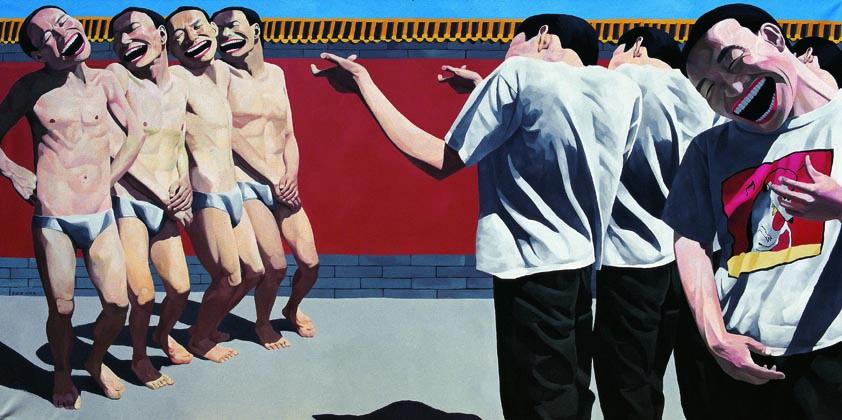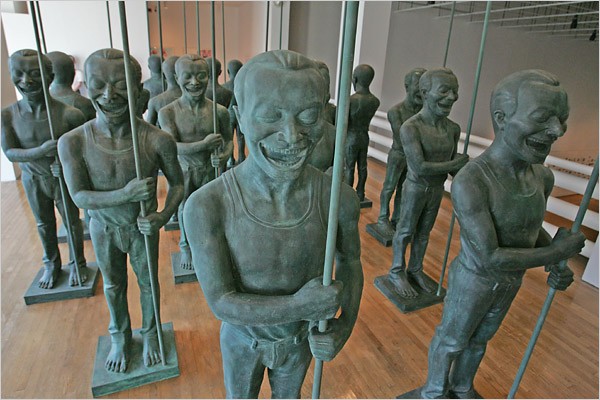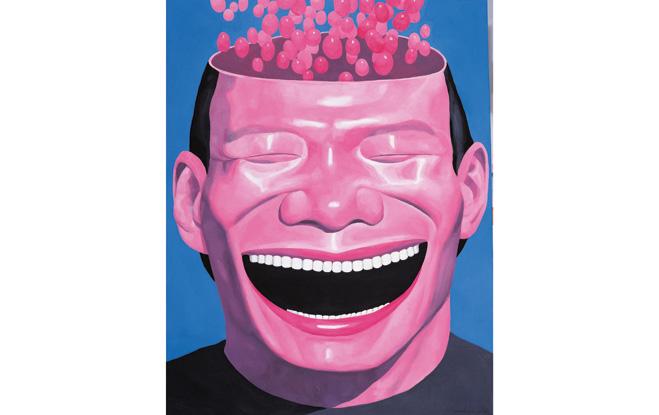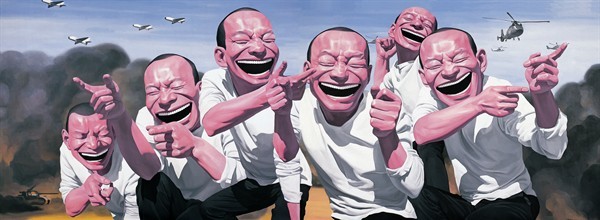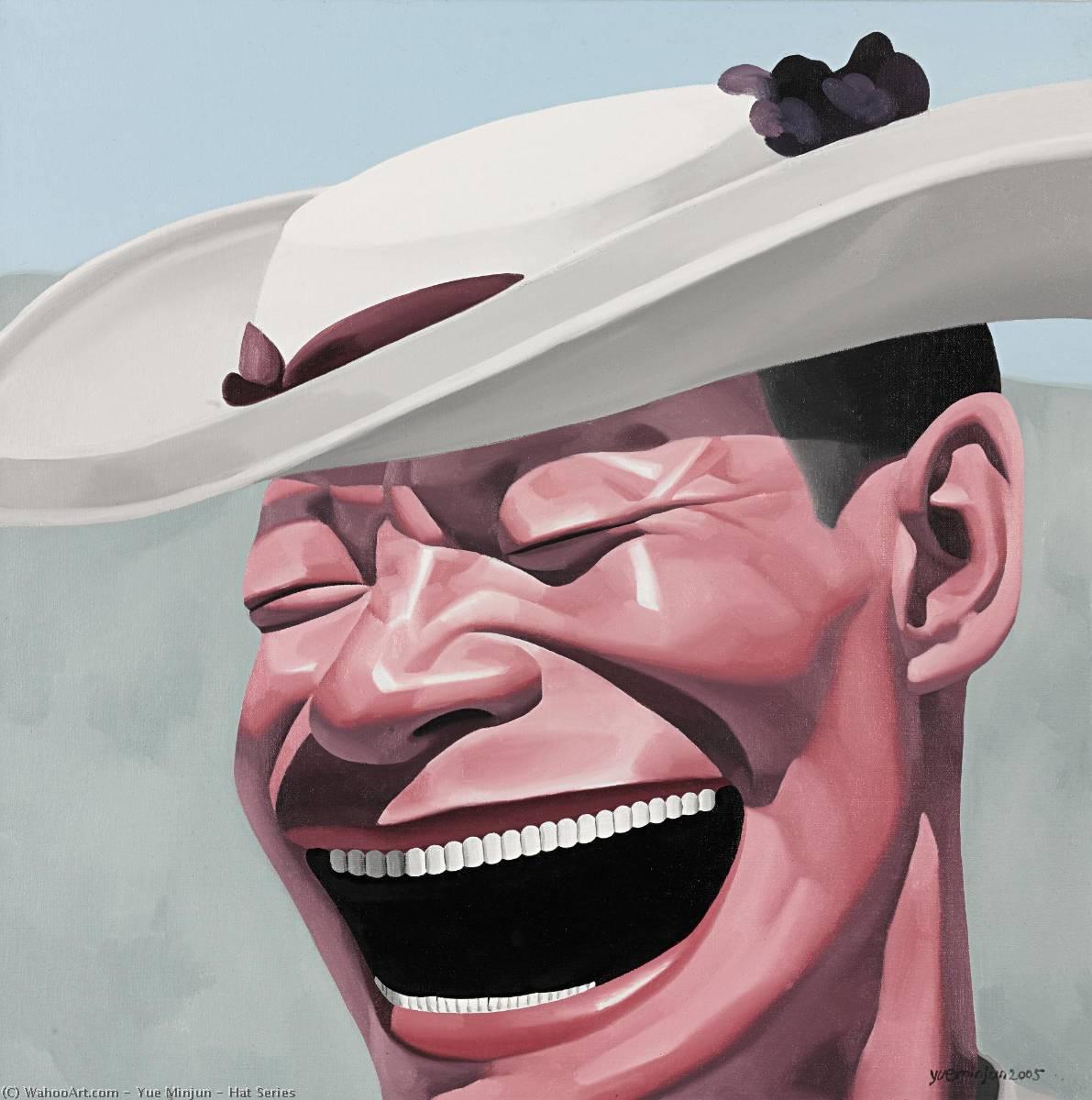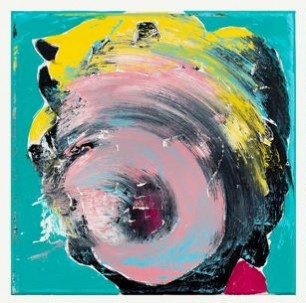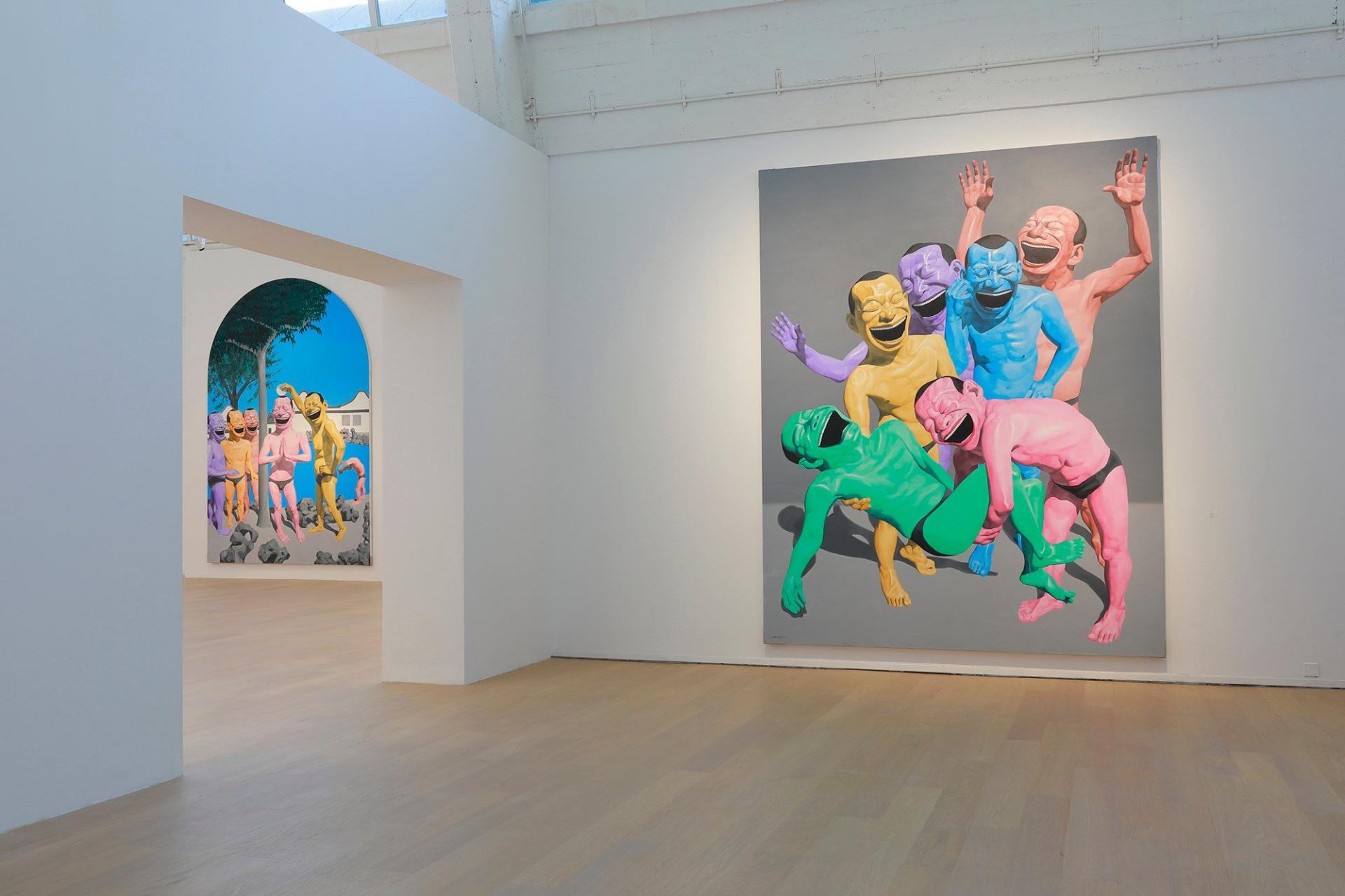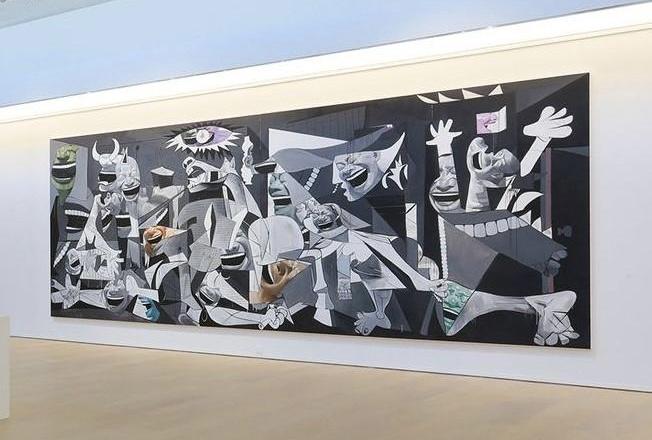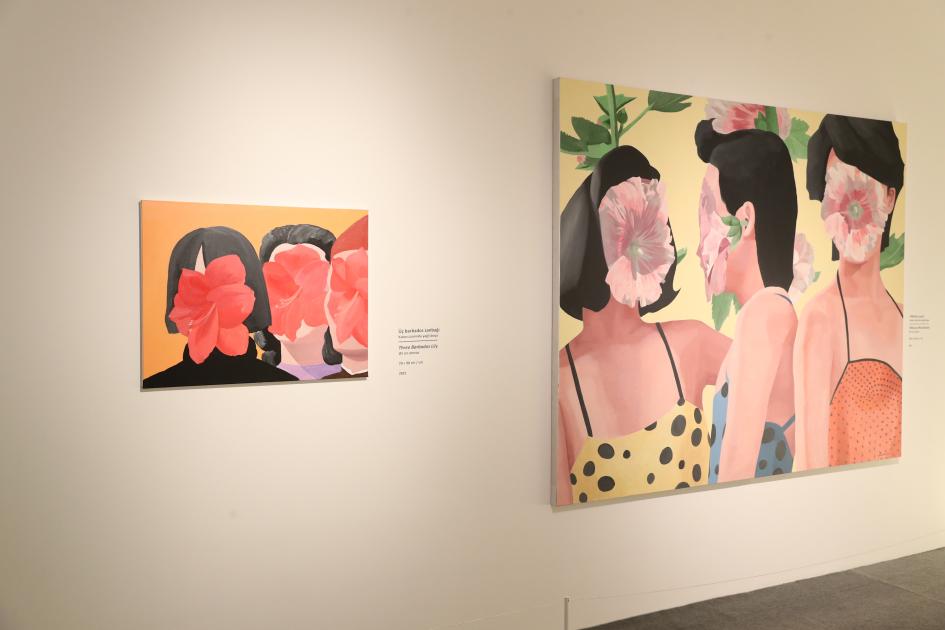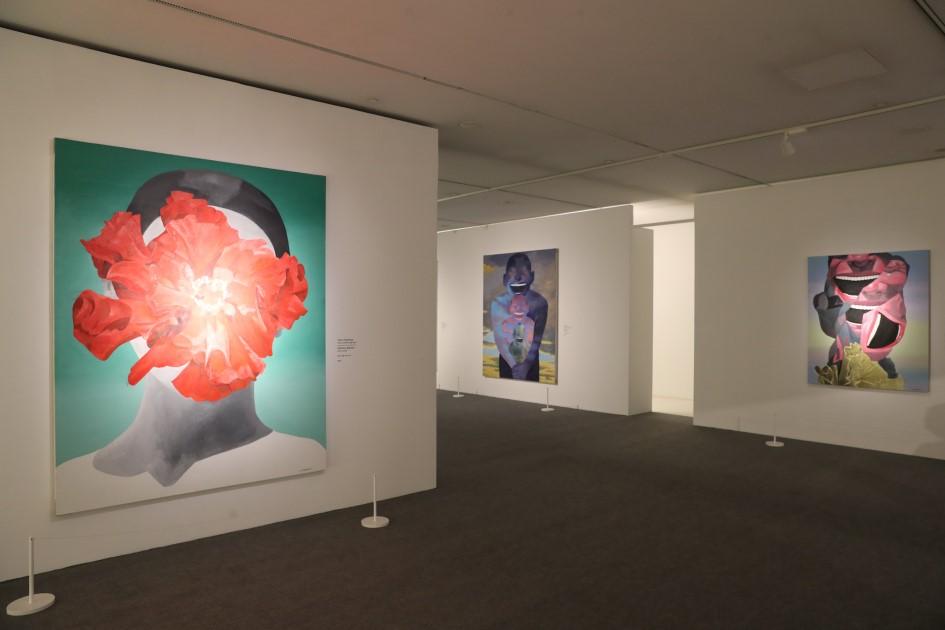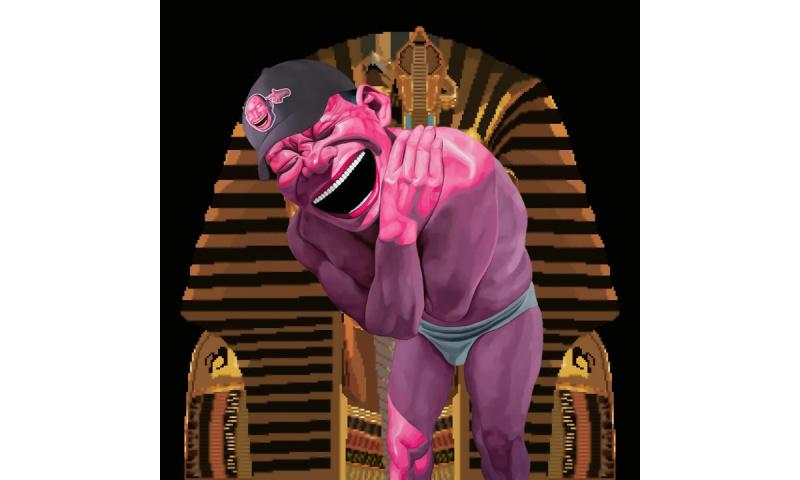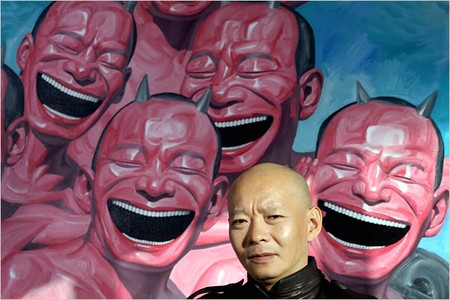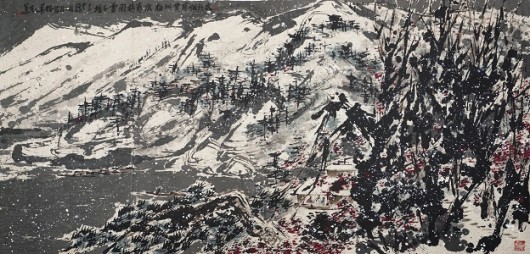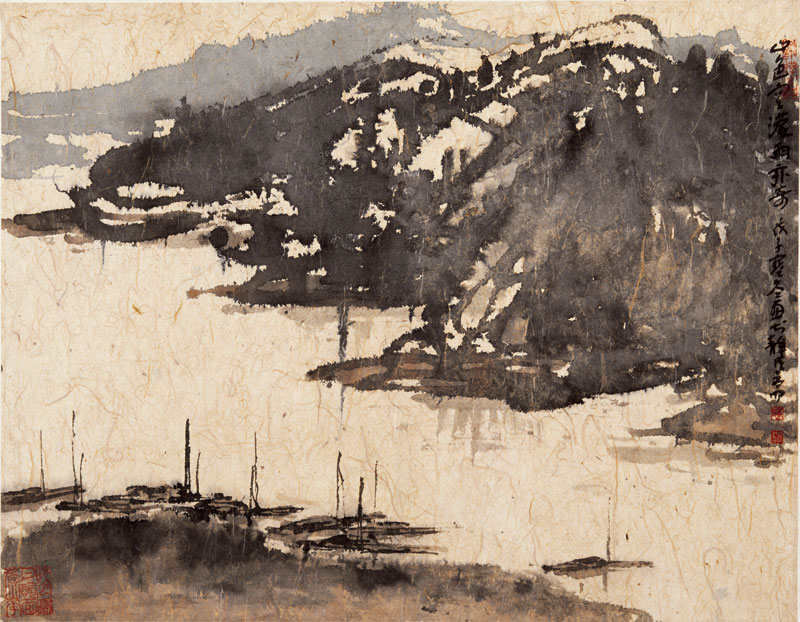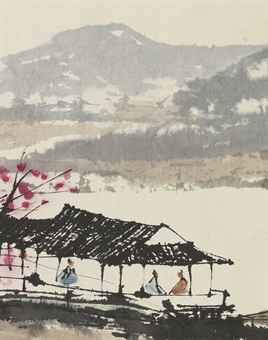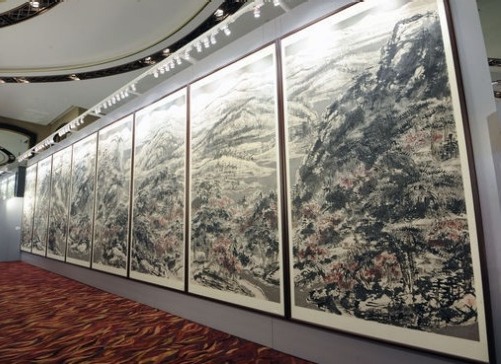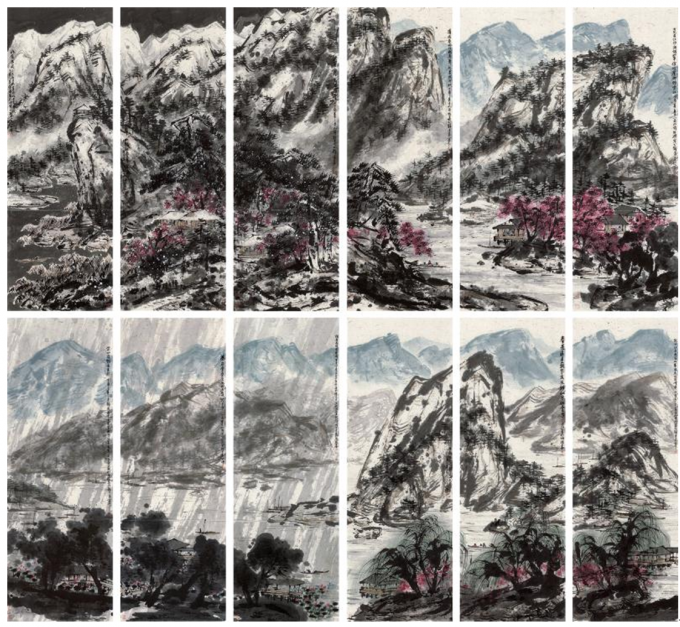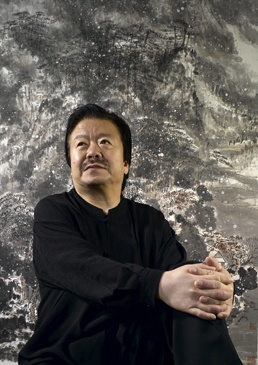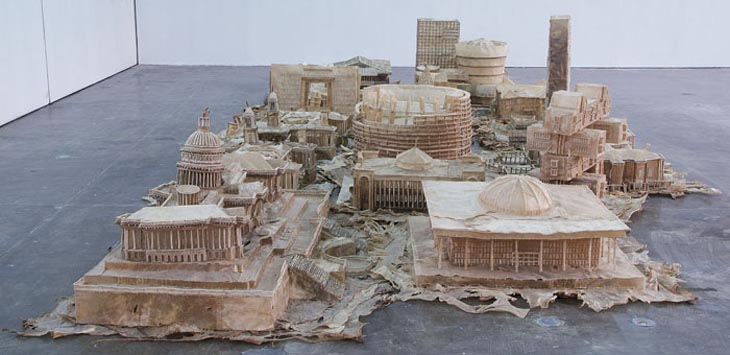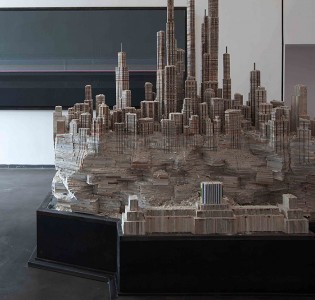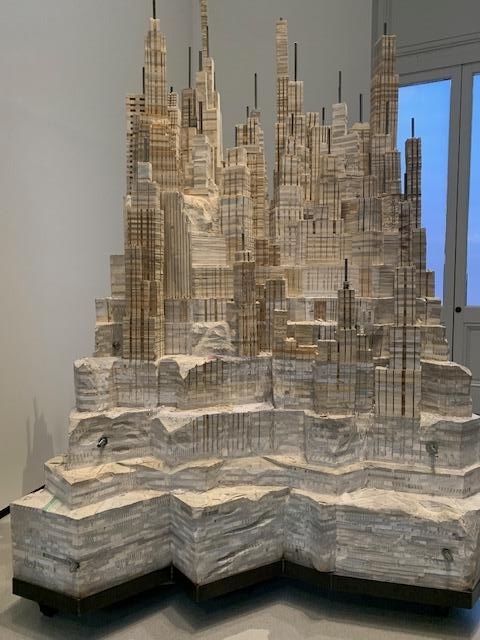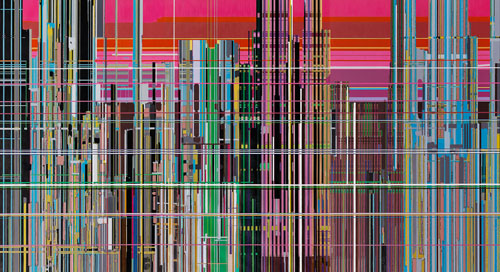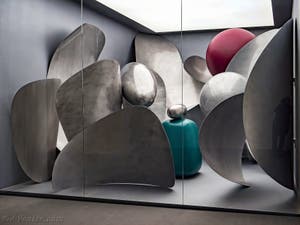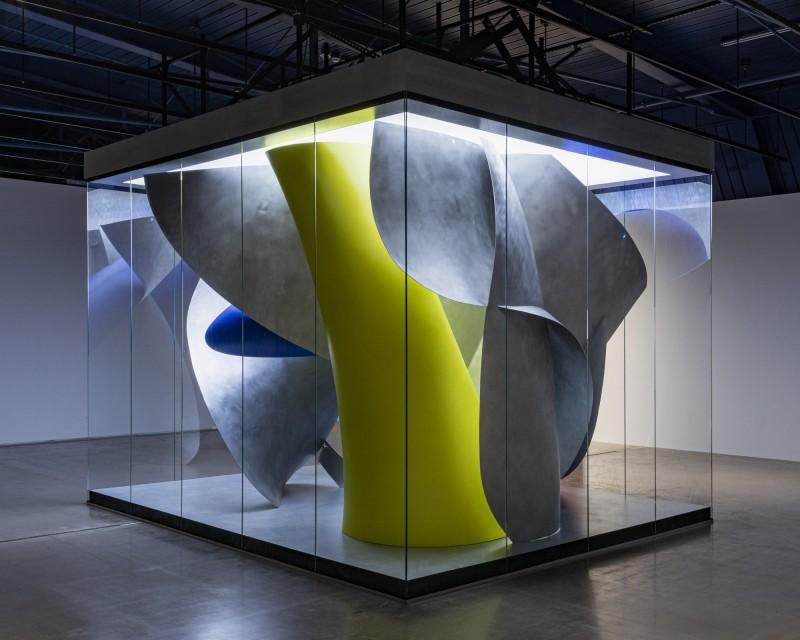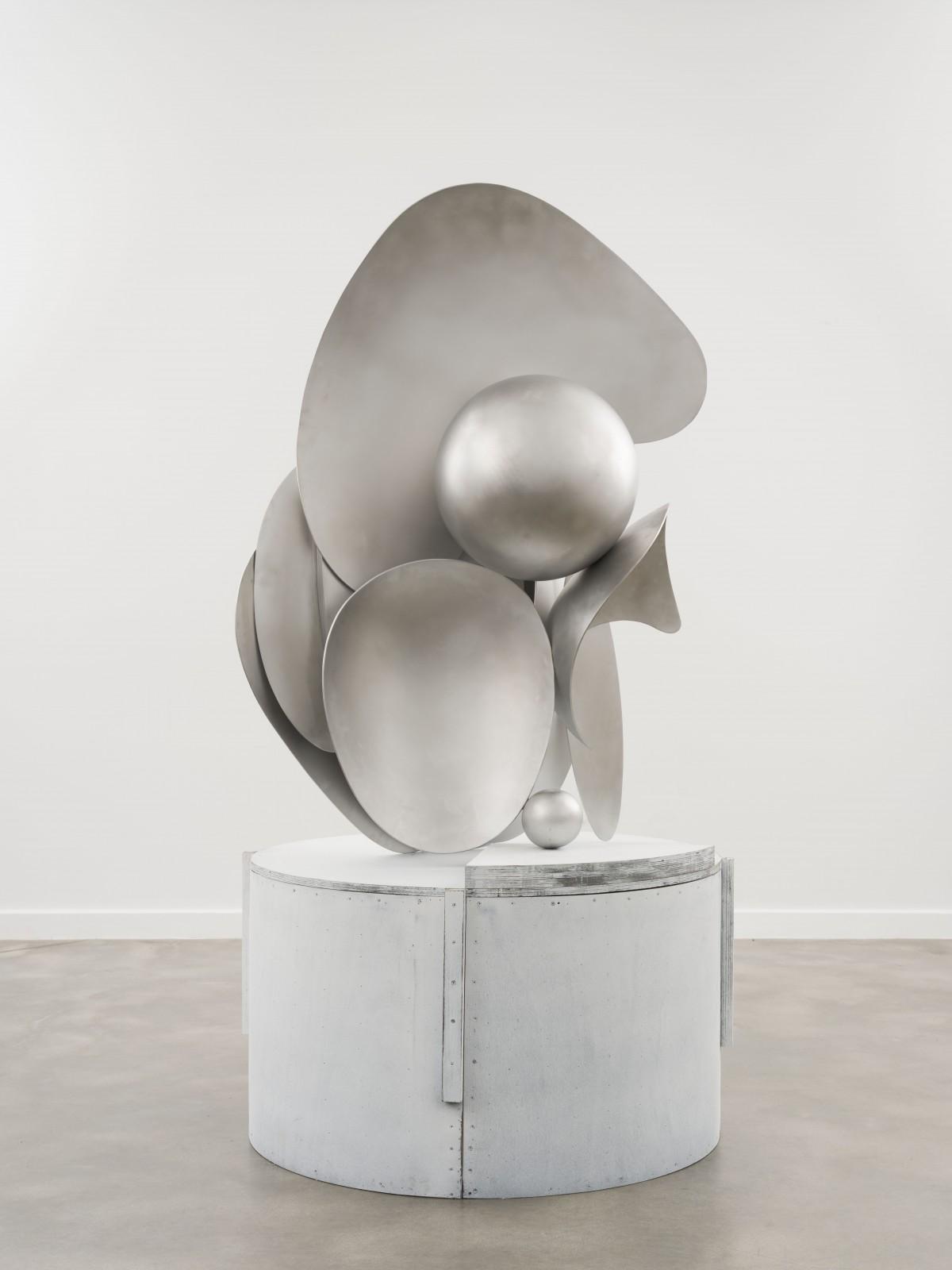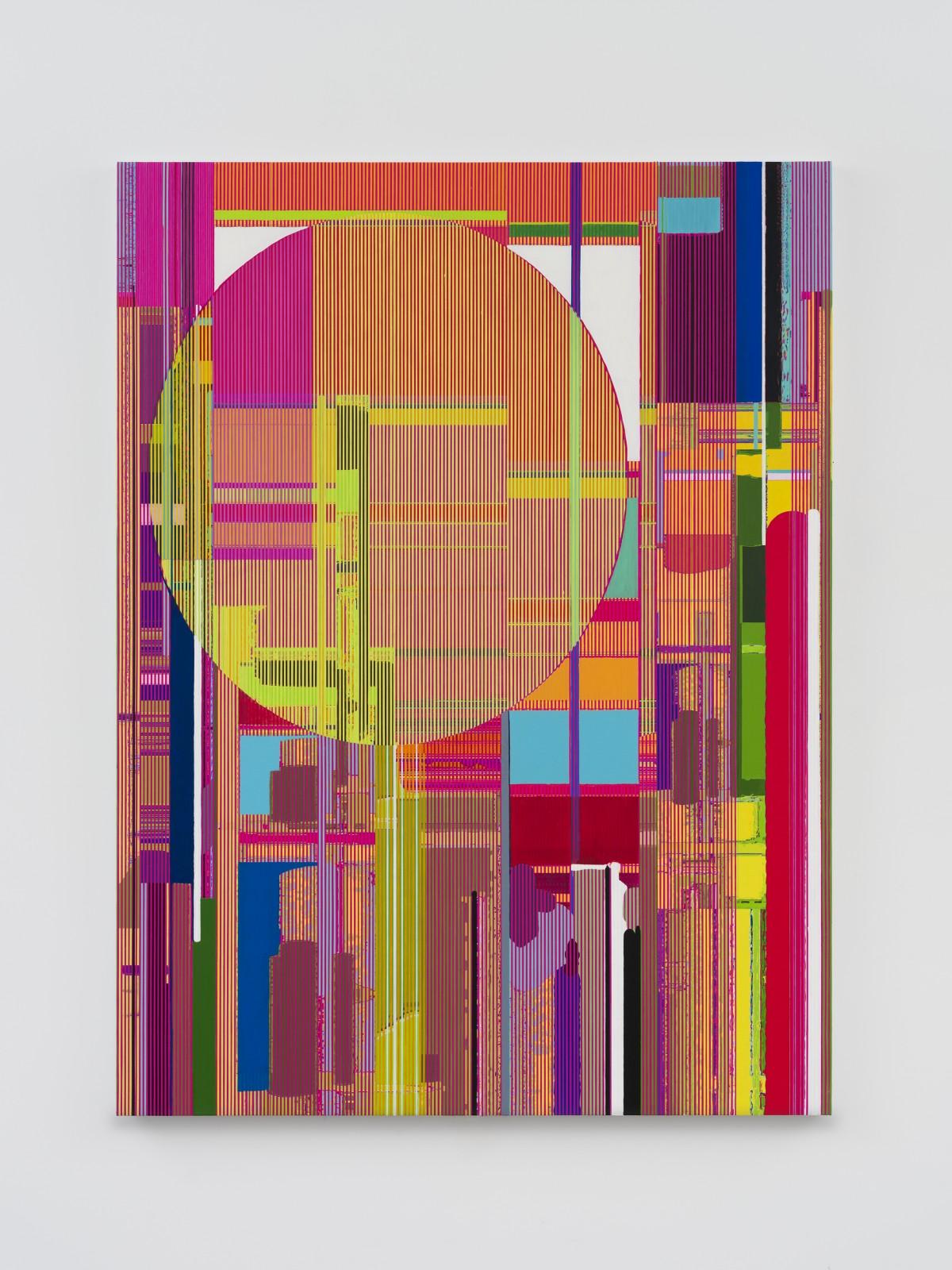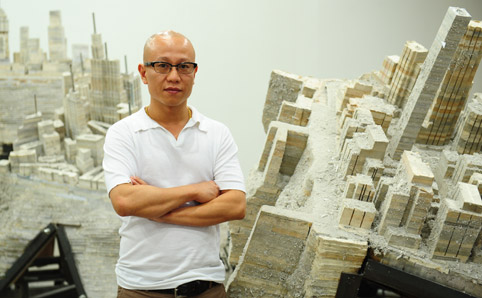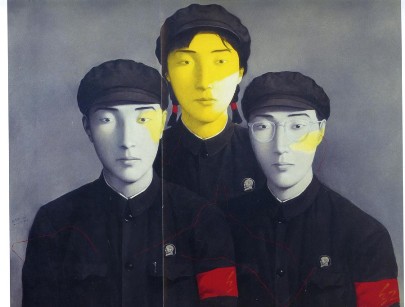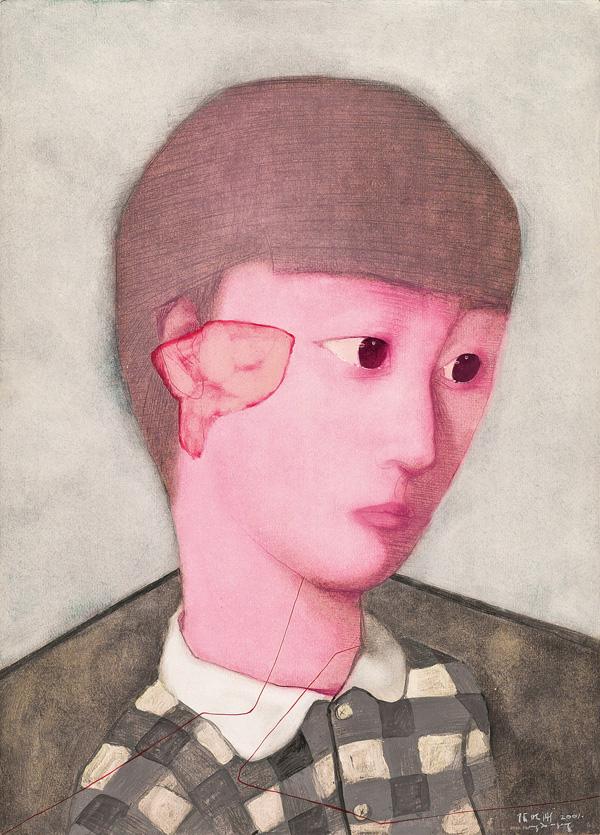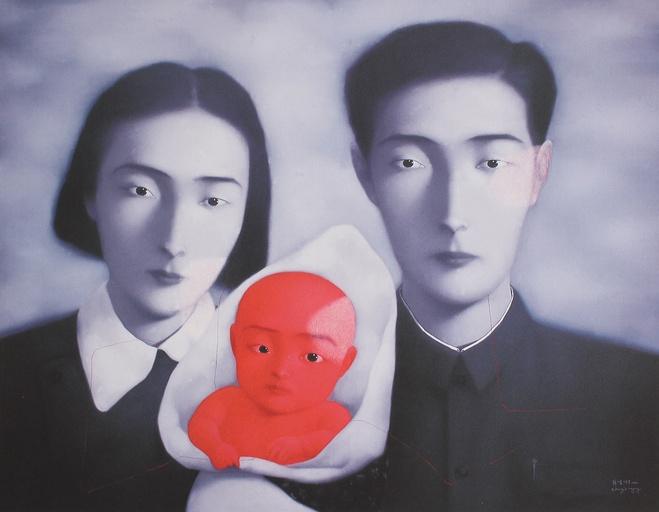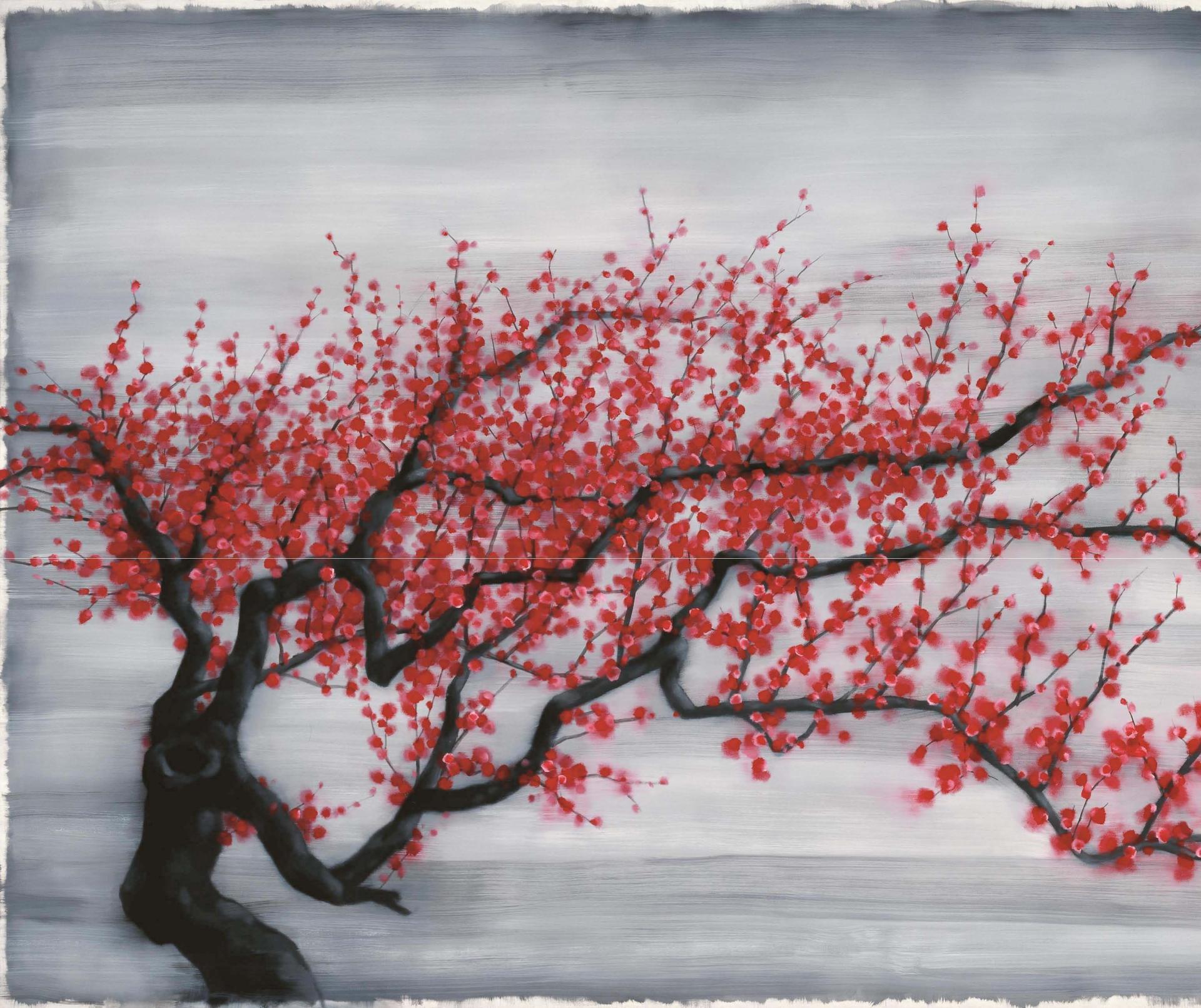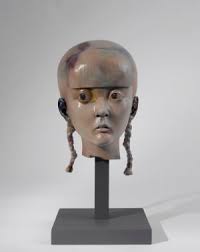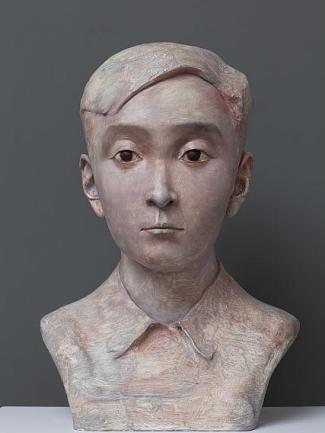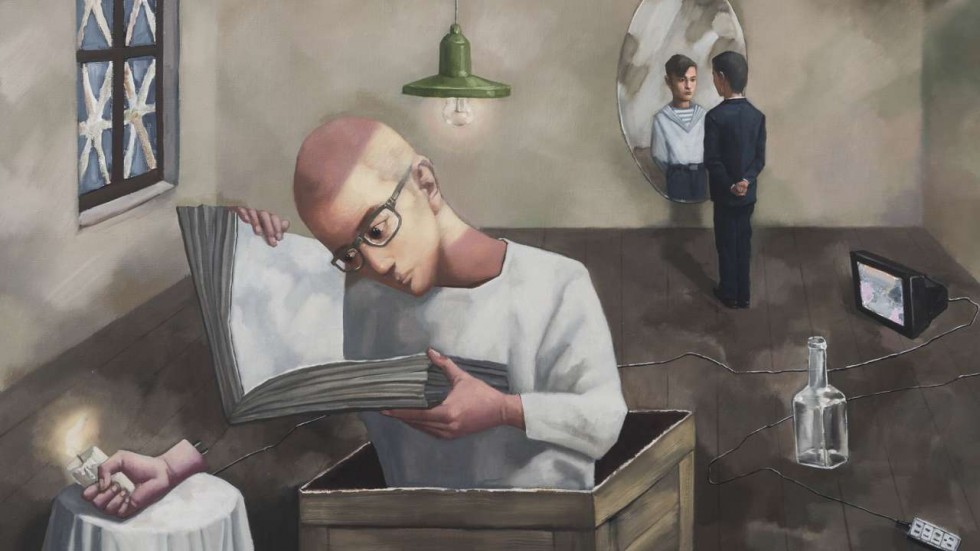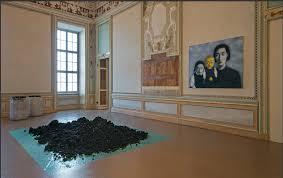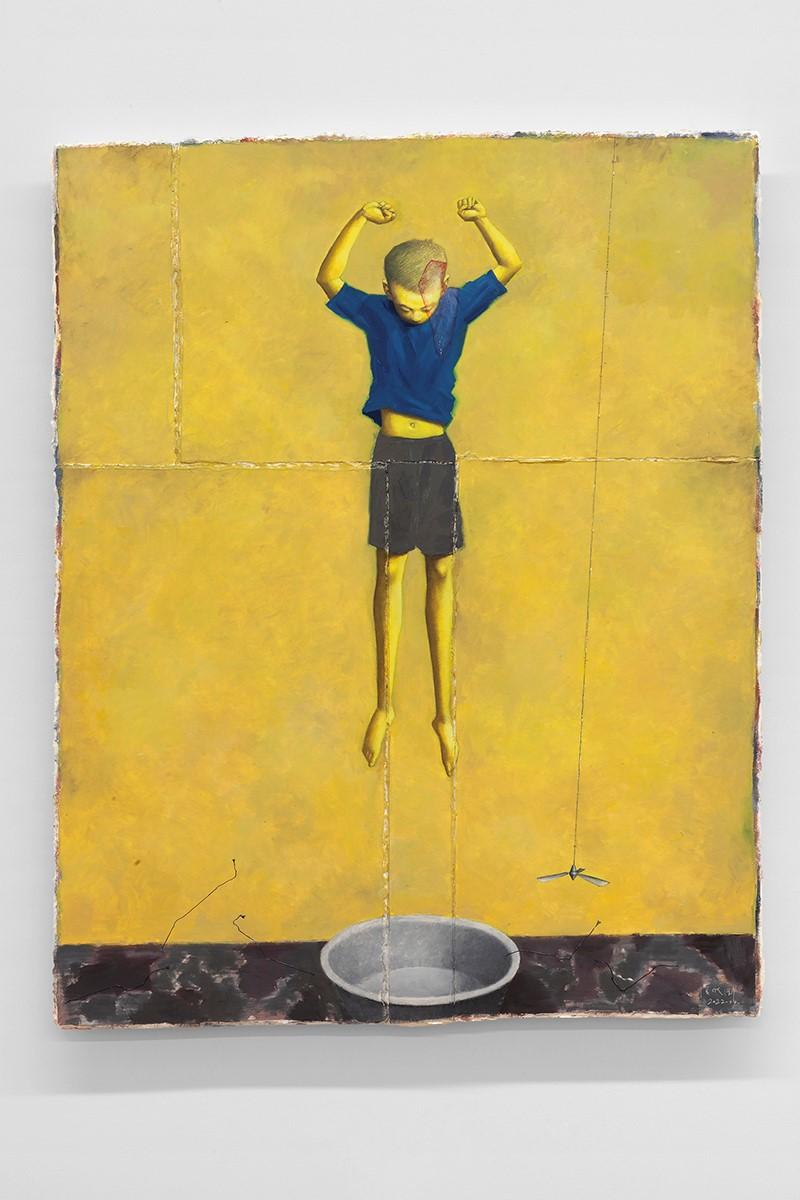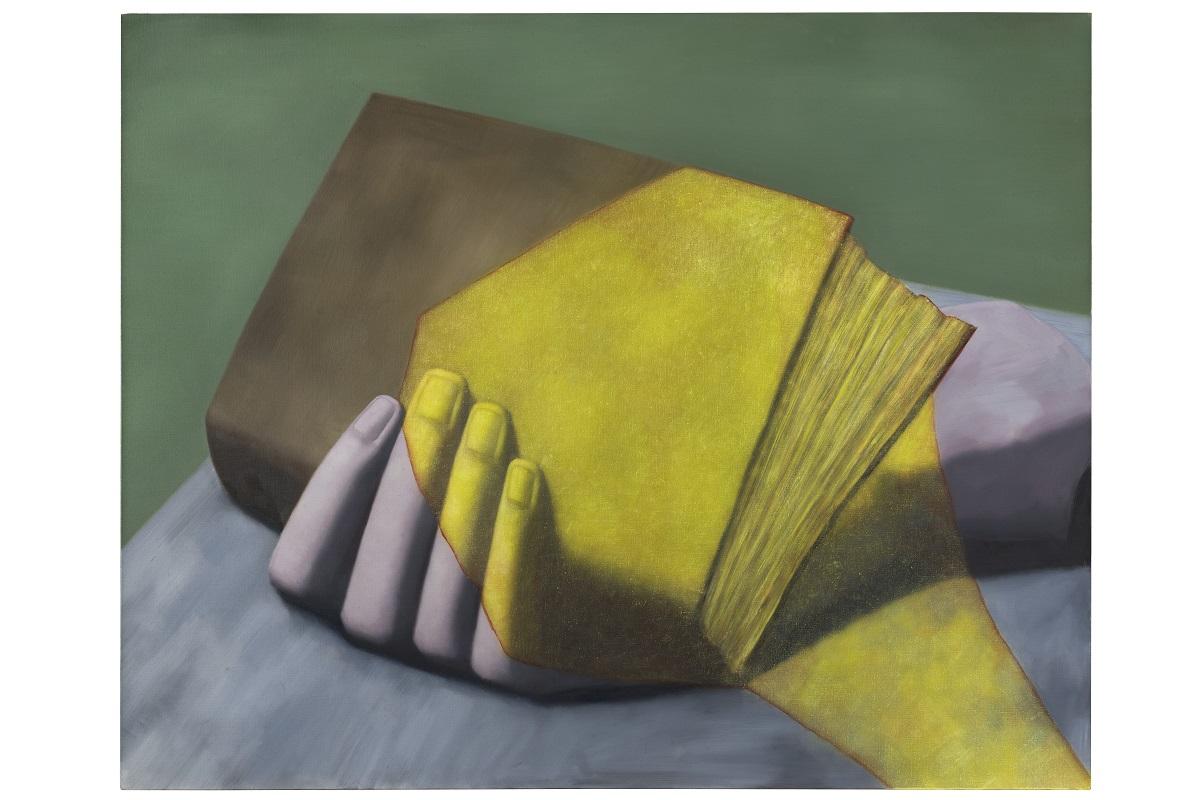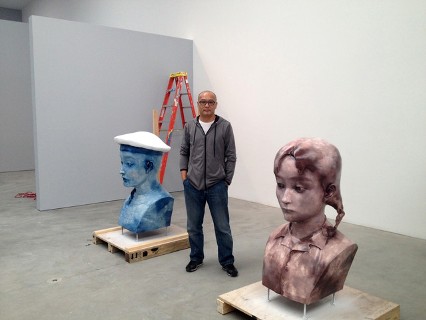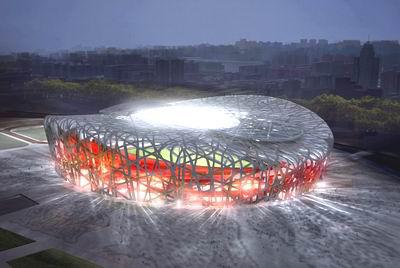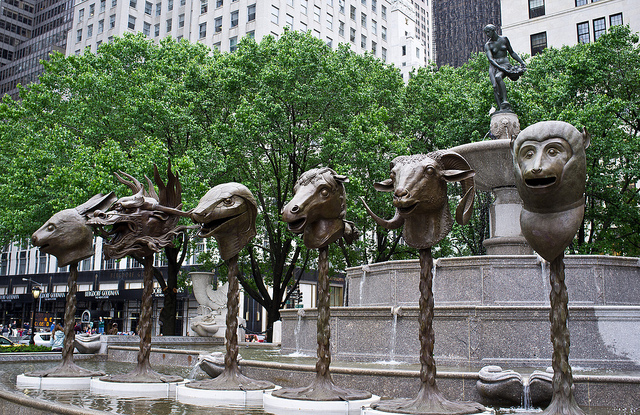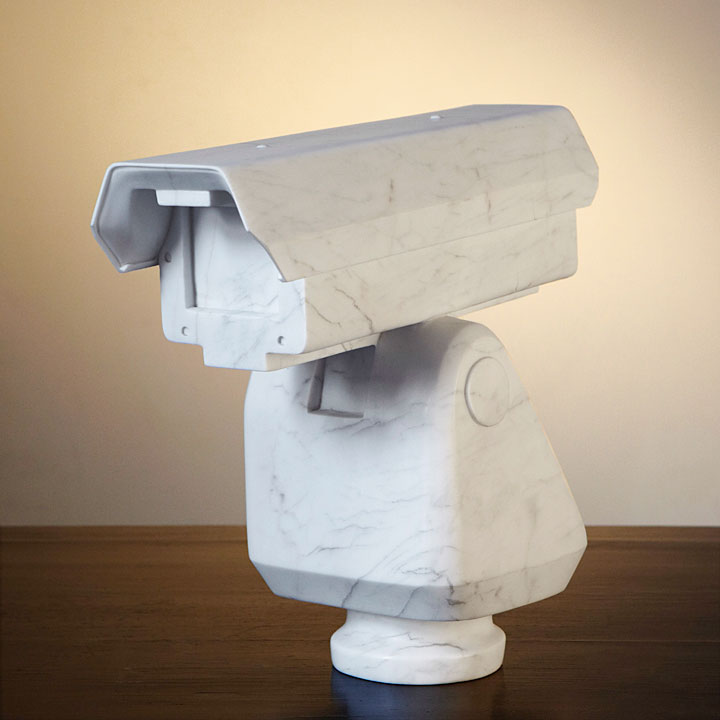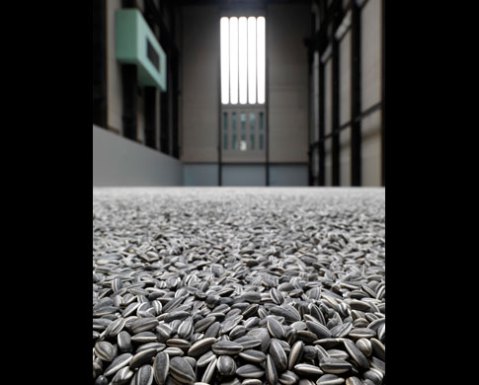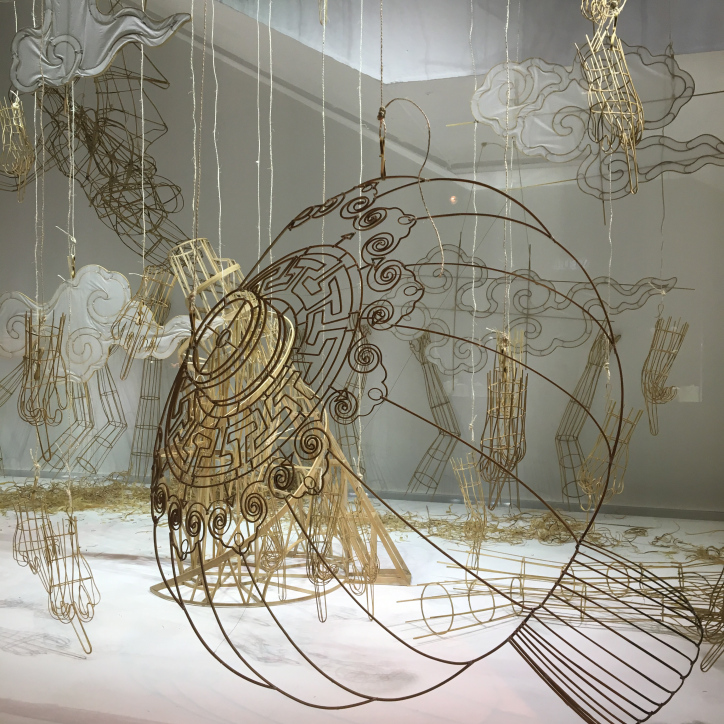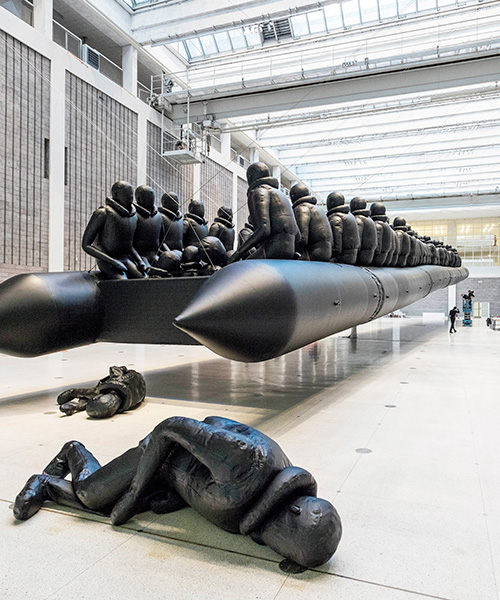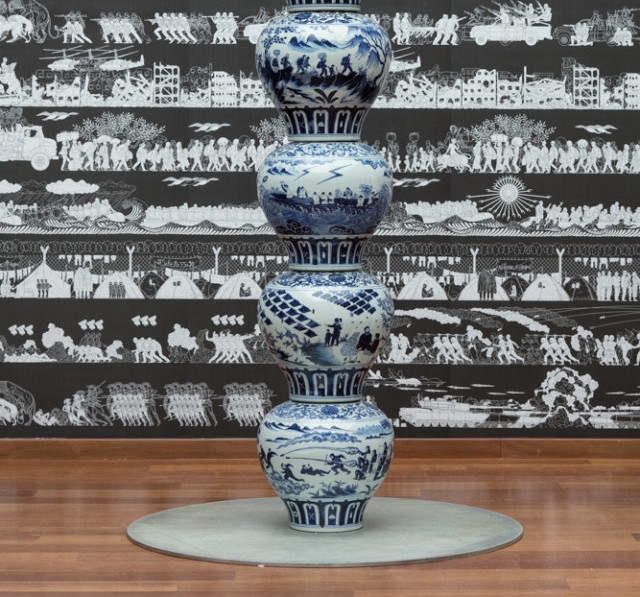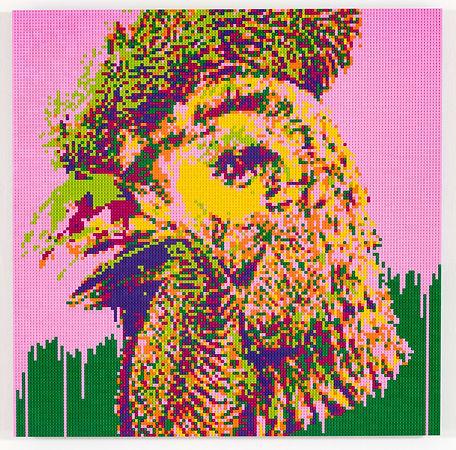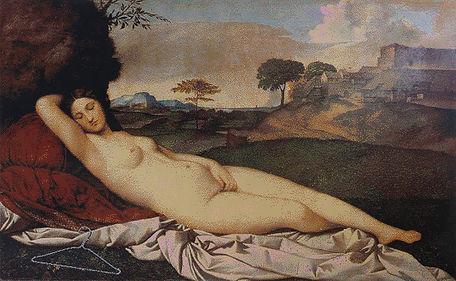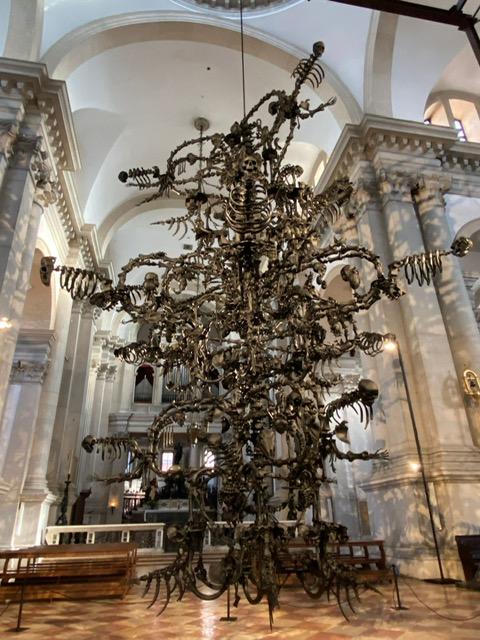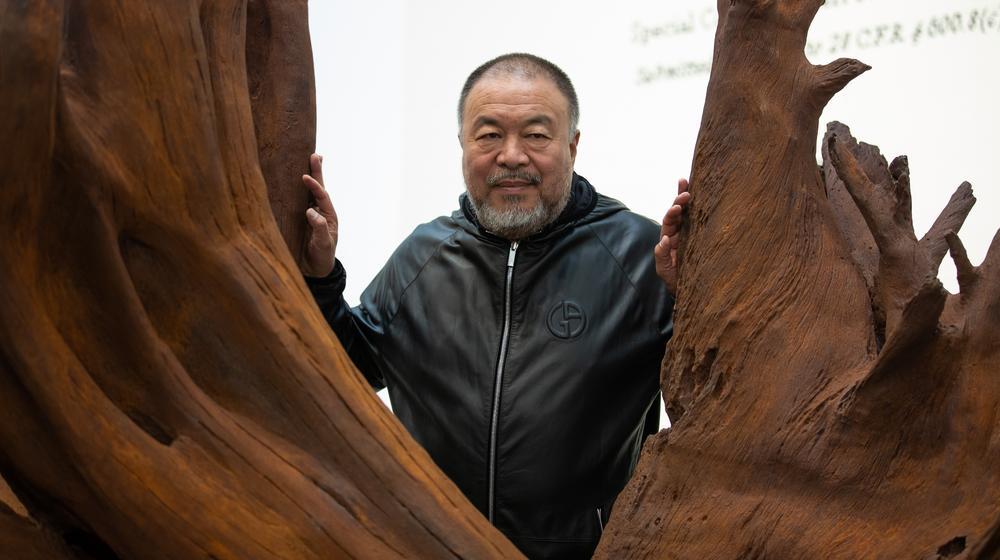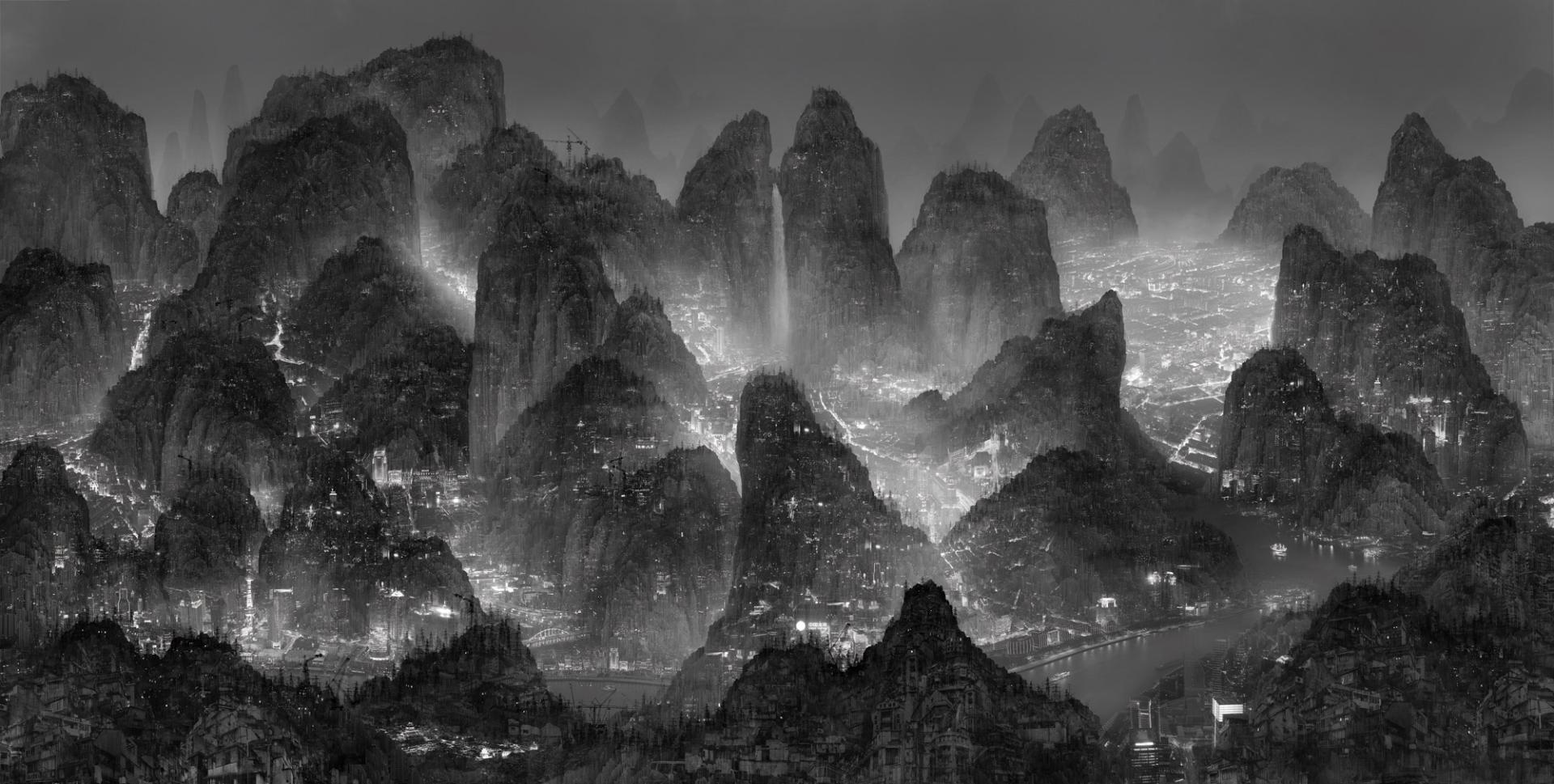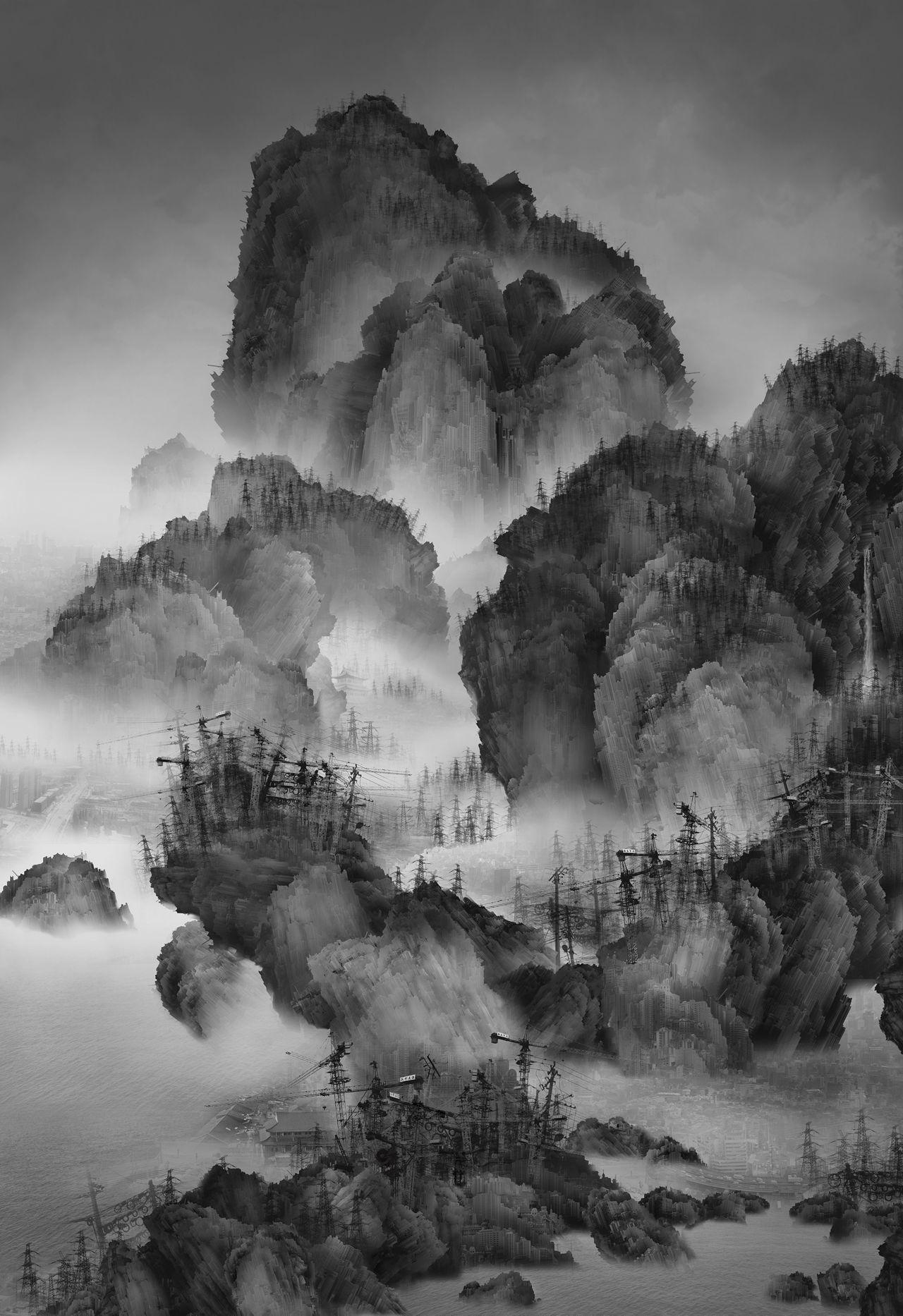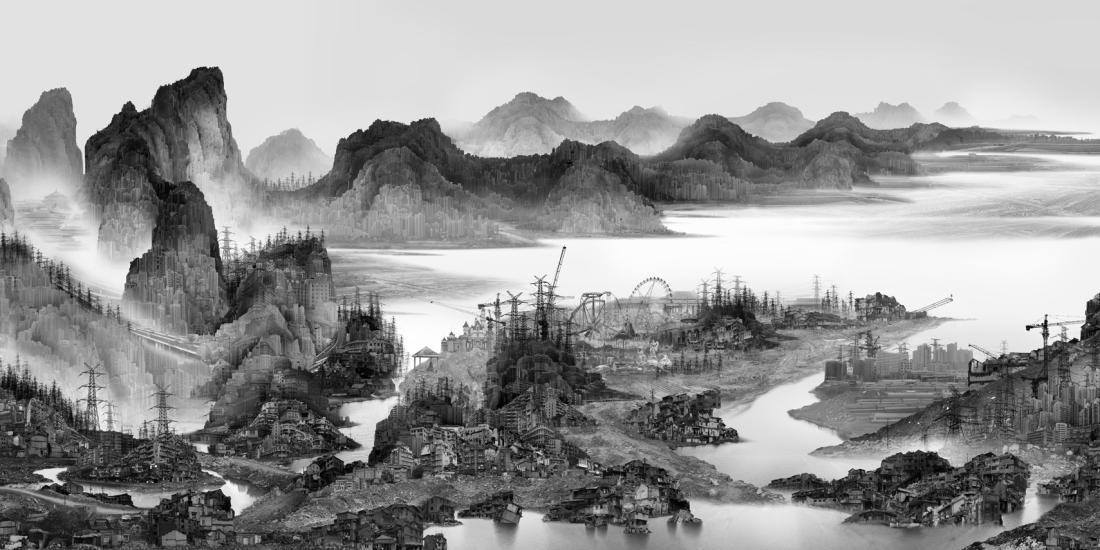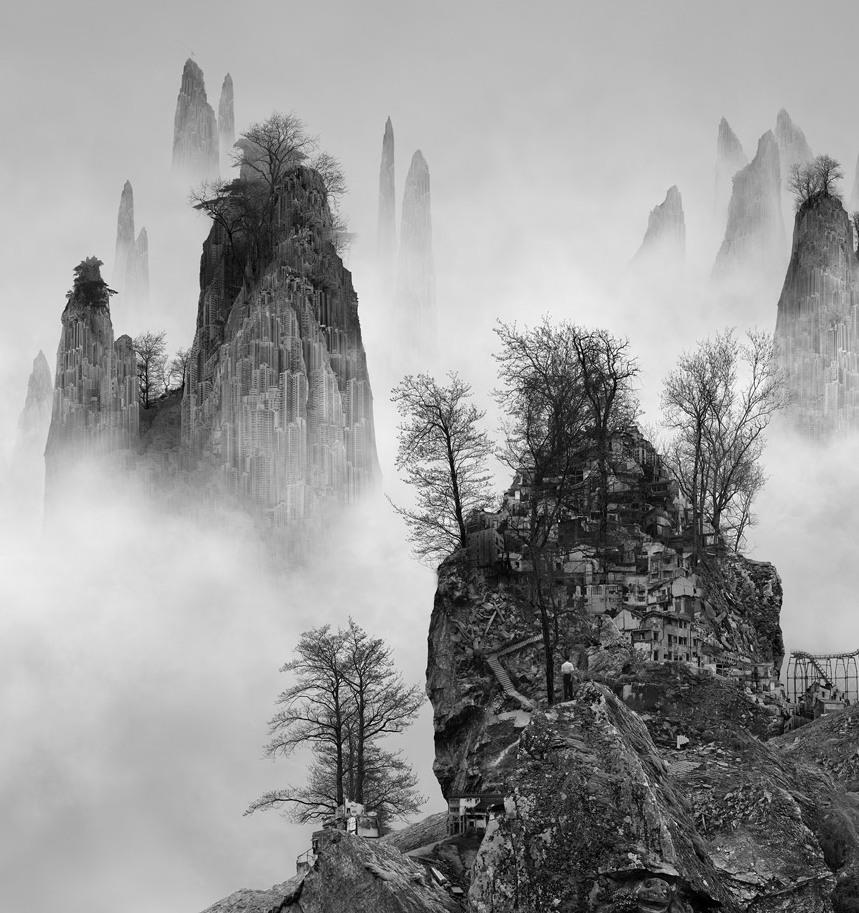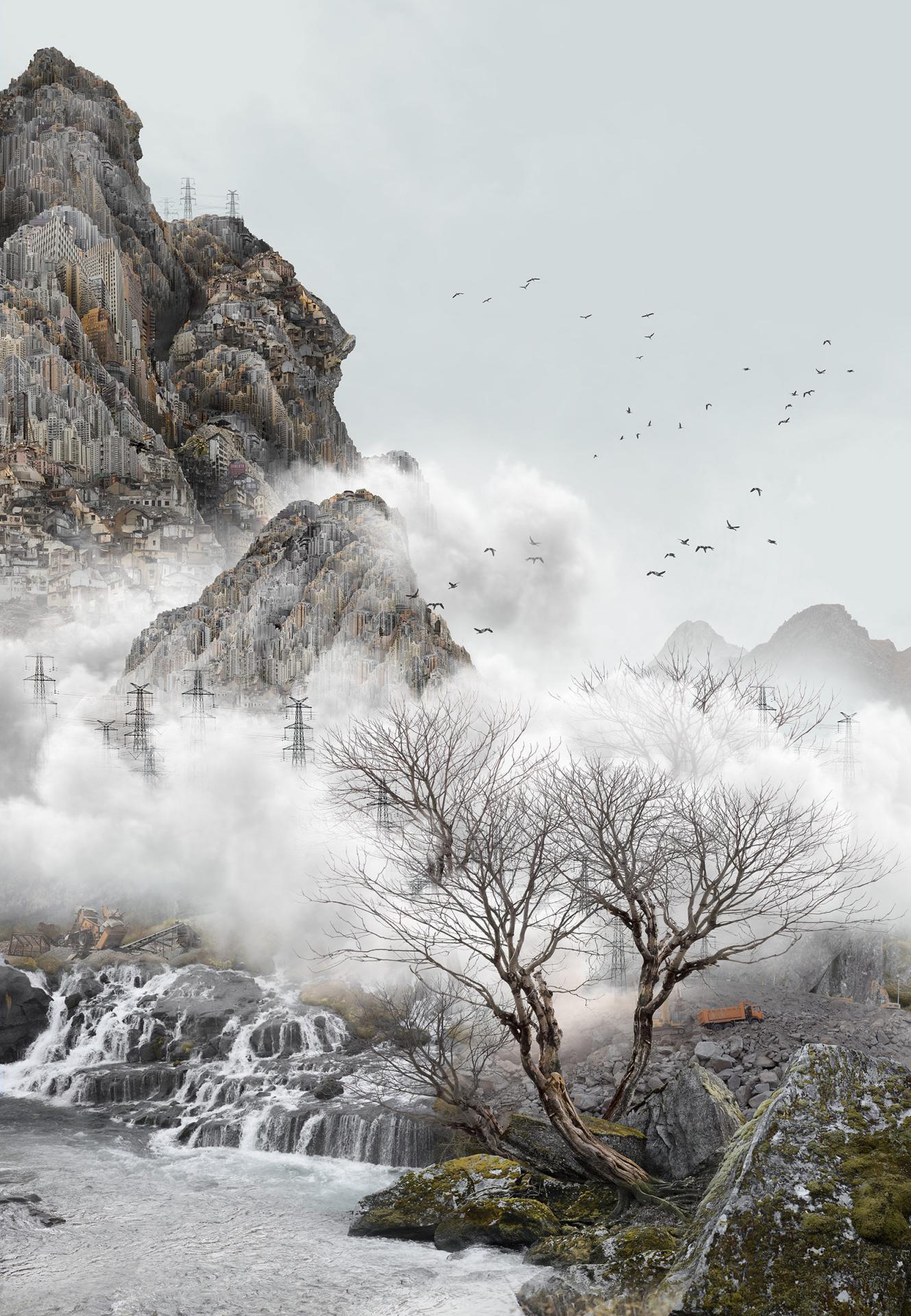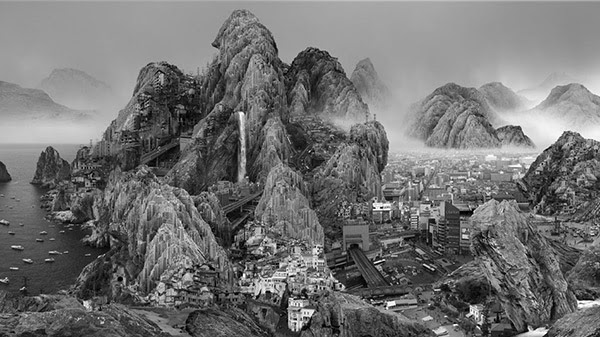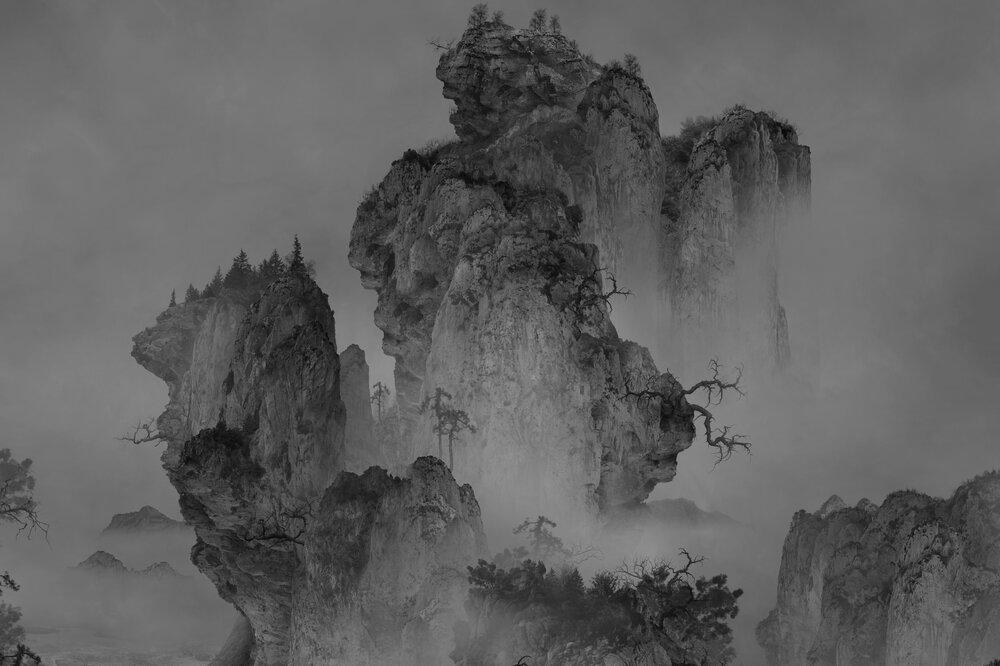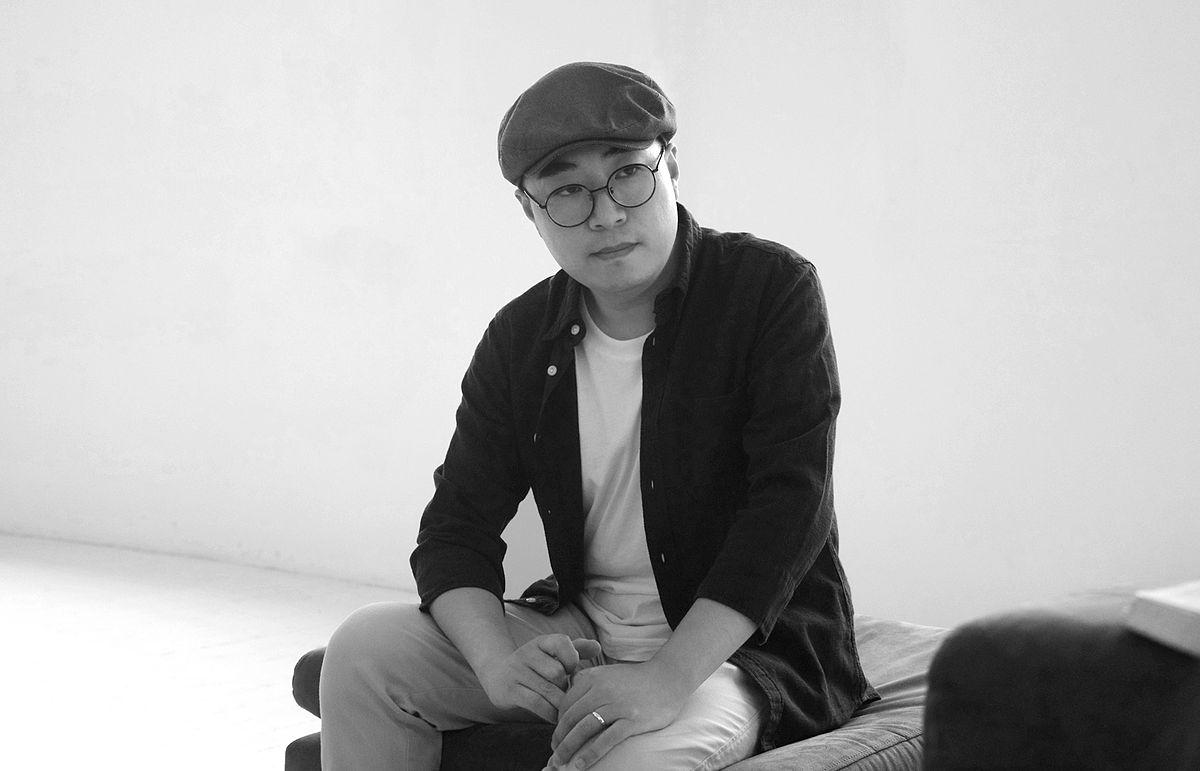Contemporary Artists/ Mainland China
Greatest Contemporary Artists/ Mainland China ⟱
Contemporary Chinese Artists/ News/ China and World

LI WEI and LIU ZHIYIN
Whispers of the wind
The Whitestone Gallery in Singapore presents the largest exhibition in Southeast Asia of the two Chinese artists Liu Wei and Liu Zhiyin, from 22 June to 18 August 2024. The two artists are partners in the art of sculpture. Born in 1980, they are both graduates of the Luxun Academy of Arts. Liu Wei creates sculptures, while Liu Zhiyin specialises in fashion design. Their work is the result of their shared artistic language. Li Wei represents the body and Liu Zhiyin represents form.
https://www.whitestone-gallery.com/blogs/gallery-exhibitions/sg-li-wei-and-liu-zhiyin-062024

QIU XIAOFEI
"Bare
From 7 June to 3 August 2024, Galerie Xavier Hufkens in Brussels is presenting the first exhibition in Europe by Chinese artist Qiu Xiaofei. Entitled BARE, the exhibition presents a series of paintings created between 2021 and 2023. The title of the exhibition alludes to a famous phrase from the poem "First Day of the Year Wu Shen" by the Ming dynasty writer Wang Zhideng: "Bare skin, I beat the drum with unbridled fervour, releasing my untamed soul". The poem tells the story of a man who becomes old overnight and wakes up on the first morning of the New Year, naked, entering a state of mania, in search of his most authentic inner self. In recent years, Qiu Xiaofei has returned to one of the leitmotifs of his work: the exploration of madness, hallucinations and the irrational energy of the human psyche.
ttps://www.xavierhufkens.com/exhibitions/bare
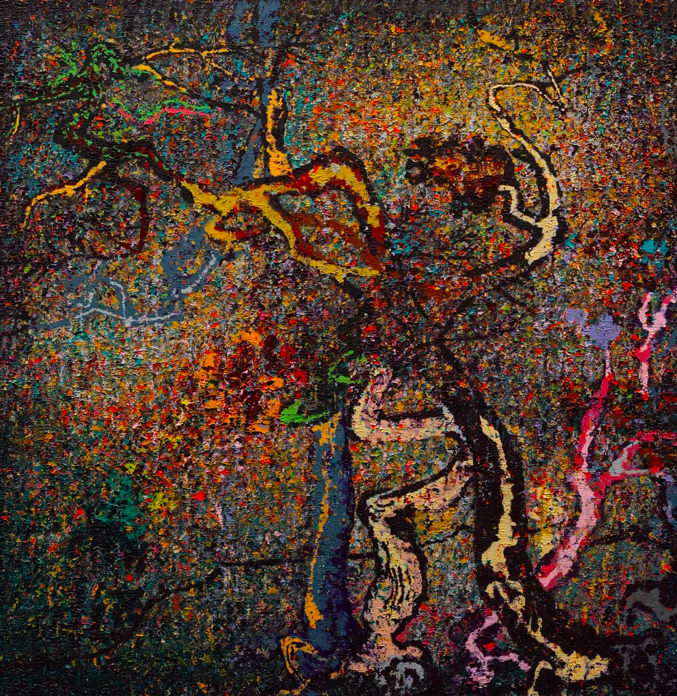
ZENG FANZHI
60th Venice Biennale
An American institution is sponsoring an exhibition by a Chinese artist in collaboration with a Japanese architect in a centuries-old Venetian building', headlines the New York Times on 5 April 2024.
An exhibition entitled "Near and Far/Now and Then", organised by the Los Angeles County Museum of Art, will present new works by Zeng Fanzhi at the Venice Biennale, at the Scuola Grande della Misericordia, from 17 April to 30 September 2024. The installation, designed by architect Tadao Ando, presents for the first time recent works by the artist - new abstract paintings and the first works on handmade paper made with ink, graphite, chalk and gold dust, among other mineral pigments - and aims to highlight Zeng Fanzhi's ambitious practice of redefining the abstract through exercises in figurative representation, and vice versa. The artist combines Christian, Buddhist and literati iconography. Architect Tadao Ando has designed a minimalist exhibition that uses the interplay of shadow and natural light to accentuate the interaction between Zeng Fenzhi's paintings and the site.
https://www.hauserwirth.com/news/zeng-fanzhi-at-scuola-grande-della-misericordia-in-venice/
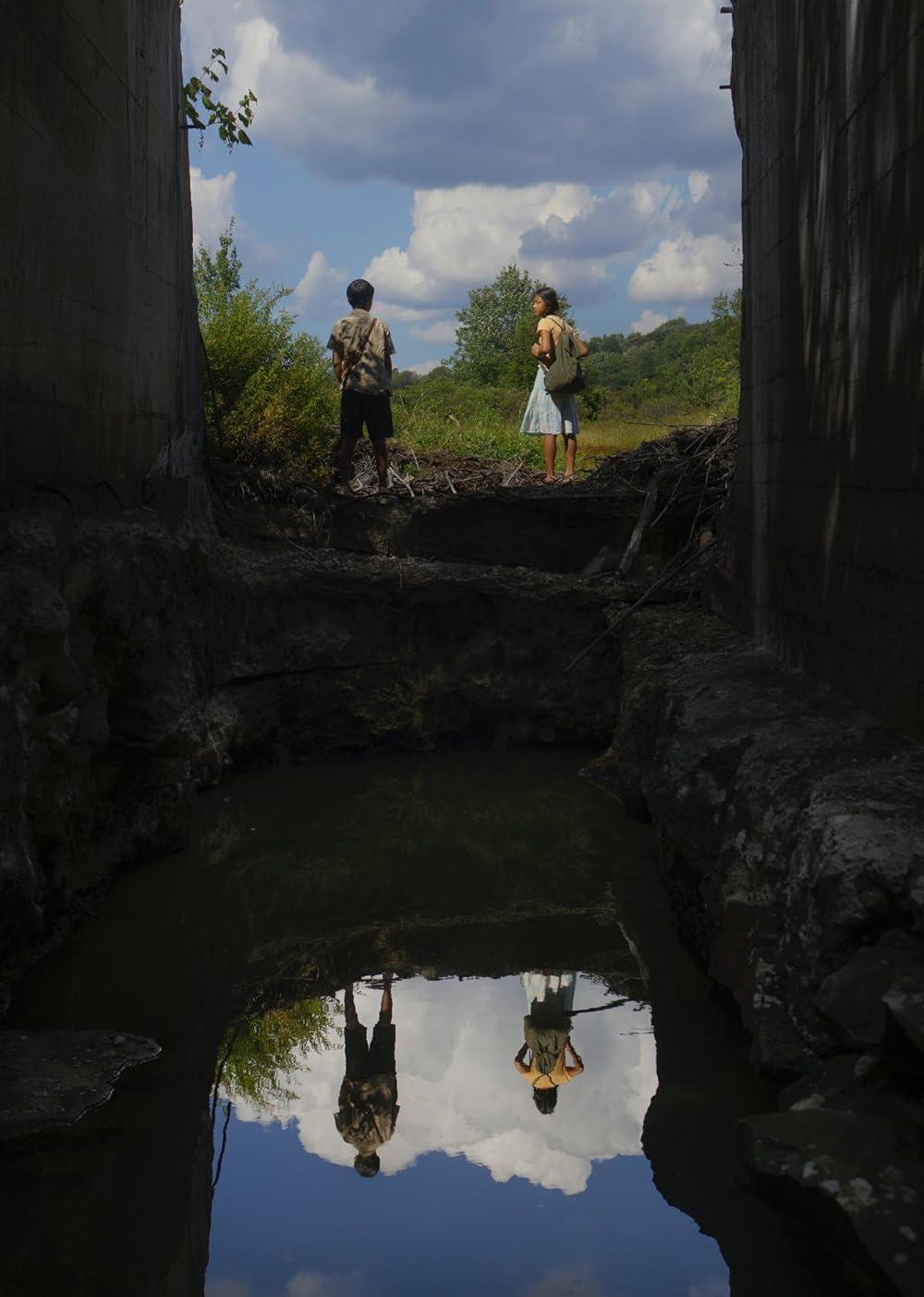
YANG YONGLIANG
"Vanishing Shore
HDM Gallery presents a solo exhibition by Chinese artist Yang Yongliang "Vanishing Shore", at HOW Art Museum in Shanghai from 12 April to 11 August 2024. The artist presents 14 works produced over the last five years, including the multi-screen video "Glows in the Arctic" and his first short film "Vanishing Shore", which marks Yang Yongliang's entry into film-making. "Vanishing Shore" recounts the exile of two children who have left their hometown and are trying to find a balance between freedom and regret by joining the sea.
http://www.howartmuseum.org.cn/portal/zh-CN/Exhibition/Detail/08a50f0b-49b5-6409-cbb7-5a8dafb4e70b
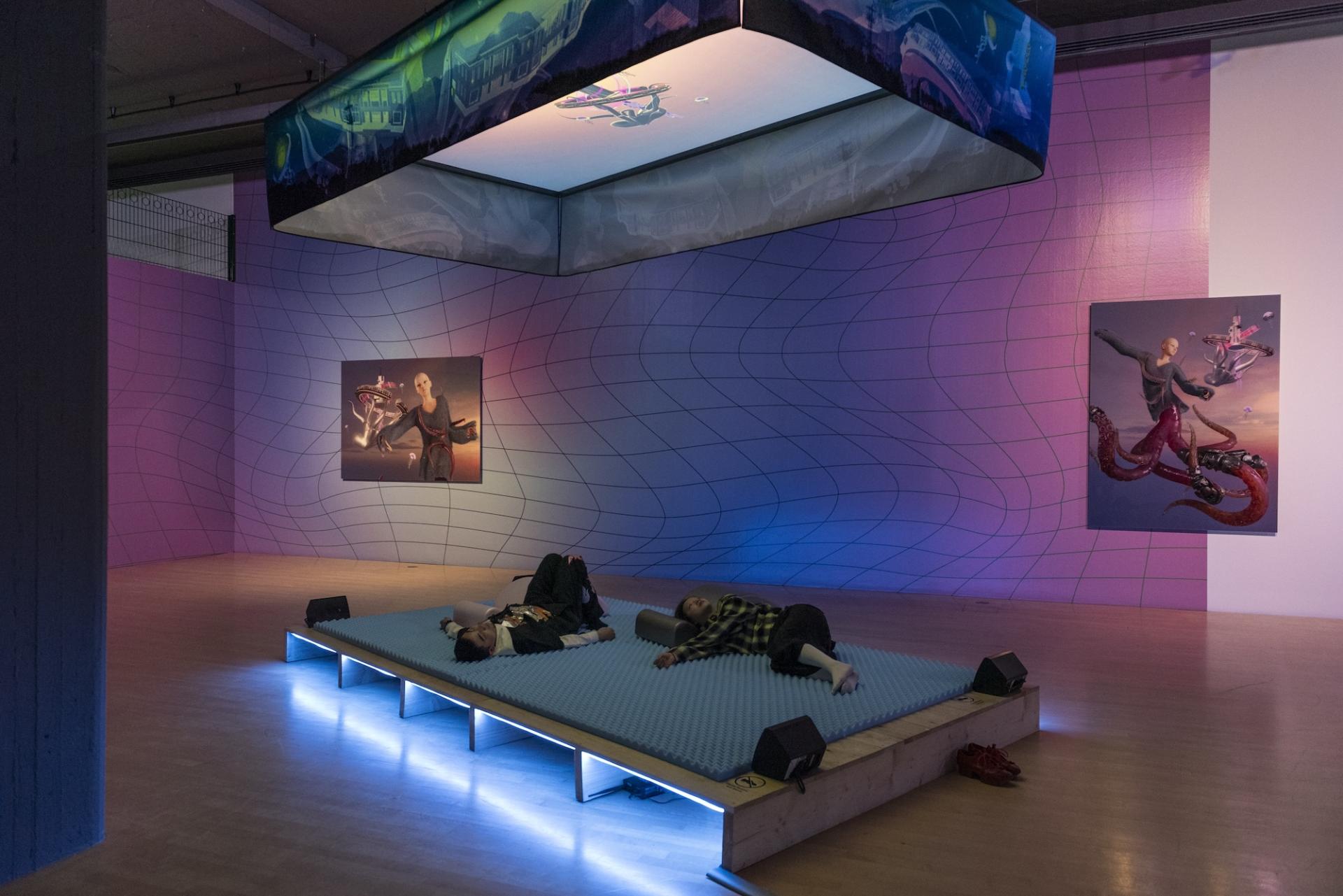
CAO FEI
Tidal Flux
Cao Fei presents "Tidal Flux" at the Pudong Museum of Art, Shanghai, from 22 June to 17 November 2024. This is the first solo exhibition devoted to a woman artist by MAP, and the first major exhibition of moving images and media art since the museum was founded. For artist Cao Fei, this is her first major mid-career retrospective in Shanghai and one of the largest solo exhibitions of her work ever organised anywhere in the world.
https://www.museumofartpd.org.cn/en/exhibitiondetail?id=155
CAO FEI
Meta-mentary
Cao Fei presents Meta-mentary at the Lenbachhaus, in Munich, Germany, from 13 April to 8 September 2024: an exhibition in which she explores the Metaverse.
"Cao Fei’s immersive exhibition Meta-Mentary takes visitors on a journey through a post-digital Metaverse, with references to Communism, China and Covid. Situating the installation in Lenbachaus’s subterranean exhibition space in the Munich Metro is a stroke of curatorial genius, which injects an atmosphere of a futuristic Metropolis to the experience, juxtaposing the Metaverse with contemporary life via a view of Urbanites journeying underground through a glass window at the end of the exhibition." (FAD Magazine).
https://www.lenbachhaus.de/programm/ausstellungen/detail/cao-fei

MATTHEW WONG
Vincent Van Gogh
The Van Gogh Museum in Amsterdam is exhibiting the work of Chinese-Canadian artist Matthew Wong - Matthew Wong | Vincent van Gogh: Painting as a Last Resort - from 1 March to 1 September 2024. This is the first retrospective of Matthew Wong's work in Europe.
Vincent Van Gogh was the artist who most inspired Matthew Wong. His influence is undeniable, whether in the use of colour, the thickness of the brushstrokes or the personal themes addressed in Matthew Wong's work. He saw his own life reflected in that of Van Gogh, and once said: "I see myself in him. The impossibility of belonging to this world". The artist took his own life in 2019, at the age of 35. He is now considered one of the most talented artists of his generation.
https://www.vangoghmuseum.nl/en/visit/whats-on/exhibitions/matthew-wong-vincent-van-gogh
Leading Contemporary Artists in China
From Zeng Fanzhi to Ai Weiwei
As contemporary Chinese art develops, we are discovering a new generation of artists who tell us a great deal about Chinese society. Many are inspired in their work by the recurring themes of social change and the urbanisation of Chinese society. "The influence of young Chinese artists is growing and the creativity of the new generation is being recognised by collectors. The average age of artists on the list has fallen for four consecutive years, and this year the number of artists under the age of 50 is the highest it has been for ten years," reports the Hurun China Art Report in 2023. China was the world's second-largest art market in 2023, after the U.S. Hong Kong art annual sales topped one and a half billion dollars in 2023, according to Artprice.
ZENG FANZHI
XU BING
CAO FEI
CHEN FEI
FANG LIJUN
YUE MINJUN
XU MING
CUI RUZHUO
LIU WEI
AI WEIWEI
ZHANG XIAOGANG
YANG YONGLIANG
ZENG FANZHI
ZENG FANZHI is a contemporary Chinese visual artist. His paintings blend the contributions of Western art with Chinese tradition and culture. He is currently the most highly-rated artist in China.
Zeng Fanzhi ranked first in the Hurun China Art List 2023 auction rankings, with sales of US$21.4 MN. With cumulative sales of $14,361,710, he ranked 133rd in Artprice's Top 500 contemporary artists worldwide by auction revenue in 2023.
A few days before the opening of his first French exhibition at the Musée d'Art Moderne de la Ville de Paris on 18 October 2013, his "Last Supper" - an ironic version of Leonardo da Vinci's famous Last Supper - broke a record for both a work of contemporary Asian art and a living Chinese artist at Sotheby's in Hong Kong, fetching a staggering HK$160 million (€17 million). In November 2017, he sold his painting "Smiling Bei Ke Ning" (1989) for HK$4.3 million at Bonhams HK.
Recently the large formats of Zeng Fanzhi's works are sold by Hauser & Wirth starting at $500,000 and, possibly, up to $1.8 million.
PROFILE OF THE ARTIST
Zeng Fanzhi was born in 1964 in Wuhan (China). Educated at the School of Fine Arts in his native city, he discovered contemporary Chinese and Western art. He graduated from the Hubei Institute of Fine Arts in Wuhan (1991). In 1993, he moved to Beijing, where he has lived and worked ever since.
Zeng Fanzhi's work ranges from portraits and rural landscapes to more political subjects. It is a mixture of Chinese history and personal history. His memories of his youth, when he lived near the hospital in Wuhan, mark the first series of canvases depicting operations, waiting rooms, meat and undressed bodies. Other paintings from the 2000s recall China's political past, such as Tian'An Men, which shows Mao (2004). Zeng Fanzhi grew up in the Maoist revolution. The scarlet scarf of the Red Guards, which he was inexplicably deprived of, is a leitmotif in his work. Later, the tie replaced the red scarf. Only the hands stand out: huge, red and gnarled, they speak of his working-class past. His loneliness when he arrived in Beijing inspired the Mask series: "Everyone was wearing costumes", he says, "but there was something a little false about them. Behind most of these masks was me. I had very few friends". They're all smiling, but what faces do they have behind their masks? While the paintings in the Mask Series are influenced by Pop Art, the portraits and landscapes are closer to a darker abstraction. His gigantic polyptychs, lined with brambles and teeming with animals - like this gigantic hare, reminiscent of Albrecht Dürer's tiny hare - and human bodies, have a restrained expressionism that harkens back to German painting.
In his Last Supper, inspired by Leonardo da Vinci's Last Supper, painted in 2001, Judas "wears a golden tie, which evokes the power of money, capitalism", explains Zeng Fanzhi. Zeng Fanzhi has revisited Leonardo da Vinci's famous painting in his own way, adding a modern touch by depicting 13 Chinese schoolchildren, red ties around their necks, eating a watermelon. However, Zeng Fanzhi does not claim to be a political figure in the strict sense of the term.
The first French retrospective of Zeng Fanzhi's work was held from 18 October 2013 to 16 February 2014 at the Musée d'Art Moderne de la Ville de Paris.
Recently Zeng Fanzhi's work has evolved. His new oil paintings have emerged from his decades of research into colour theory, drawing on and challenging Impressionist and Pointillist practices. Layers of brushstrokes create figurative elements that are easily recognisable from a distance, but which, when seen up close, dissolve into the materiality of the oil paint. His paintings are made up of a multitude of thick dots of colour.
EXHIBITIONS
Zeng Fanzhi's most recent solo exhibitions include: 2024 Scuola Grande della Misericordia, 'Zeng Fanzhi: Near and Far / Now and Then', Venice, Italy; 2023 The Museum of Art Pudong, 'Zeng Fanzhi. Old and New (Paintings 1988-2023)', Shanghai, Hauser & Wirth, 'Zeng Fanzhi', Los Angeles CA
PAST EXHIBITIONS
XU BING
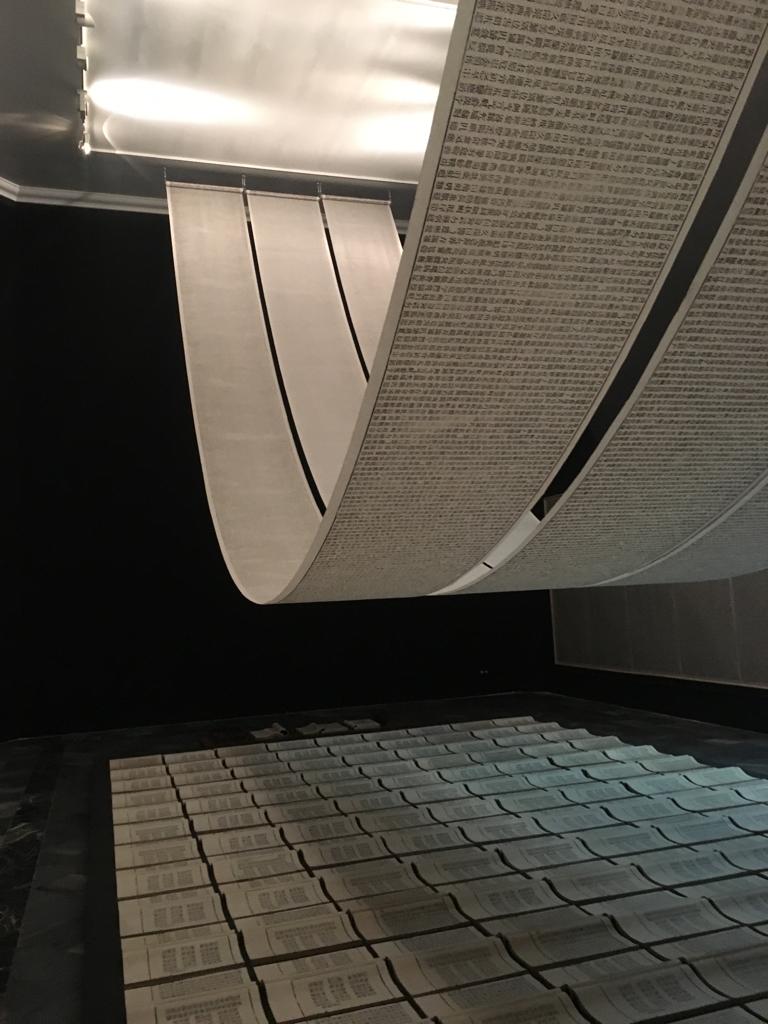
Xu Bing, Book from the Sky, 1989-1991
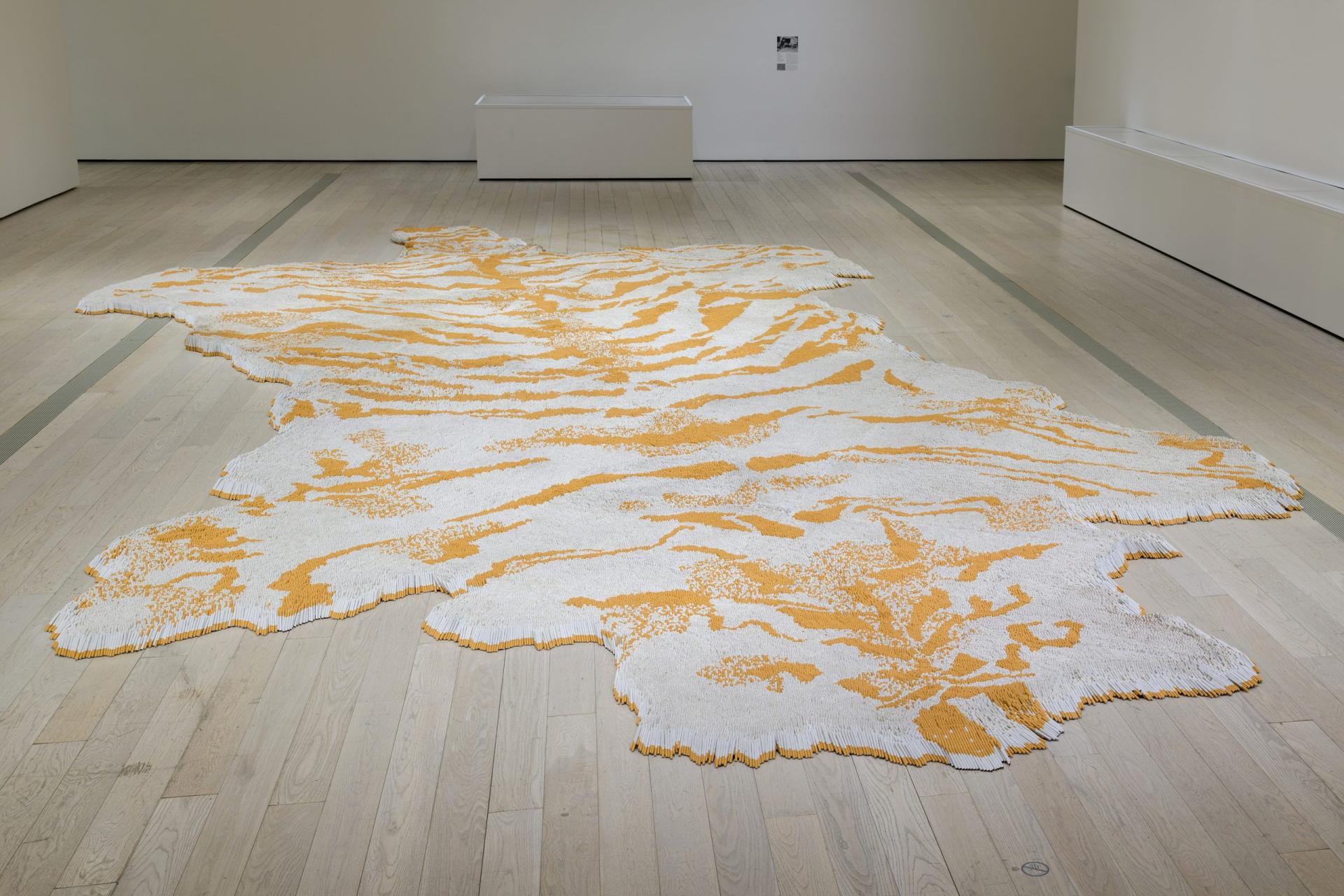
Xu Bing, 1st Class, 2011, Installation view, The Allure of Matter Material Art from China, Los Angeles County Museum
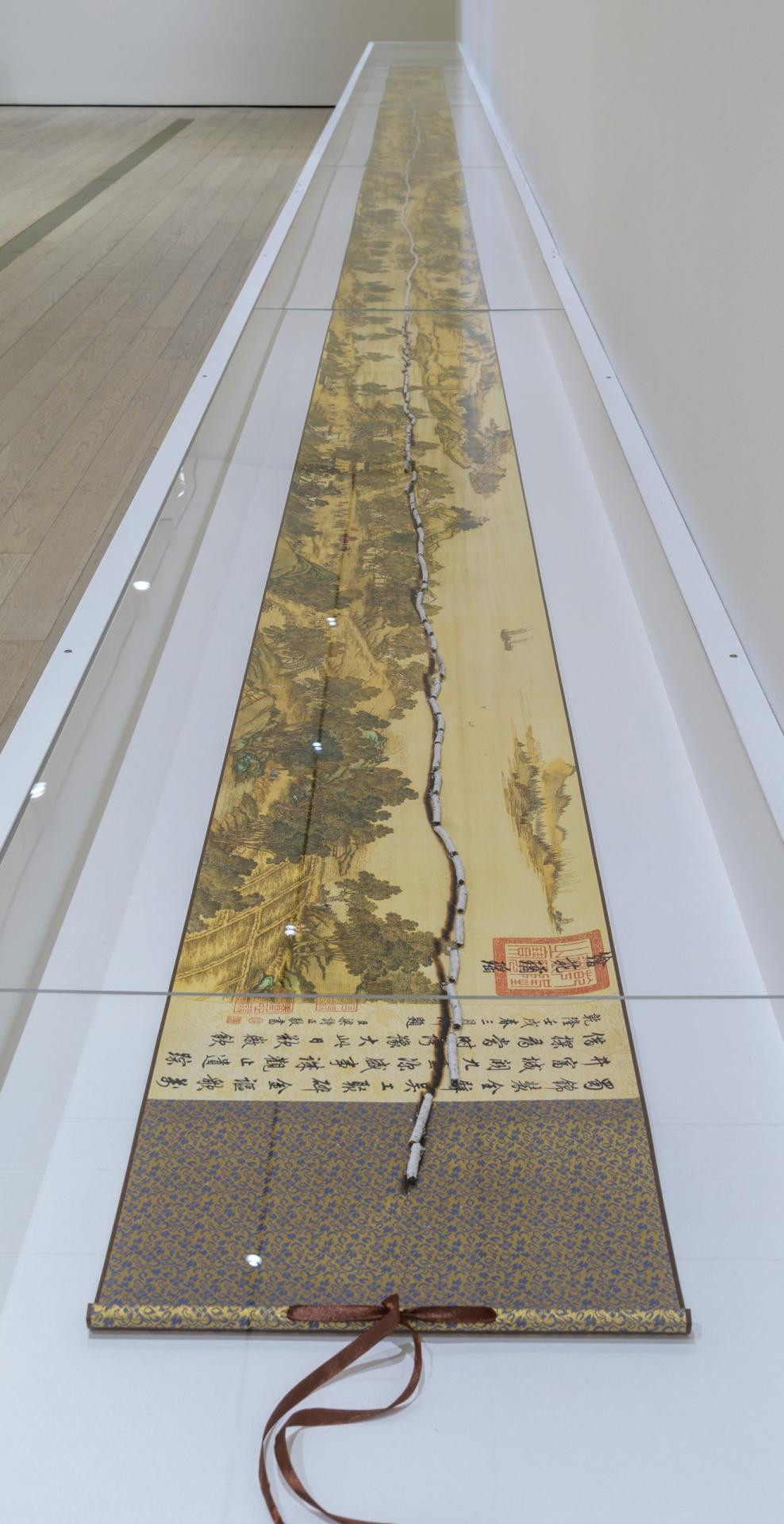
Xu Bing, Traveling Down the River, 2011 burned cigarette on a scroll in glass case, Smart Museum of Art
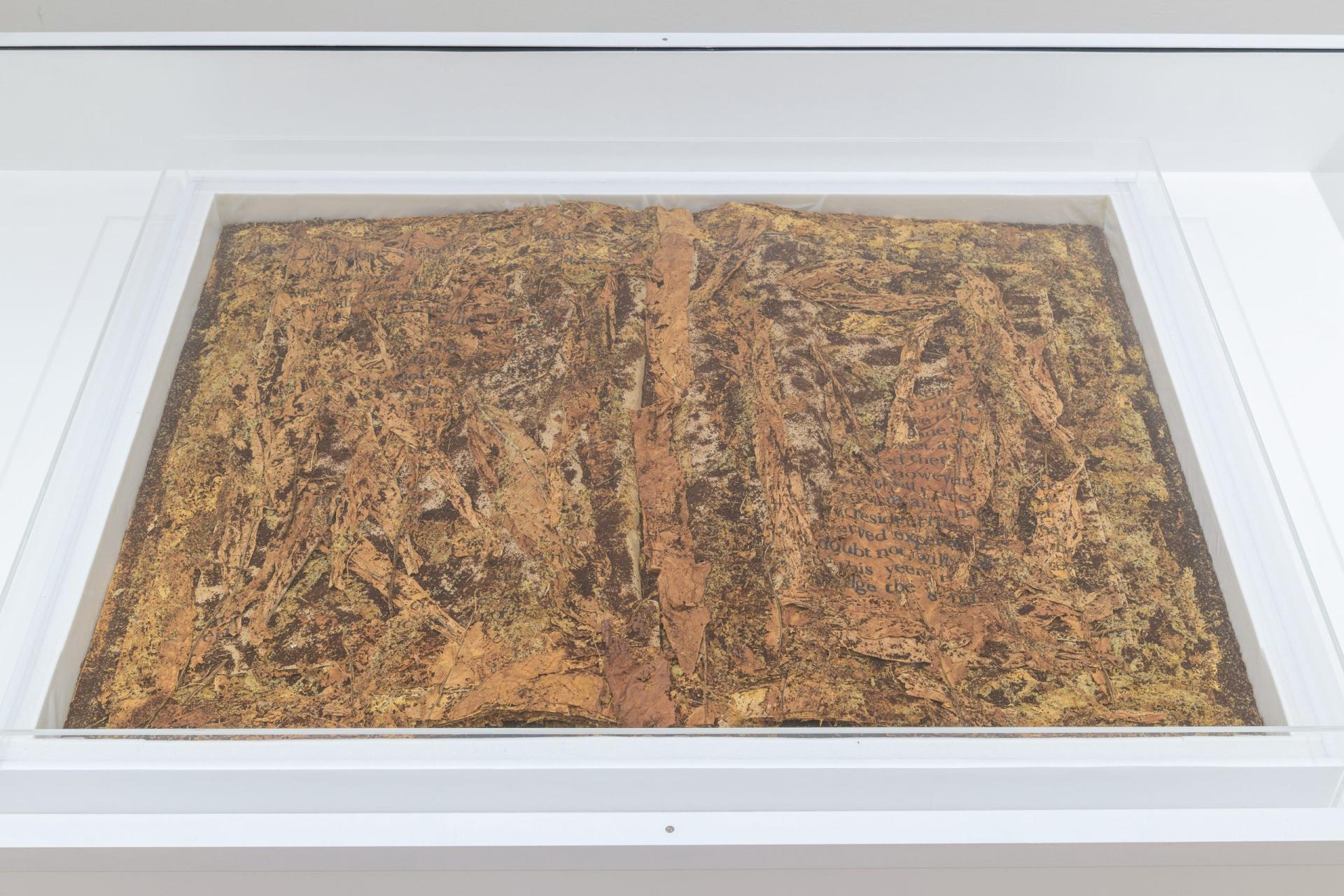
Xu Bing, Tobacco Book 2011, Photo Museum Associates LACMA
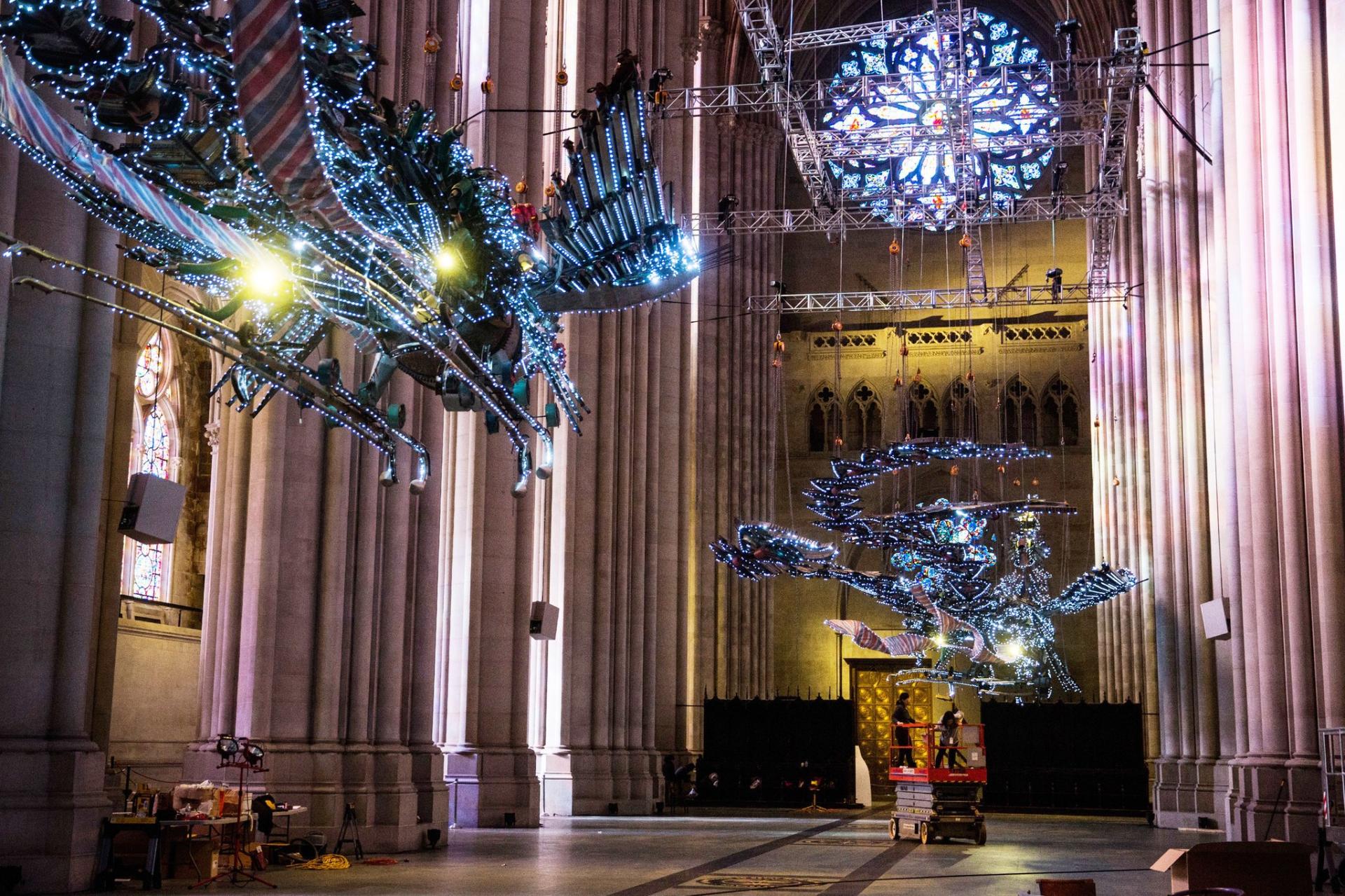
Xu Bing, Phoenix 2008-10, 2014, Cathedral of Saint John the Divine, Manhattan NY
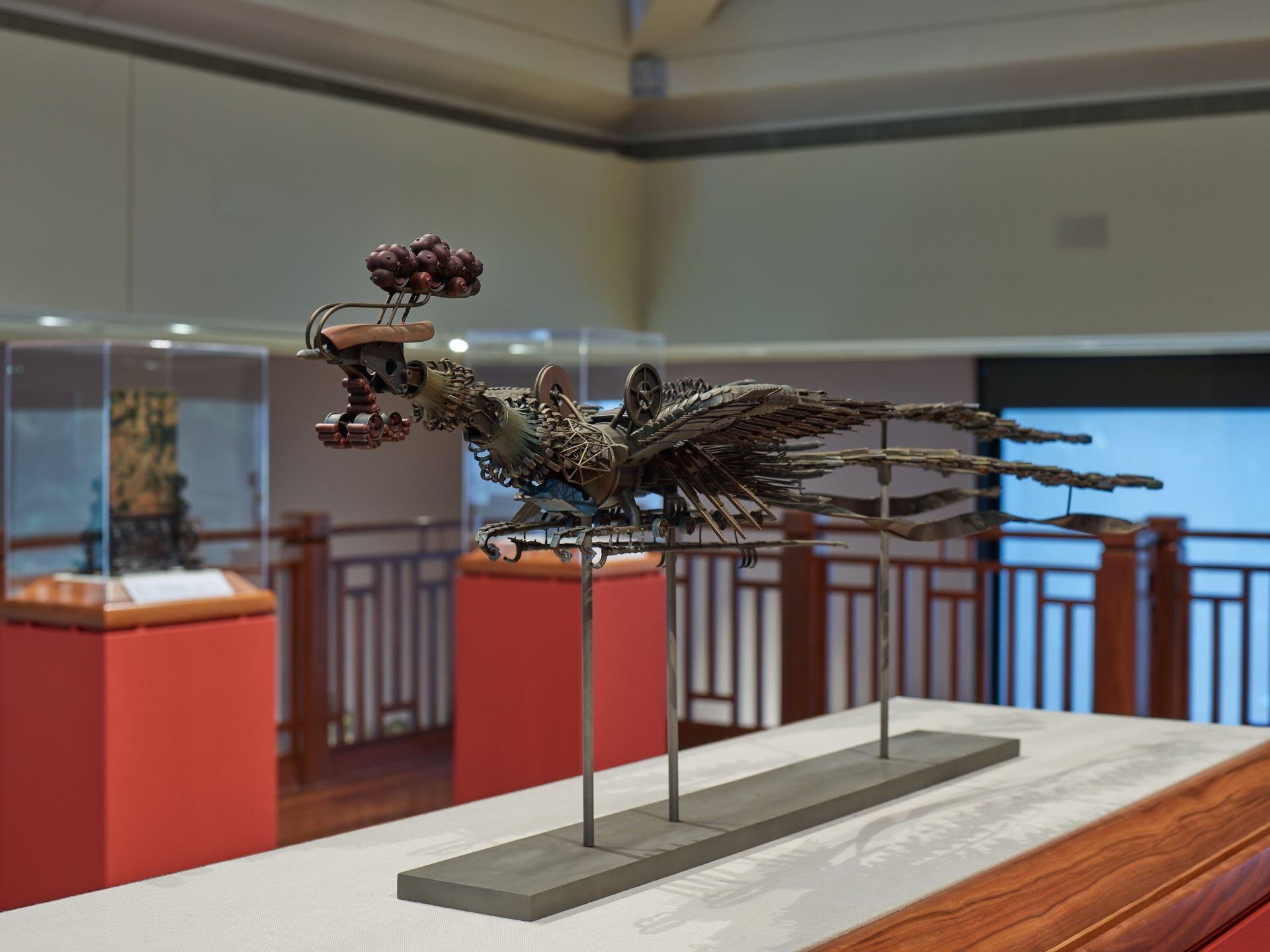
Xu Bing, Phoenix Rising, 2022, Crow Museum, Dallas Texas
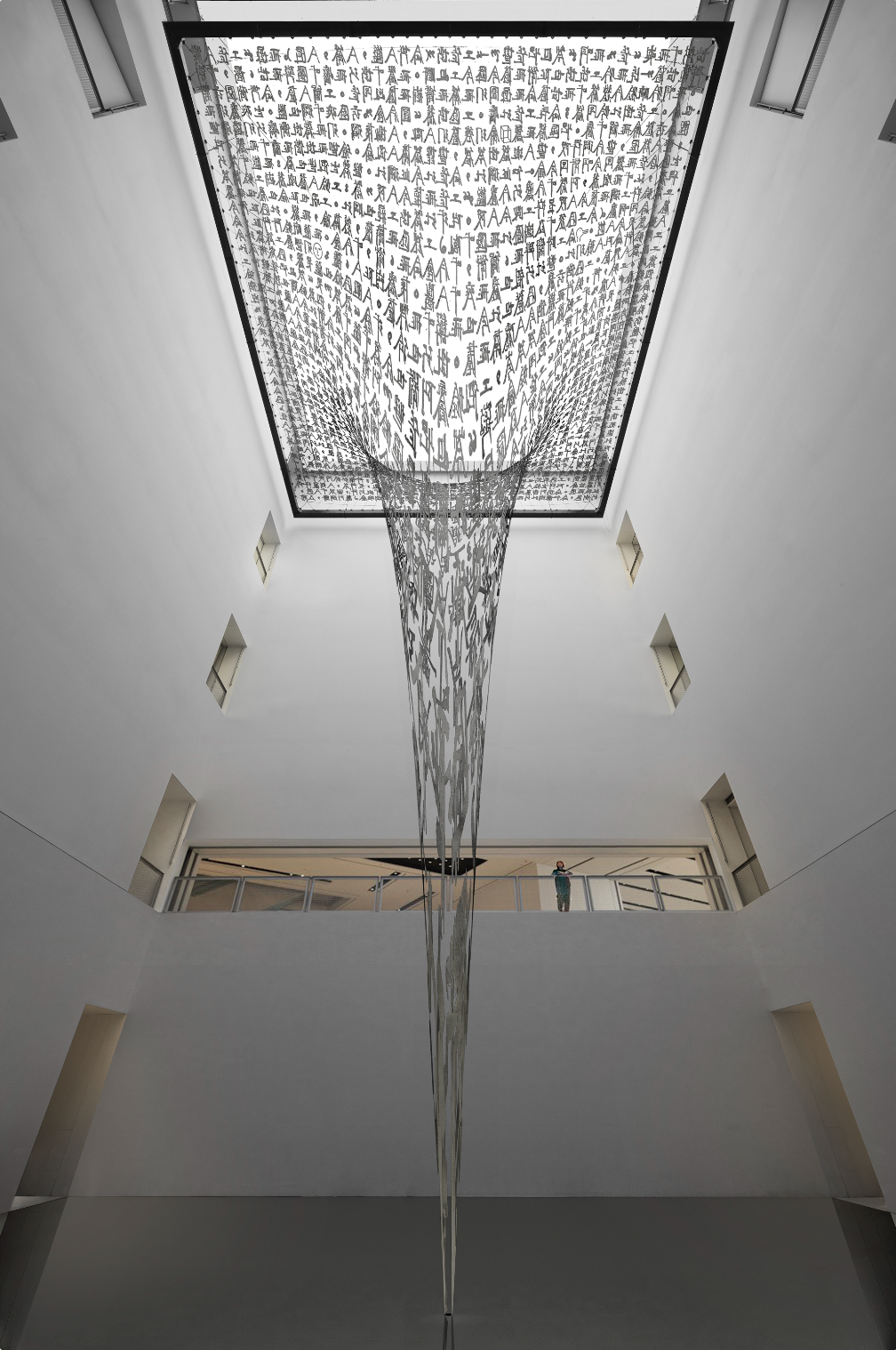
Xu Bing, Gravitational Arena, 2021-2022 mixed media installation, Museum of Art Pudong
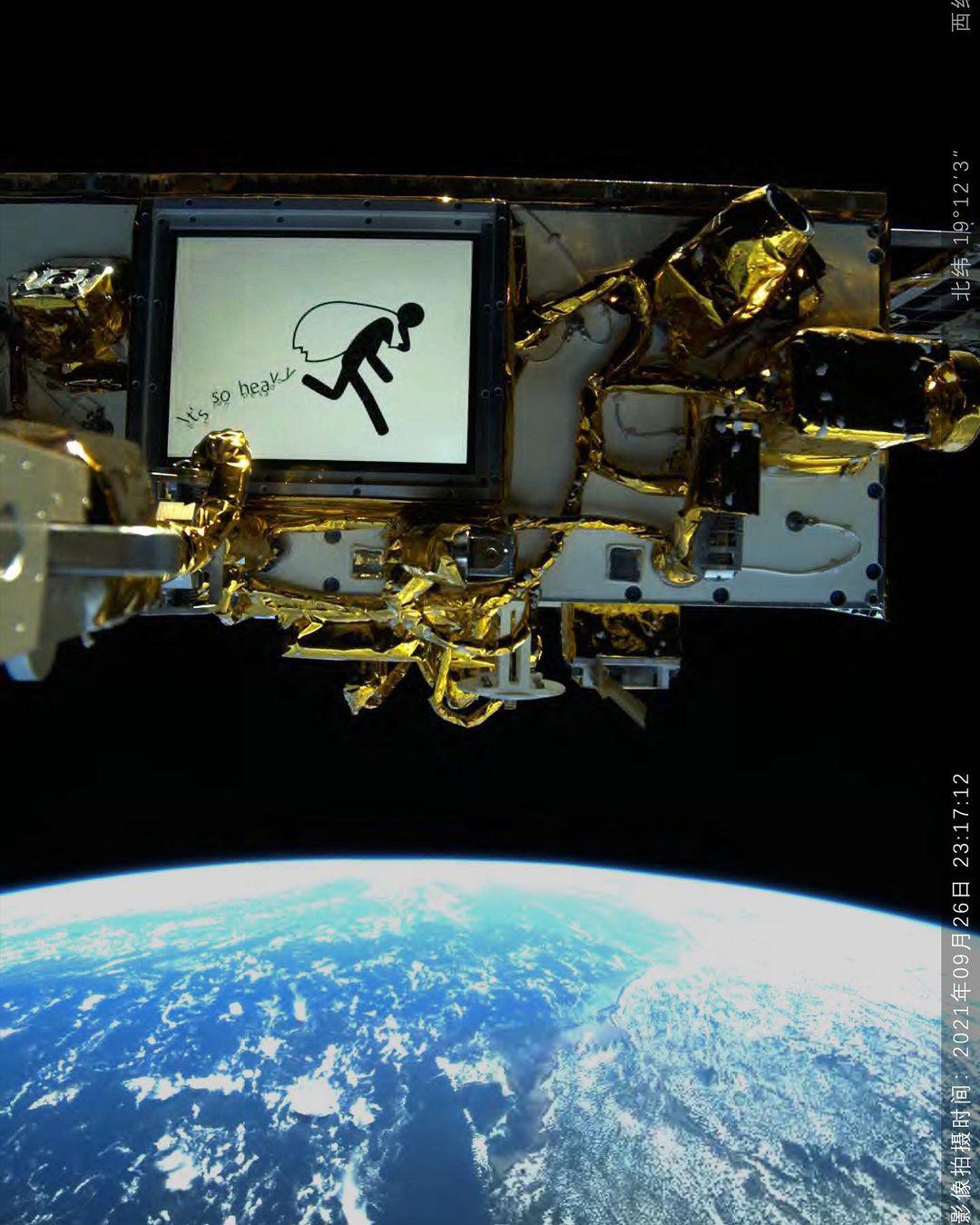
Xu Bing : satellite, the first animated film shot in Space, 2024, Venice
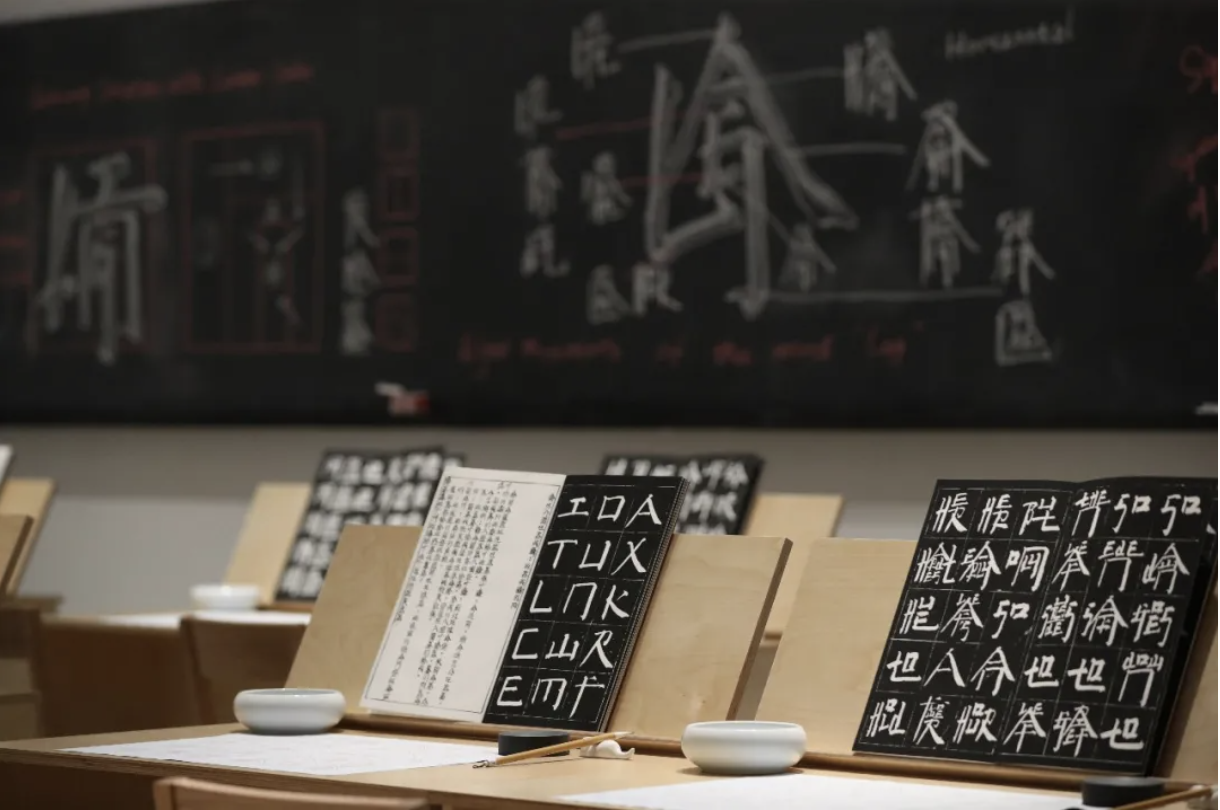
Xu Bing, World Alchemy exhibition, Asia Society Dallas, 2024
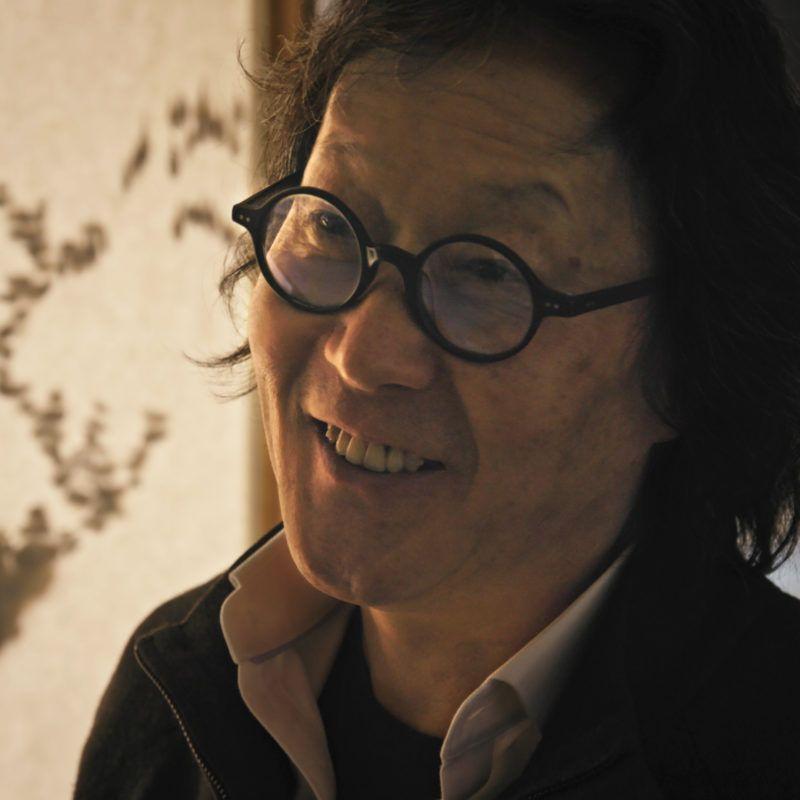
Xu Bing
XU BING is a contemporary Chinese artist. He was part of the Chinese avant-garde movement. In the late 1980s, he came to prominence for his formal experiments with Chinese script, using woodcut and print to produce a vast series of absurd characters. Xu Bing uses a variety of media, materials and themes, including ink rubbings, stencils, glass, scrolls, computer manipulations and surveillance videos, as well as organic materials and live animals.
According to Artprice, Xu Bing's NFT digital artwork "Celestial Volume" sold for $314,000 in 2021, the highest price ever paid for a single NFT in China. According to Artprice, Xu Bing's sales reached €315k in 2023.
https://www.xubing.com/en/about
NEWS
Xu Bing presents a solo exhibition "Xu Bing: Art Satellite-The First Animated Film Shot in Space" at the Church of Santa Veneranda in Venice, from 17 April to 7 October 2024
PROFILE OF THE ARTIST
Xu Bing was born in Chongqing, China, in 1955 and grew up in Beijing. He studied at the Printmaking Department of the Central Academy of Fine Arts in Beijing (1977 - 1981). He obtained his BA (1981) and MFA (1987). He was invited to the United States as an honorary artist in 1990. In 2007, he returned to China and took on several management positions at the Central Academy of Fine Arts. Since 2014, he has been head of the institution's academic committee. He currently divides his time between Beijing and New York, where he lives and works.
Since the late 1980s, Xu Bing has enlarged his exploration of how the written word might connect different writing systems and engage audiences from different cultures. For example, in his Tobacco Project (2000-2011), Xu Bing transformed different aspects of raw tobacco leaves, cigarettes, cigarette packaging and other marketing materials to explore the intertwined histories of the global economy, raw materials and the history of Chinese art.
In March 2014, Xu Bing unveiled his biggest project at that time, at the Cathedral of Saint John the Divine, in Manhattan. Phoenix, 2008-10, made up of two birds - each weighing 12 tonnes - was suspended in the nave. The two birds, mythical beasts, a male called Feng and a female called Huang, were made from detritus that the artist had taken from construction sites in Beijing's rapidly changing urban landscape. in 2022-2023, on display at the Crow Museum in Dallas, Texas, the bronze phoenixes (Feng and Huang), were placed on the Mezzanine of the Crow Museum Gallery. These represent an important story in Chinese folklore," explained Xu Bing, "and one that we must listen to without delay.
In 2019, the Consorci de Museus de la Comunitat Valencia presented Xu Bing's 'Art for the People' exhibition to the public at the Centre del Carme, a new graphic novel composed entirely of symbols and icons, with which the Chinese artist showed his universal language for the first time in Spain.
In 2022, the artist presented Xu Bing: Gravitational Arena at the Museum of Art in Pudong. A giant "text vortex" made up of characters in Square Word Calligraphy was hung in the Museum's lobby. Standing beneath the work, spectators could only access the reverse side of the texts. The inverted texts were restored in the mirror image to normal perception,
For his installation at the 60th Venice Biennale in 2024, "Xu Bing: Art Satellite - The First Animated Filmed in Space", the artist used space technology to respond to the inscription engraved on the Santa Veneranda chapel that "brings light and peace to Italy and indeed to the world". The exhibition features the world's first animated film, "Lake on a Satellite", filmed in space on the roof of a chapel. This short film, which lasts 3 minutes and 7 seconds, was shot using an old satellite in orbit, Ladybug-1.
Xu Bing's exhibition "Xu Bing: Word: Word Alchemy" at the Asia Society Texas Center in Houston, which runs until July 2024, brings together more than 50 of Xu Bing's most important woodcuts, videos, drawings, installations and other ephemera representing nearly 50 years of the artist's creative output.
EXHIBITIONS
Xu Bing's recent solo exhibitions include: 2024 Xu Bing: Word Alchemy, Asia Society Texas Center, Houston; 2023 Mythical Creatures: China and the World, Philadelphia Museum of Art, Time Gravity 2023 Cheng Du Biennale, Chengdu Art Museum
Films: 2024 Xu Bing : Art Satellite, the First Animated Film Shot in Space, Church of Santa Veneranda in Venice, Universal / Remote, National Art Center, Tokyo
Xu Bing's work has been exhibited in many prestigious venues around the world, including the Museum of Modern Art, the MET in New York, the Guggenheim Museum and the Sackler National Gallery in Washington, D.C. He has also taken part in several international exhibitions, including the Venice Biennale, the Sydney Biennale, the São Paulo Biennale and the Johannesburg Biennale.
In January 2014, the Taipei Fine Arts Museum presented 'Xu Bing: A Retrospective', This was the artist's largest solo exhibition in Asia, bringing together his greatest pieces here.
PAST EXHIBITIONS:
https://www.xubing.com/en/about/soloexhibition
https://www.xubing.com/en/about/groupexhibition
CAO FEI
CAO FEI is one of the most internationally acclaimed contemporary Chinese artists of her generation. She is one of the most innovative young artists to have emerged in China in recent years, and one of the most important representatives of post-digital art. She is also the only woman to feature among the top 10 contemporary Chinese artists. She was named "Best Artist" by the Chinese Contemporary Art Awards in 2016. She is also the only Chinese—artist commissioned to create a BMW Art Car in 2017. Inspired by cinema, advertising, manga and theatre, Cao Fei creates video and multimedia installations.
NEWS
Cao Fei presents Meta-mentary at the Lenbachhaus, in Munich, Germany, from 13 April to 8 September 2024: an exhibition in which she explores the Metaverse.
PROFILE OF THE ARTIST
Cao Fei was born in 1978 in Guangzhou, Guangdong province. She obtained her BFA from the Guangzhou Academy of Fine Arts (2001). She lives and works in Beijing.
Cao Fei mixes social commentary, pop aesthetics, references to surrealism and reflects on the rapid and chaotic changes taking place in Chinese society. She creates multimedia projects that explore the experiences of young Chinese people busy developing strategies to overcome and escape the realities of a rapidly changing society. According to the director of MoMa PS1, Klaus Biesenbach, "Cao Fei visualises the tension that a person of her generation can experience on a daily basis in China".
Cao Fei has immersed herself in the currents of world pop. In COSPlayers (2004), a work composed of videos and photographs, the artist became part of the Chinese cosplay community, a group of young people who get together to dress up as characters from imaginary Japanese cartoons.
Her film 'Haze and Fog' (2013) is about the apocalypse unfolding in Beijing's vast housing estates, with their pollution and crowds. Haze and Fog won third place for the Piedra de Sal Award at the 13th International Cuenca Biennial. The following year, Cao Fei created "La Town"(2014), a stop-action film using miniature figurines and architectural models, which depicts a society on the brink of destruction. His film was shown at the Arsenale Pavilion at the 56th Venice Biennale.
In 2018, for his fiction film and multimedia installation Asia One, commissioned by the Guggenheim Museum, Cao Fei visited some of China's most advanced industrial facilities, including the world's first fully automated sorting centre in Kunshan, Jiangsu province. For this project, a hyper-realistic vision of the near future, she focused her vision from the present into the future by examining the effect of technology on human relationships.
From 8 September to 9 December 2018, Ullens Center for Contemporary Art (UCCA) presented Cao Fei's first institutional solo exhibition in China at Tai Kwun Contemporary in Hong Kong. The exhibition brought together a selection of the artist's work from the last ten years as well as a new film 'Prison Architect' commissioned for the occasion: the film is based on two characters - an inmate from Victoria Prison, which is an integral part of Tai Kwun, and an architect charged with converting the prison into a gallery.
In 2021, she was awarded the Deutsche Börse Photography Foundation Prize.
EXHIBITIONS
Cao Fei's recent solo exhibitions include: 2023 Cao Fei: Duotopia, Spruth Magers, Berlin, Pinacoteca de São Paolo; 2021 MAXXI Museo nazionale delle arti del XXI secolo, Rome, UCCA Center for Contemporary Art, Beijing; 2020 Serpentine Galleries, London; 2019 Centre Pompidou, Paris.
Cao Fei participated in the Venice Biennale in 2003, 2007 and 2015.
In 2018, Cao Fei curated the group exhibition "New Metallurgists", focusing on a new generation of Chinese artists, in Dusseldorf, Germany (October 2018- April 2019).
CHEN FEI
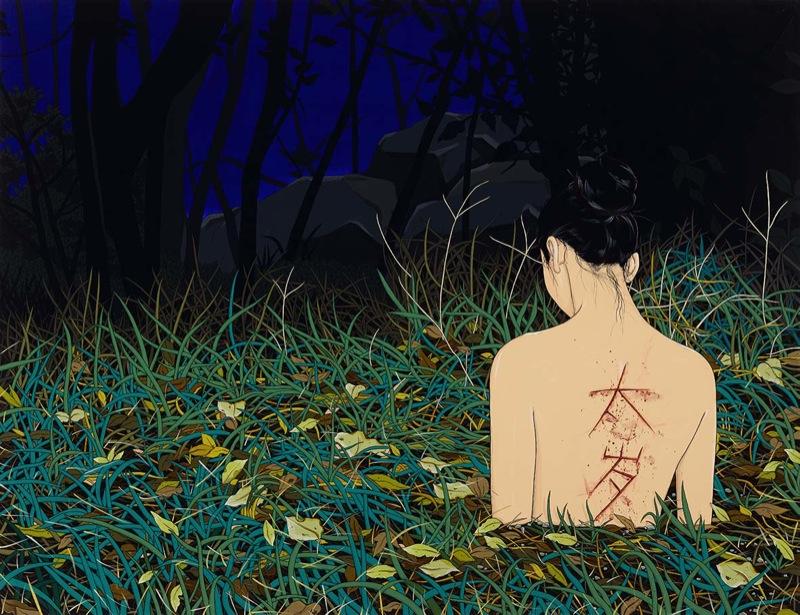
Chen Fei, 2014, acrylic on canvas
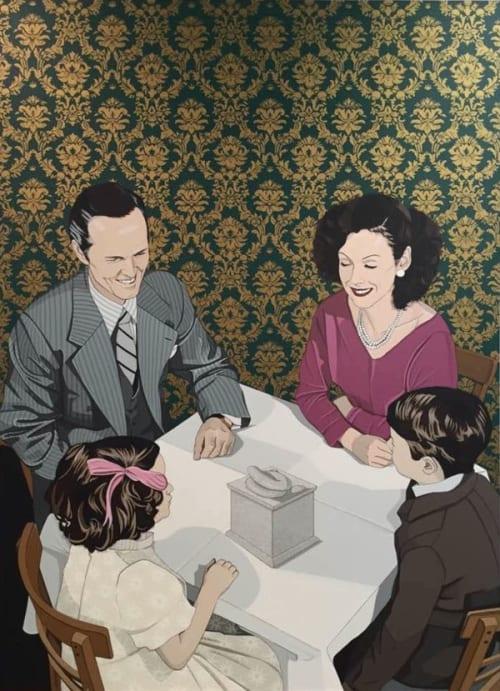
Chen Fei, The Charm of the Middle Class's Gaze, 2015, acrylic on canvas
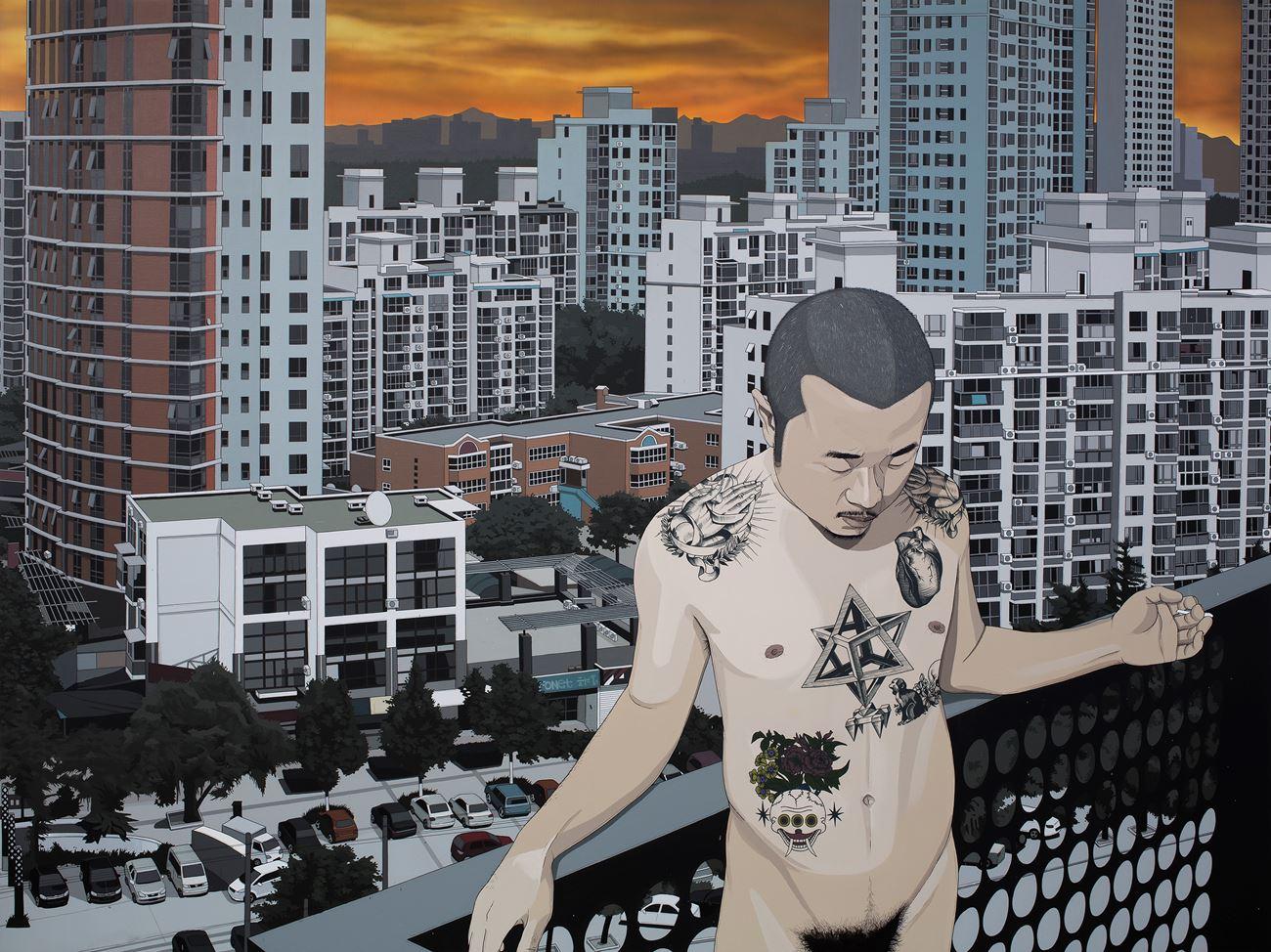
Chen Fei I am the Jungle, 2015, acrylic on linen
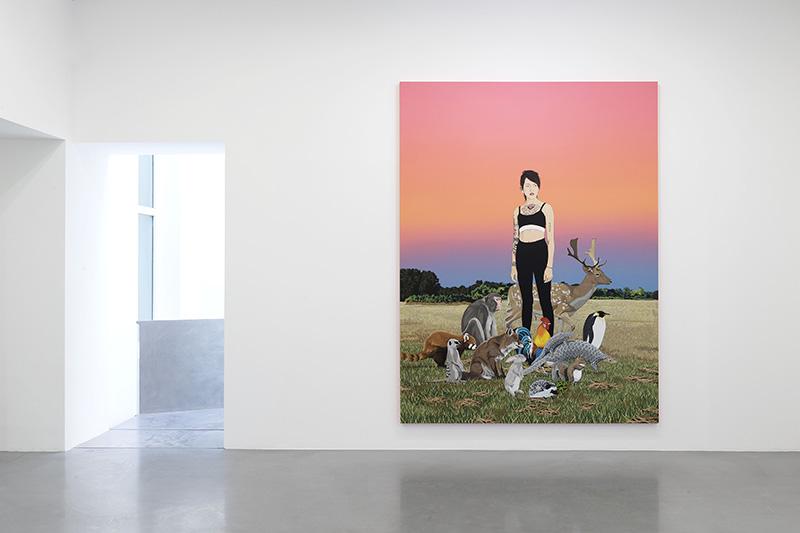
Chen Fei, Natural History, 2016, acrylic on canvas
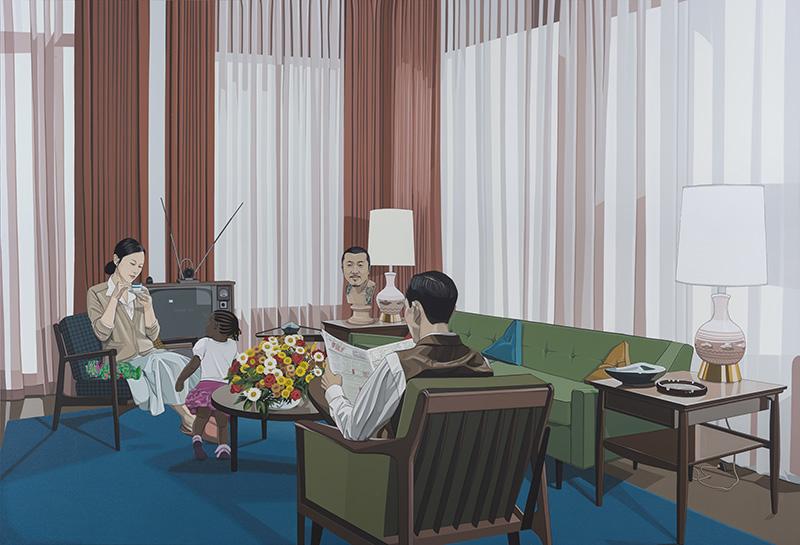
Chen Fei, National Conditions, 2017, acrylic on canvas
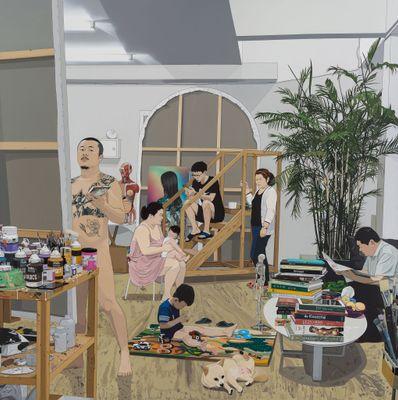
Chen Fei, Artist and family, 2018, acrylic on linen, Perrotin gallery
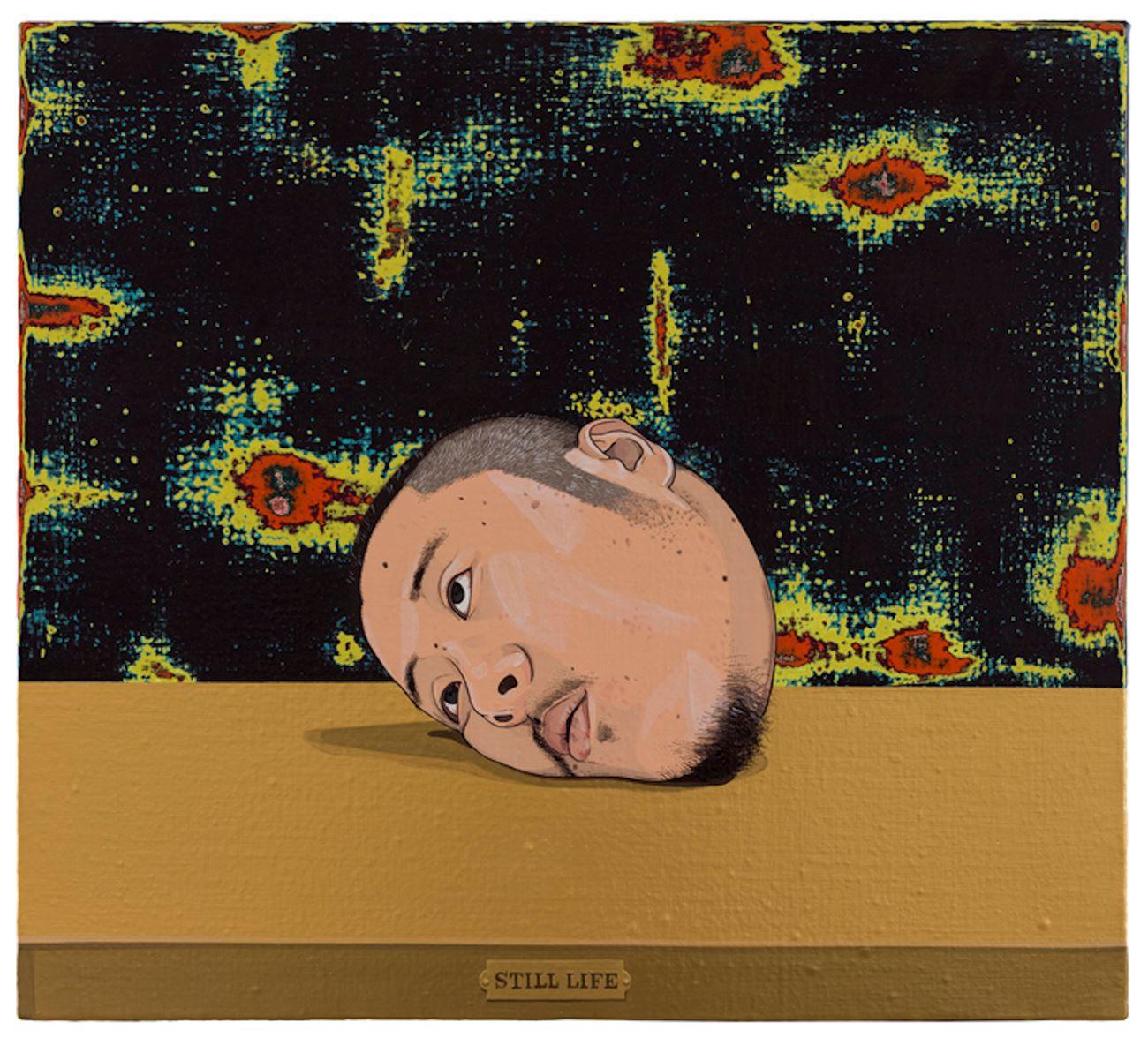
Chen Fei Portrait 2018, acrylic on linen
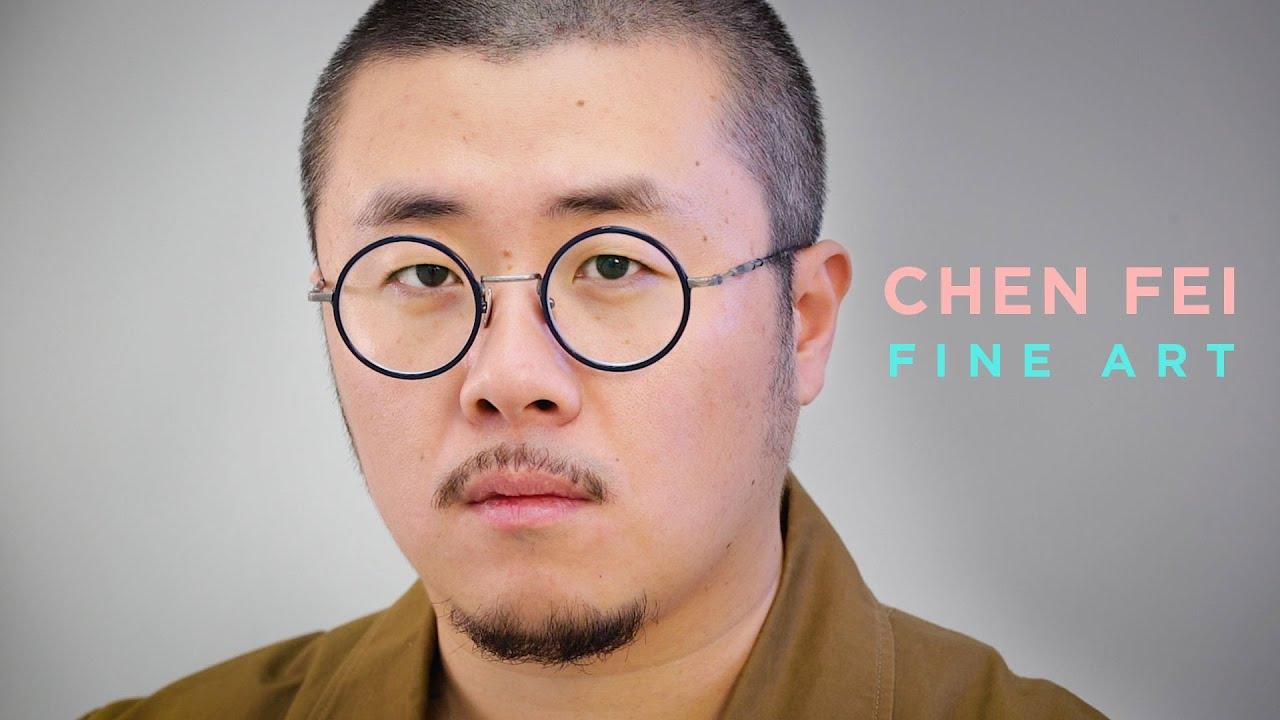
Chen Fei
CHEN FEI is a contemporary Chinese artist, firmly rooted in his post-1980 generation. He is one of the so-called ultra-contemporary artists.
With cumulative sales of $5,930,250, he ranked 298th in Artprice's ranking of the Top 500 contemporary artists in the world, by auction turnover in 2023.
The auction company Artron has listed no less than 14 works by Chen Fei sold for a total of more than $5 million.
PROFILE OF THE ARTIST
Chen Fei was born in Hongtong, Shanxi Province, in 1983. He was trained at the Beijing Film Academy; he graduated from the Department of Fine Arts (2005). He lives and works in Beijing.
His extensive knowledge of cinema has influenced his choice of subjects and compositional style in his paintings. Chen Fei's narrative paintings are fantasy constructions, often perverted, transposing elements of his personal life into surreal or hyper-real pastiches. The artist unveils a disturbing universe imbued with sex and pop culture, in which he is one of the main protagonists. With photographic precision, Chen Fei's works appear to have been created by computer or taken from a cartoon. Yet they are actually acrylic canvases.
"He almost systematically exhibits his own figure in his work, satirically hijacking the age-old tradition of the self-portrait to revisit the canons of Eastern and Western art history. The highly graphic quality of his lively compositions, which he sees as still images, contrasts playfully with the refinement of his highly meticulous, detail-oriented style. More interested in the impact of China's rapid economic growth on its now globalised culture, Chen Fei also looks at his country's collective taste and the evolution of society.
In 2021, the Yuz Museum in Shanghai presented "Morning Market," Chen Fei's first solo exhibition in Shanghai, in the YUZ Project Space of Art.
EXHIBITIONS
Chen Fei exhibits in major prestigious galleries abroad. After a presentation of the artist in Hong Kong in 2014 and in Paris in 2017, the Perrotin gallery organized a solo exhibition of Chen Fei in New York in 2019: "Reunion". It was his first major exhibition in America.
Chen Fei also participated in the group exhibition "Look at me" at the Perrotin gallery, Paris, in 2022.
PAST EXHIBITIONS
FANG LIJUN is a painter and printmaker who belongs to the younger generation of the Chinese contemporary avant-garde. He is also one of the initiators of the Chinese pictorial movement "Cynical Realism", which developed after the events of 4 June 1989 in Tiananmen Square. He is considered one of the most important figures in Chinese contemporary art.
Fang Lijun was ranked 7th in the Hurun China Art List 2023 with sales of $13.1m in 2023. With cumulative sales of $3,7 M, he ranked 385th in Artprice's Top 500 contemporary artists worldwide by auction revenue in 2023.
https://www.instagram.com/fang_lijun_studio/
ARTIST PROFILE
Fang Lijun was born in Handan, Hebei province, in 1963. He graduated from the Beijing Academy of Fine Arts in 1989. He also studied ceramics at the Hebei Light Industry Technical College. He currently lives in Tongxian, east of Beijing and in Yunnan province.
Fang Lijun's trademark image is a bald Chinese man with yellow or pink skin, a puffy face and thick features.
Fang Lijun began exhibiting his work in 1989, with the help of his childhood friend and critic Li Xiantang. His paintings were shown at the China/Avant-garde Exhibition, alongside those of other emerging artists from the Cultural Revolution. Following this exhibition, and thanks in part to his friend Li Xintang, his career took off.
After creating the bald young men in his 1988 Series, Fang Lijun began to paint these figures in different poses - yawning and smiling - as a reflection of the changes that Chinese society was undergoing at the time. In 1993, his work Series 2, N° 2 (1991-1992), commonly known as "The Yawn" or "The Howl," had the honour of appearing on the cover of the New York Times Magazine, giving Fang Lijun an international reputation. That same year, he was selected to exhibit at the 45th Venice Biennale and again at the 1999 Biennale.
From 11 November 2016 to 2 April 2017, the Musée Ariana in Geneva was showcasing Fang Lijun's ceramic installations, which are less well known than his paintings. "The artist starts with small polystyrene bricks, which he covers with porcelain and stacks one on top of the other. When fired, the polystyrene disappears, leaving only the ceramic structure.
Fang Lijun 'Art History Of Fang Lijun' from 29 October to 29 November 2017. This exhibition showcased the artist's artistic career spanning three decades with the iconic 'Bald Heads' series and his latest collections, installations and sculptures.
In 2023, his exhibition "Between Perfection and Destruction: Fang Lijun Porcelain Sculpture", showed nine porcelain sculptures – diaphanous, stacked modular constructions - which explore Fang’s interest in the state of flux between perfection and destruction. These were accompanied by preparatory ink sketches. In 2024, Asmoleum Museum in Oxford presented a maJor exhibition by Fang Lijun, Portraits and Porcelains.
EXHIBITIONS
Fang Lijun's first solo exhibition "Human Images in an Uncertain Age", was hosted in Tokyo in 1996 by the Japan Foundation Asia Center, making him the first contemporary Chinese artist to have a solo exhibition abroad.
The artist's most recent solo exhibitions include: 2024 Fang Lijun, Portraits and Porcelains, Asmoleum Museum, Oxford, UK; 2023 Between Perfection and Destruction: Fang Lijun Porcelain Sculpture, ESKENAZI, London, Fang Lijun Ceramic Works Exhibition, Sand Gallery, Level 6, The Grand Suites at Four Seasons, Macao, China, Fang Lijun: The Light of Dust(A Luz Poeirenta), Macao Museum of Art, Macao, China ; 2022 Wonderland - FANG LIJUN Ink painting, Xi'an Art Museum, Xi'an, China.
suite
Fang Lijun was one of the artists selected for the major exhibition 'Art and China' after 1989, Theater of the World', at the Guggenheim Museum in New York (Oct 6, 2017 - Jan 7, 2018).
YUE MINJUN
YUE MINJUN is a contemporary Chinese artist. He is best known for his paintings depicting himself in various settings, frozen in a hilarious grin. This image has become his signature, his logo, which he has reproduced in sculpture, watercolour and engraving. He is often associated with the "Cynical Realism" artistic movement that developed in China after 1989, but Yue Minjun rejects this label. He asserts his position as an independent artist.
In 2007, Yue Minjun's oil painting "Execution" (1995) was the most expensive work of art in the history of Chinese contemporary art, selling for €3.7 million at Sotheby's.
Yue Minjun was ranked 1076th in the top 5000 of the world's best-selling artists at auction, with a turnover of €908K in 2023. He was ranked 44th in the Hurun China Art List 2023, with a turnover of $2.160m.
https://www.instagram.com/yueminjun001/?hl=fr
NEWS
From 7 June to 27 October 2024, Yue Minjun presents "Garden of Smiles", at the Heydar Aliyev Center, in Baku, Azerbaijan. The exhibition presents Yue Minjun's iconic "self-portraits" and "flower" series - examples of paintings and sculptures.
PROFILE OF THE ARTIST
Yue Minjun was born in 1962 in Heilongjiang province. He started out as an amateur painter, before studying art at the Hebei Provincial Normal School from 1985 to 1989. He now lives in the village of Songzhuang on the outskirts of Beijing.
It was in the artists' community of the village of Yuanmingyuan, near Beijing, in the early 1990s, that Yue Minjun began to define his style and the contours of his main subject: laughter. In 1989, he had a revelation when he saw the laughing face of the painter Geng Jianyi exhibited in Beijing.
In the 2000s, Yue Minjun fed her style with multiple influences and developed new series such as Labyrinths, Re-portraits and Overlappings (2012). Over the years, his style has developed, with the artist often questioning social and cultural conventions, even dealing with political issues in a radical and abstract way. His self-portraits have been described by the theoretician Li Xianting as "a self-ironic reaction to the spiritual emptiness and madness of modern China".
His attachment to self-portraits stems from a simple idea, which he explains: "as I wanted to become a star painter quickly, I told myself that the best way to make myself known was to circulate my portrait as widely as possible. Then I realised that by systematically reproducing my face, I could get a lot of things across through the consistency of this image". He continues: "As I paint bursts of laughter, and therefore wide-open mouths, I'm obliged to fill them with rows of teeth. On the other hand, as I'm looking for a strong visual effect, the multiplication of these teeth, all very white, gives a striking image. It's similar to the close-up technique used in cinema, with the punch effect it creates. When we look at the experience of life on the one hand, with all its suffering, and on the other, at what could be the ideal existence to which everyone aspires, we realise that absurdity prevails. And the only way to cope with this discrepancy is to laugh about it. That's why smiling, laughing to hide your powerlessness, is so important to my generation," writes Yue Minjun.
In his painting "The Execution" (1995), inspired by Édouard Manet's The Death of Emperor Maximilian of Mexico (1868), all the protagonists are replaced by smiling figures, with a direct reference to the Forbidden City in the background. Similarly, in the series on the question of absence in the image, he reproduces identical paintings by the great masters of Western and Chinese painting, stripping them of all their characters. All that remains is the background, a veritable stage set revealing lunar landscapes and astonishing architecture. Invited to take part in the Venice Biennale in 1999, he chose to make bronzes of his self-portrait, parodying the terracotta sculpture of the army of the Qin dynasty. This dazzling coup opened the doors of the international art market to him.
From 30 March to 18 April 2017, the Lu Xun Academy of Fine Arts Museum (Shenyang, China), devoted a major solo exhibition to Yue Minjun, "Out of the Maze - Yue Minjun Solo Exhibition". It brought together no fewer than 61 paintings by the artist, 11 manuscripts and 15 sculptures, covering almost all of her series created in recent years.
On 13 July 2017, Vancouver Biennial hosted 'Day of Laughter' at Morton Park (English Bay), to honour Yue Minjun, the man behind one of the city's most iconic public art installations - Amazing Laughter - consisting of 14 bronze sculptures, giant smiling men, sporting Minjun's smiling face.
In his exhibition Eudaimonia (Beatitude) in 2023, Yue Minjun sought to underline the importance of the feeling of life through pictorial narratives, which was also reflected in his "Flower" series.
In May 2024, Yue Minjun was the first major contemporary artist to embrace the Bitcoin blockchain with a first-ever Ordinals collection "Human".
EXHIBITIONS
Yue Minjun's recent solo exhibitions include: 2023, Yue Minjun, Tang Contemporary Art, Seoul; 2022-2023 Yue Minjun, Eudaimonia, Tang Contemporary Art, Beijing; 2022 Chinese Contemporary - Yue Minjun "Smile-ism" Tribute, "Smile at the Flower Sermon", Tang Contemporary Art, Hong Kong, 2022 "Yue Minjun in Gwangju", Gwangju Art Museum, Gwangju, Korea.
Yue Minjun was one of the artists selected for the major exhibition 'Art and China' after 1989, Theater of the World', at the Guggenheim Museum in New York (Oct 6, 2017 - Jan 7, 2018).
Yue Minjun has participated in the 7th Shanghai Biennale, and other group exhibitions such as the 2017 Vancouver Biennale.
Yue Minjun had an exhibition at the Fondation Cartier in Paris in 2012.
PAST EXHIBITIONS
CUI RUZHUO
CUI RUZHUO is a Chinese painter renowned in his homeland for his ink paintings. The artist creates contemporary works while renewing the great Chinese tradition. He is best known for his majestic snow-covered landscapes, in a style very close to traditional Chinese art, and for his washes of mountains and lakes.
Cui Ruzhuo has been selling more and more, and is one of the top-selling artists in China, selling at high prices. In 2017, he sold a work 'Twelve Screens of Finger Ink Landscape' which fetched $35.7m (RMB 241m) at a Poly China HK auction. On 3 April 2016, Poly Auction Hong Kong sold a work by Cui Ruzhuo entitled "The Grand Snowing Mountains" (2013) for $36.6 million, a record for the auction house.
Cui Ruzhuo ranked second on the Hurun China Art List in 2023, with a turnover of US$16.6m. He ranked 59th in the Artprice rankings (auction sales revenue) in 2023, with a turnover of $33,761,070.
PROFILE OF THE ARTIST
Cui Ruzhuo was born in Beijing in 1944. As a child, he studied Chinese calligraphy and then painting with the painter Li Kuchan, one of the masters of traditional Chinese ink painting. He went on to teach at the Academy of Arts and Design in Beijing until he left for the United States in 1981. He was awarded an honorary doctorate in art by Dewey College in New York in 1984.
Cui Ruzhuo has now returned to his homeland, where he trains doctoral students at the Chinese National Academy of Arts.
Using Indian ink on paper, Cui Ruzhuo paints pictures inspired by the great classical Chinese masters, from which emanate great serenity. For over 10 years, he has specialised in "finger painting" (using the fingers as brushes and traditional Chinese rice paper as a support), a style of painting that could be seen in the Qing dynasty. He is very well known in China for his majestic snowy landscapes, in a style very close to traditional Chinese art, for his washes of mountains and lakes.
In April 2018, Cui Ruzhuo presented his exhibition entitled "Glossiness of Uncarved Jade", and a collection of "Paintings of Arhat" by Shi Tao (a Chinese painter from the early Qing dynasty) at the Liu Haisu Museum of Art, in Shanghai. The exhibition brought together around a hundred works by the artist, highlighting his talents as an ink wash painter.
EXHIBITIONS
Cui Ruzhuo's recent solo exhibitions include: 2021 "Glossiness of Uncarved Jade: Grand Exhibition of Cui Ruzhuo" in Macao Museum; 2018 "Glossiness of Uncarved Jade", Liu Haisu Art Museum, Shanghai; in October 2016 'Cui Ruzhuo: Glossiness of Uncarved Jade' in Moscow and in Saint Petersburg in September 2016. A major exhibition 'Cui Ruzhuo's 'finger-ink' show' was presented at the Palace Museum in Beijing from March to June 2016.
Cui Ruzhuo is passionate about Chinese art and is also a great collector. He has owned a museum in Beijing since 2007, and another in Ito, Japan, the first Chinese museum in Japan.
LIU WEI
LIU WEI is a visual artist who uses a variety of media: video, installations, drawing, sculpture and painting. He is considered one of the most talented artists in China's contemporary art scene. Liu Wei explores the contradictions of contemporary society and the transformations of cities and the urban landscape. In 1999, he was part of a group of subversive artists known as the Post-Sense Sensibility Group.
"Liu Wei is one of the greatest artists of his generation," says Michelle Yun, curator at New York's Asia Society Museum. "He is able to be present on the art scene within China as well as internationally.
On 16 May 2016 in Beijing, the Award of Art of China (AAC) was presented to Liu Wei.
He ranked 10th in the Hurun China Art List 2023, with sales of $12.1m. With cumulative sales of $4,745,690, he ranked 359th in Artprice's ranking of the world art market in 2023.
NEWS
Liu Wei and Ibrahim Mahama take part in the group exhibition 'Janus', which marks the opening of Berggruen Arts & Culture's permanent contemporary art space at Palazzo Diedo in Venice.
PROFILE OF THE ARTIST
Liu Wei was born in 1972 in Beijing, where he currently lives. He graduated from the China Academy of Art in Hangzhou in 1996.
The rapid urbanisation of the post-Mao period has greatly influenced Liu Wei's art. Since 2006, his work has focused on corruption, alienation and the immense verticality of a megacity's infrastructure. Liu Wei declares: "Cities are a reality; all of China is a city under construction and of course this influences me". Liu Wei's city has no history, and in this city a person can only experience "the chaotic present". In 2015, in an exhibition at the White Club in Hong Kong, he presented paintings, sculptures and videos in which he used shiny materials such as mirrors and polished steel, creating a certain architectural space through their refraction while destabilising the viewers' perception.
His work 'Indigestion' (2004) was a two-metre pile of tar, a petrochemical residue. His work 'Love it! Bite it!" (2005) depicted an urban scene with miniature buildings made of pieces of dried intestines, as found in dog shops, as well as in his work "Don't Touch". Liu Wei was surprised by the response to his work and the focus on the aesthetics of the buildings, which are above all symbols of power.
Liu Wei has also produced a series of art products that are in fact everyday objects. His Art Series such as "Anti-Matter" (2006) and "As Long as I See It" (2006) is made up of household objects such as washing machines, fans and televisions. In 2013 he produced a series of mugs for the Illy Collection (Netherlands) featuring images of stylised skyscrapers.
From 5 May to 16 June 2018, the Sean Kelly Gallery in New York presented "180 Faces". Comprising 180 unique 'portraits' of anonymous individuals, these paintings - in small format - draw on a range of the artist's influences, from Chinese calligraphy to expressionism, but above all Liu Wei is here making an extraordinary foray into completely new territory, that of portraiture. Placed inside white acrylic frames, each face presents itself "between familiarity and obscurity, between liveliness and death". Liu Wei's use of charcoal dismantles the portrait genre. The barely recognisable expressions and wise impressions of the figures, sometimes behind broken glasses, require both attention and distance from the viewer, making it difficult to internalise or empathise with their personal narratives.
In his last exhibition at White Cube Gallery in 2022-2023, Liu Wei explored the possibilities offered by digital processes and how they can be translated and adapted to the medium of painting, developing his long-term use of digital software to deconstruct, reorganise and reinterpret an image.
EXHIBITIONS
Liu Wei's first solo exhibition was organised by the Courtyard Gallery in Beijing in 2005. To date, the artist's largest exhibition was held at the Ullens Centre for Contemporary Art in February 2015.
Liu Wei's most recent solo exhibitions include: 2022 White Cube, West Palm Beach, Florida; 2021 Nuditá, White Cube Bermondsey, London; 2020 Over, Long Museum, Shanghai; 2019 Liu Wei: Invisible Cities, Museum of Contemporary Art Cleveland, Ohio; Cleveland Museum of Art, Ohio.
Liu Wei has taken part in numerous group exhibitions, the most recent being en 2024 : JANUS, Palazzo Diedo, Berggruen Arts & Culture, Venise, Italie.
A work by Liu Wei "Library III" is exhibited at the Pinault Foundation, Bourse du Commerce in Paris since February 2024.
PAST EXHIBITIONS
ZHANG XIAOGANG
ZHANG XIAOGANG is a contemporary Chinese artist and surrealist symbolist painter. He is famous for his Bloodline Series, stylised and often monochromatic (black and white) portraits of Chinese families, evocative of the Mao era. His paintings are seen as "portraits of the modern Chinese soul".
In 2012, at the Sotheby's sale of the Ullens collection in Hong Kong, a tryptic by Zhang Xiaogang fetched $10 million. 'Bloodline: Big Family No.9' sold at Phillips HK on 27 May 2018: HK$38,350,000. (US$4,889,625).
With cumulative sales of $9.6 million, he ranked 196th in the Artprice 2023 (Sales Revenues) ranking of the contemporary art market worldwide. He ranked 6th in the Hurun China Art List 2023, with sales of $16.9m.
https://www.instagram.com/xiaogangzhang/
PROFILE OF THE ARTIST
Zhang Xiaogang was born in 1958 in Kunming. In 1963, his family moved to Chengdu in Sichuan province. He graduated from the Sichuan Fine Arts Institute in 1982. He lives in Sichuan and Beijing.
Zhang Xiaogang uses his memory to recreate a highly personal version of his country's history. His portraits of imaginary families in his Bloodline, the big family series from the early 1990s, inspired by old family photographs, question the place of the individual in the family and in modern Chinese society, the aspirations and failures of the Cultural Revolution, as much as his own emotions. Often in black and white, his portraits translate the language of photography into painting.
In 1986, Xhang Xiaogang formed the South West Art Group with a number of his contemporaries. He began to make a name for himself in the 1990s. In 1994, he presented his series 'Bloodline: The big family' at the 22nd Sao Paulo International Biennial in Brazil and in 1995 at the Venice Biennial. After spending 3 months in Germany, where he met Gerhard Richter and other famous artists, he came up with the idea for his Bloodline series. His career took off in the 2000s: forced to export his oil paintings when China refused to accept any work recalling the Cultural Revolution, he became much sought-after by gallery owners and collectors in Taiwan, Hong Kong, Europe and the United States. He thus began an international career with a series of exhibitions abroad - in North and South America, Europe and Australia. In 2002, Zhang Xiaogang began his dream-like 'Amnesia and Memory' series which, like the 'Bloodline' series, examines the way in which memories are constantly recaptured in the present.
Zhang Xiaogang has become a landmark of contemporary Chinese art and a legend in his own right.
The artist is currently devoting himself to sculpture. His monumental sculptures of heads and busts are a perfect continuation of his Bloodline family portraits.
In his works presented at the Pace Gallery, New York, in September-October 2018, Zhang Xiaogang always used narrative scenes and portraits. The artist introduced collage compositions into his practice, tearing and layering paper material into textured works.
EXHIBITIONS
Zhang Xiaogang's recent solo exhibitions include: 2023 Zhang Xiaogang: Mayflies, Long Museum, West Bund, Shanghai, Chewing VI, Pace Gallery, Hong Kong, "Past", Pace Gallery, Hong Kong; 2022 Chewing Gum V, Pace Gallery HK, Little Things, Pace Gallery, Geneva; 2021 Zhang Xiaogang/RenRong: Ost-West Dialog, Osthaus Museum Hagen.
EXPOSITIONS PASSEES
Zhang Xiaogang was one of the artists selected for the exhibition 'Art and China' after 1989, Theater of the World', at the Guggenheim Museum in New York (Oct 6, 2017 - Jan 7, 2018.
AI WEIWEI
AI WEIWEI is one of the leading Chinese artists, working on the internationa art scene, a sculptor, performer, photographer, architect, curator, film-maker and blogger. He is both an artist and a social critic, with a prolific, iconoclastic and provocative body of work. He tackles head-on the question of social conditions in China and other countries, bearing witness to the upheavals in his country. He was one of 303 Chinese intellectuals to sign the manifesto, "Charter 08", on 10 December 2008.
In February 2015, his bronze sculptures representing the heads of the Zodiac were sold by Phillips in London for around $4.4 million.
Ai Weiwei was ranked 1442nd in the top 5000 of the world's best-selling artists at auction (Turnover 2023).
NEWS
The Galeria de Antiguidades e Arte São Roque presents "Ai Weiwei: 'Paradigm'", from 15 May to 31 July 2024. The exhibition includes 17 works of art and focuses on porcelain, a material widely considered and explored by the artist, as well as its nuances and links with the artistic heritage of Portuguese porcelain.
ARTIST PROFILE
Ai Weiwei was born in Beijing in 1957. In 1978, he was accepted at the Beijing Film University. In 1979, together with others, he founded the avant-garde contemporary art group "The Stars". In 1981, thanks to a network of contacts, he left for the United States, mainly New York, where he studied at the Parsons School of Design. In 1993, his father fell ill and Ai Weiwei moved back to Beijing. In 2011, he spent 81 days in detention after being arrested at Beijing airport as he was about to board a plane for Hong Kong. He was released on bail on 22 June 2011 and placed under house arrest, accused of tax fraud, deprived of his passport and banned from holding exhibitions. His studio in the suburbs of Shanghai was demolished in January of the same year. In August 2018, he announced that his studio in Beijing had been destroyed by the Chinese authorities, 3 months after leaving China. After living in Germany, he now lives in Portugal.
In the early 1980s, Ai Weiwei chose New York as his field of expression, photographing the world around him on a daily basis. He launched artistic performances and created conceptual art. He continued this practice in Beijing, where he returned in 1993, showing the many aspects of China's urban and social reality. His name has recently become famous for projects such as the 'Bird's Nest' - the Olympic stadium built for the 2008 Summer Olympics - for which he was artistic advisor to the Swiss architecture firm Herzog & de Meuron.
In May 2011, one of the artist's best-known works, 'Circle of Animals/Zodiac Heads' - 12 bronze sculptures representing the animals of the Chinese zodiac - was exhibited in front of the Pulitzer Fountain on Grand Army Plaza in New York City. The installation "Sunflower Seeds" was presented as part of the "Unilever Series", from 10 October 2010 to 2 May 2011, at the Tate Modern Museum in London. The work is made up of several million representations of sunflower seeds; it plays on Mao Zedong's famous metaphor that the Chinese people should turn towards him like sunflowers turn towards the sun. In 2017, Ai Weiwei built over 100 palisades around NYC - including 10 inside the city - a multi-site titled "Good Fences Make Good Neighbors". These were on view from 12 October 2017 to 11 February 2018. With these installations, the artist wanted to explore the trend towards and effects of borders currently being erected in society.
Ai Weiwei currently devotes much of his time to dealing with the sensitive subject of refugees in the world. In 2017, he made a documentary film entitled "Human Flow". He visited more than 40 refugee camps in 23 countries to make this first feature-length film. The film focuses on several trajectories of suffering men and women around the world. The film was shortlisted for the 2018 Oscars, among 170 documentaries.
A major retrospective exhibition "Ai Weiwei libero" was held at Palazzo Strozzi in Florence from 23 September 2016 to 22 January 2017. Alongside the exhibition, Ai Weiwei had hung an installation called "Reframe" made up of 22 rubber dinghies on the façade of Palazzo Strozzi. The aim was to draw attention to the plight of refugees in the Mediterranean.
Ai Weiwei has recently added the lego bricks to his work, which can be seen in his latest exhibitions.
EXHIBITIONS
Since the beginning of his career, Ai Weiwei has had numerous solo exhibitions and has taken part in over 150 group exhibitions, notably in the United States, Belgium, Italy, Germany, France, Spain, Australia, China, Korea and Japan.
Ai Weiwei's recent solo exhibitions include: 2024, Ai Weiwei - Neither Nor exhibition view Galleria Continua San Gimignano, Italy; 2023-2024 "Ai weiwei, In Search of Humanity", Kunsthal, Rotterdam, Netherlands; 2023 Ai Weiwei, Tang Contemporary Art, Seoul.
In 2022, Ai Weiwei presented a new Murano glass installation in Venice as part of the 59th Biennale, as well as an exhibition of paintings made from lego.
"Ai Weiwei: Entrelacs" was the artist's first major solo exhibition in France, at the Musée du Jeu de Paume in Paris in 2012. Invited to exhibit at the Paris department stores' Le Bon Marché in January 2016, Ai Weiwei created some magnificent window displays using symbols and light materials such as bamboo and sisal, plus a 'Childplay' exhibition inside the shop featuring kites, fabulous birds and dragons.
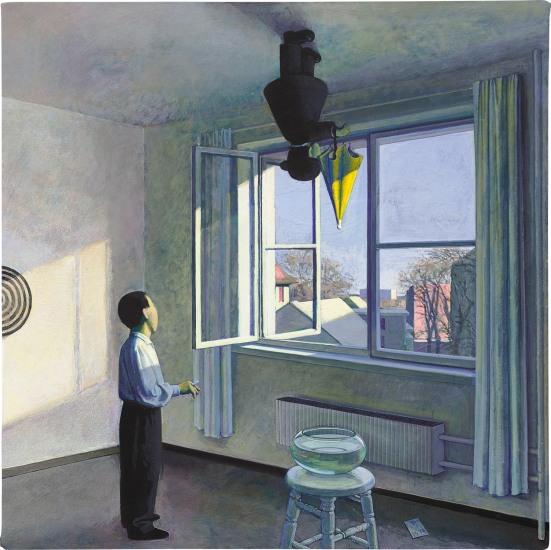
Liu Ye, The Second Story, 1995, oil on canvas, Private collection
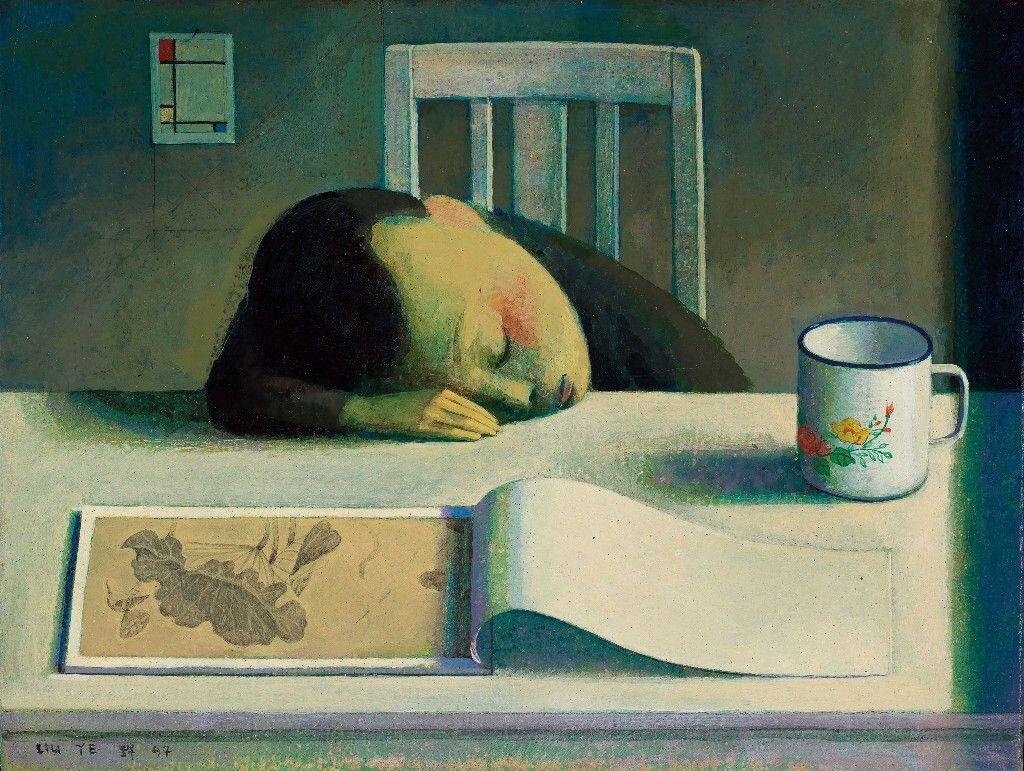
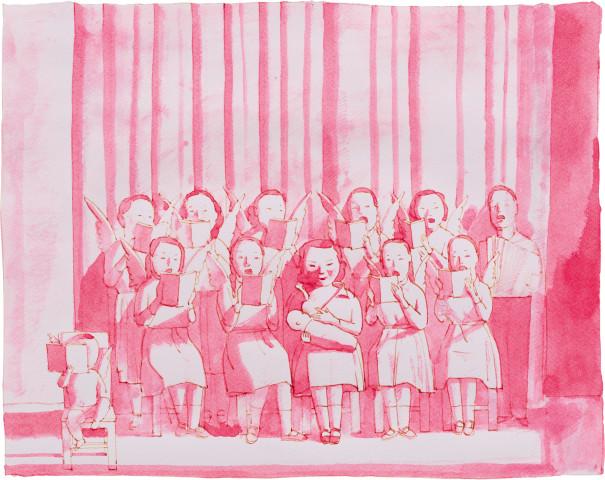
Liu Ye, Beijing Madonna, 1997, watercolour on paper
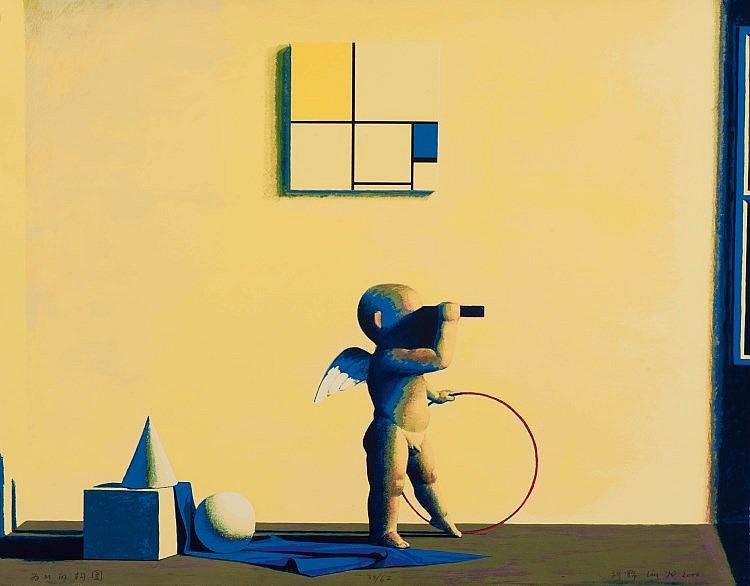
Liu Ye, For Mondrian Silkscreen printed in colours, 2000
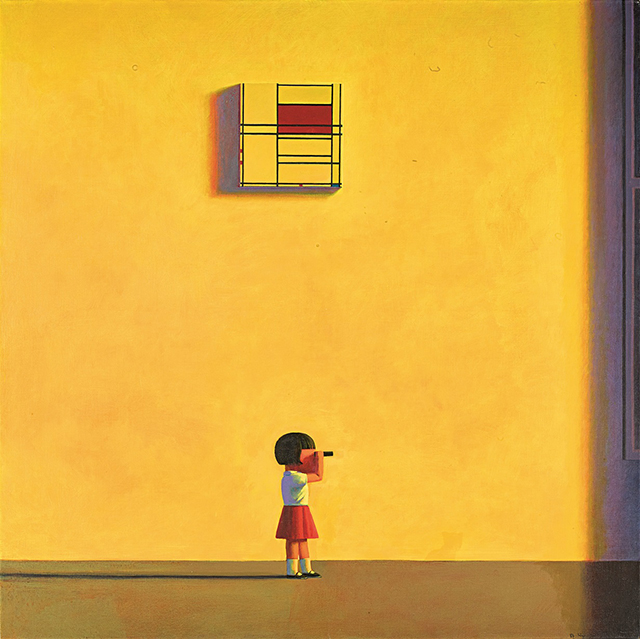
Liu Ye, Mondrian in the afternoon, 2001, acrylic on canvas

Liu Ye, Ruan Lingyu 3, 2002, oil on canvas, Sammlung Sigg, Mauensee
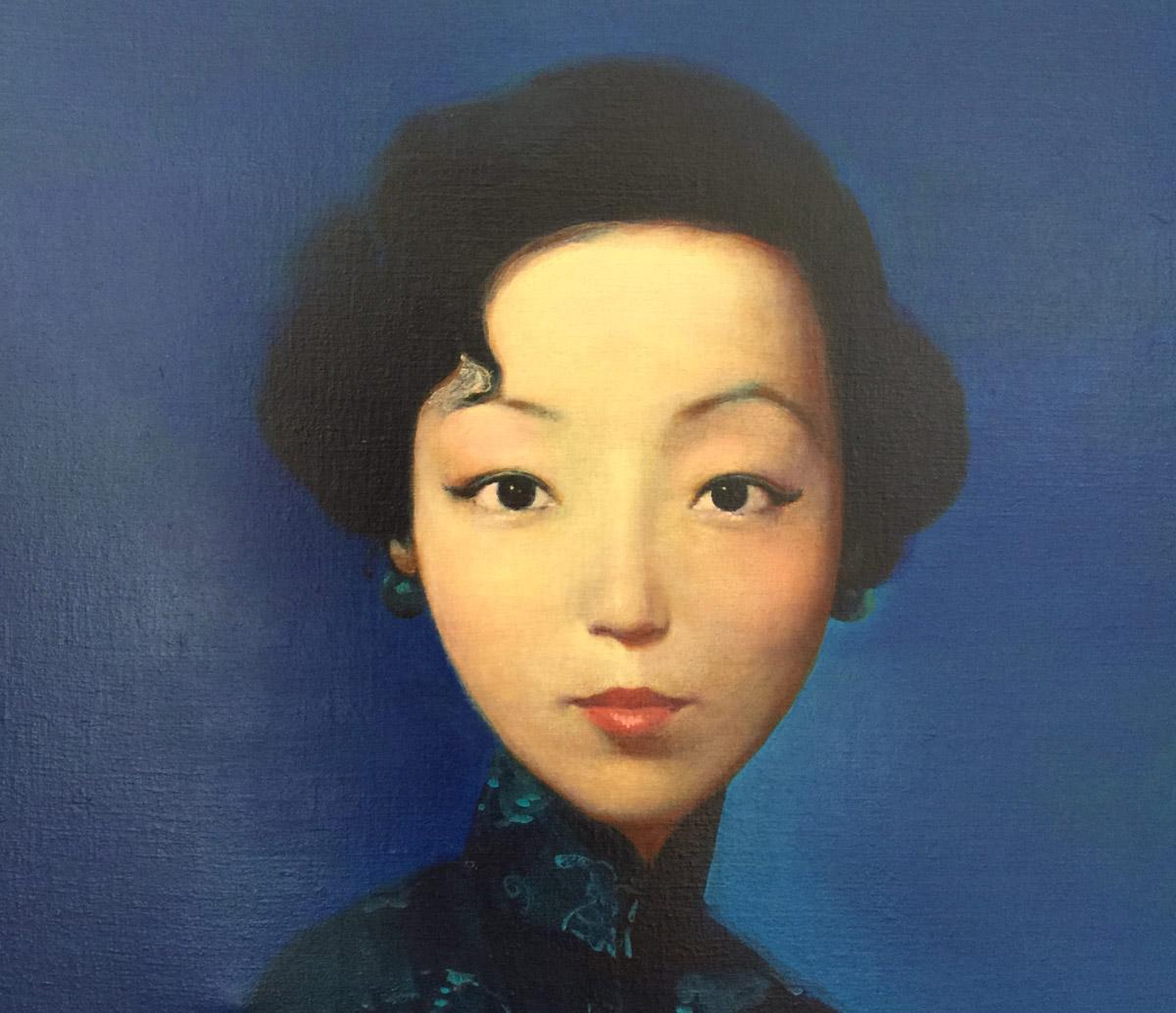
Liu Ye, Eileen Chang, 2004, acrylic on canvas, Yao-Chien-Taipei-Pechino, Courtesy Fondazione Prada
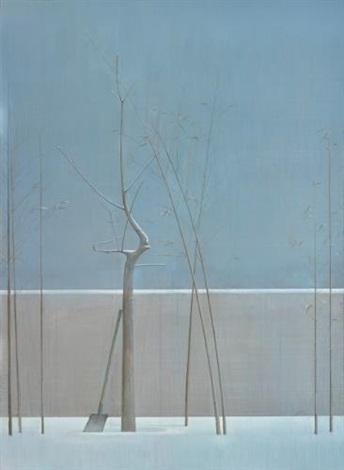
Liu Ye, composition with bamboo and tree, 2007, acrylic on canvas
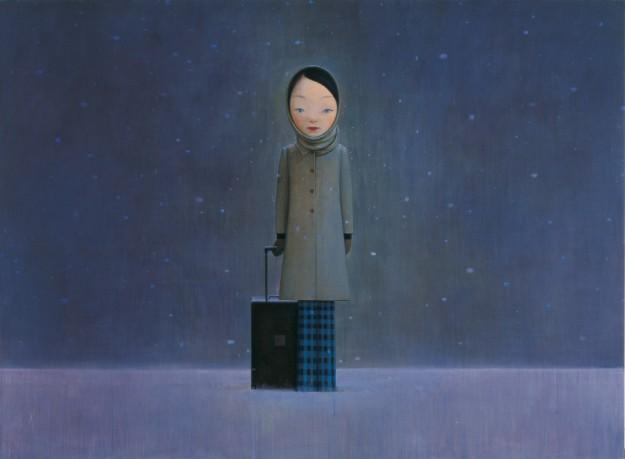
Liu Ye, Leave me in the dark Exhibition, 2009, Sperone Westwater gallery NY
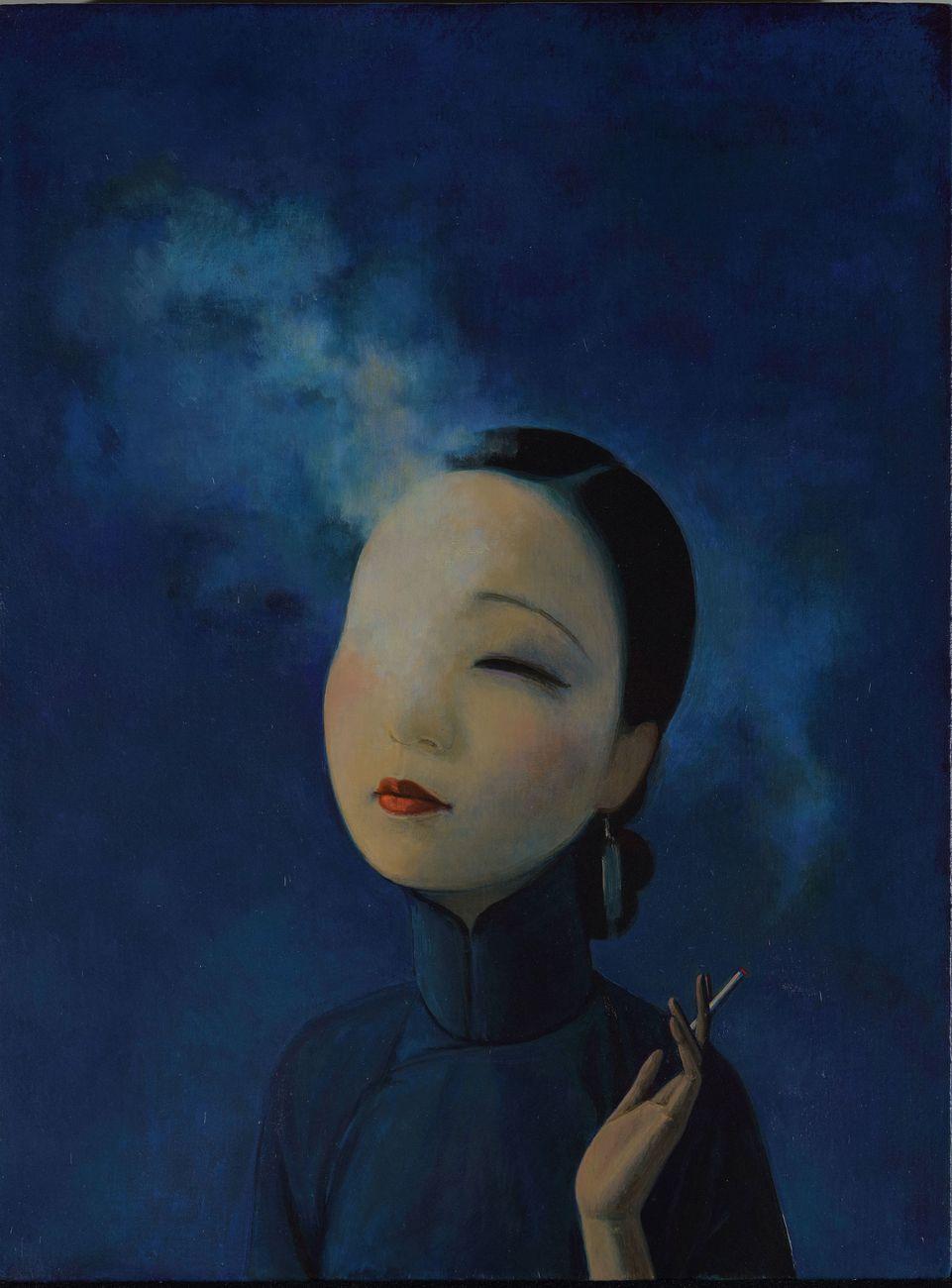
Liu Ye, The Goddess, 2018, acrylic on canvas, Collezione privata Berlino, Courtesy Fondazione-Prada
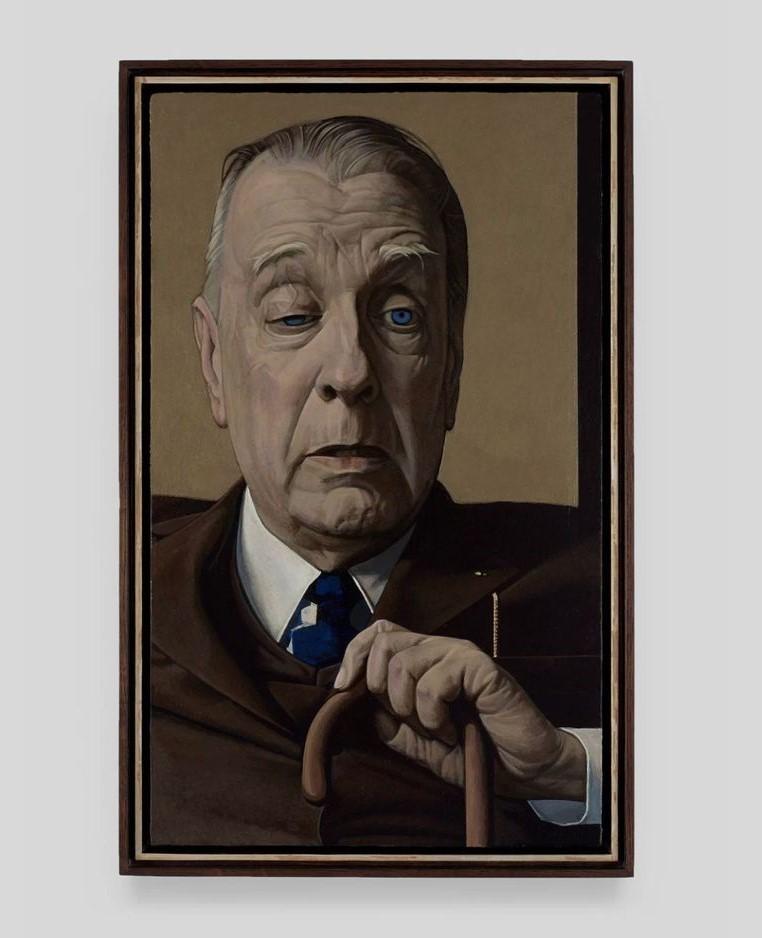
Liu Ye, Jorge Luis Borges, 2022 2023, acrylic on canvas, David Zwirner gallery

Liu Ye
YANG YONGLIANG
YANG YONGLIANG is a Chinese contemporary artist, photographer, painter, videographer and visual artist.
https://www.yangyongliang.com/
https://www.instagram.com/yangyongliang/?utm_source=ig_embed&ig_rid=b74c0f16-02a0-40f7-82a0-0961e600df52
NEWS
Hdm galerie presents an exhibition of Yang Yongliang's work 'Vanishing Shore' at the HOW Art Museum in Shanghai from 11 April to 11 August 2024.
PROFILE OF THE ARTIST
Yang Yongliang was born in Jiading, Shanghai, in 1980. At a very young age, he studied traditional Chinese painting with calligraphy master Yang Yang (professor at Hong Kong Chinese University). He studied visual communication at the Shanghai Arts and Crafts Vocational College in 1995. He graduated from the Shanghai Institute of Design, China Academy of Arts, (visual communication and design) (1999). In 2004, he set up his own studio with friends and began experimenting with ink painting, photography, short films and videos. He was a professor at the Shanghai Institute of Vision Art (2006-2008). He lives and works in Shanghai.
Yang Yongliang works with photography like a painter. "I used to paint traditional landscapes, but I felt that the Chinese style had reached a peak - there was no way to progress. I wanted to find a new, more contemporary medium that could capture the spirit of landscape painting. Digital photography seemed to be the answer," explains the artist.
The overall view of his work reminds us of a landscape, but a careful analysis, a zoom on a particular scene, shows an image made up of man-made forms and the representation of an urban context. The trees characteristic of classical paintings from the Song dynasty become metal trellises or poles from which power lines are drawn. "Yang Yongliang challenges our collective consciousness, questioning our economic, environmental and social problems, foreseeing the devastating effects of unbridled urbanisation and industrialisation in China and abroad," explains Paris-B gallery. "I despair at the pace of urbanisation in China - it's like witnessing a person's death," Yang Yongliang declared.
In 2006, Yang Yongliang began his Phantom landscapes series of photo collages. In his video Phantom landscape, the artist superimposed scenes of modern urban life onto images of peaks and waterfalls in a traditional Chinese landscape (shanshui, mountains and water) from the Northern Song dynasty. A powerful waterfall rushes down a busy street, but like an illusion or a ghost, the water does not flood the street and has no impact. At a medium distance, waterfalls cascade like Niagara Falls.
Artificial Wonderland II' (2014) features digital replicas of two major paintings from the Song dynasty, 'Travelers Among Mountains and Steams' (Fan Kuan) and 'Wintery Forest in the Snow'. This series marks a step forward for the artist in terms of digital technique, and here the images of mountains and rocks are those of Iceland and Norway.
In his 'Time Immemorial' series (2016), the contemporary urban imagery of total decomposition is still there: the mountains covered with giant ruined skyscrapers will soon be flooded by rising waters, covering more and more of the surface. In this series, "the original digitally created images are printed in negative on a sheet of fine art paper. Each image is then photographed with a traditional 8 × 10 inch silver camera," explains the Paris-B gallery. Finally, the hand-developed film is mounted on a backlit wooden case, in keeping with the artist's intention to preserve a digital image on traditional photographic film.
In his exhibition 'Time Immemorial' at Galerie Paris-B at the end of 2017, Yang Yongliang presented three new videos 'Journey to the Dark' (2017), 'Prevailing Wind' (2017) and 'Endless Streams' (2017), which used 4k technology for the first time.
Yang Yongliang has recently taken up filmmaking, releasing his first short film "Vanishing Shore" in 2024.
EXHIBITIONS
Yang Yongliang has had numerous solo exhibitions around the world since 2008.
Recent solo exhibitions include: 2024 Shan Shui Reboot: Re-envisioning Landscape for a Changing World, China Institute, New York, USA; 2023 Yang Yongliang: Vanishing Landscape! Sullivan+Strumpf, Singapore, Yang Yongliang: Imagined Landscape, Galerie Paris, Beijing, Paris; 2022 Imagined Landscape, Whitestone Gallery, Taipei, Taiwan, Reflection, UOB Art Gallery, Shanghai; 2021 Journey to the Dark II, Fotografiska, Stockhom, Sweden Imagined Landscape, Sullivan+Strumpf, Sydney, Australia Imagined Landscape, Matthew Liu Fine Arts, Shanghai, China
PAST EXHIBITIONS




